

A Journey Through India
by Kirsty | October 15, 2013 | India , Photo Essay | 10 comments
A Summary of our Trip to India with links to Diary Entries and Photographs
It’s taken a while but here is a roundup of the journey through India that we made earlier this year.
Back in January, we visited one of our favourite countries – “India again”. Those of you who know us well will understand this reference but for those who don’t – it became an “in” joke a few years ago when we’d tell family and friends where we were off to next … “Oh, India again” they’d reply in response. It’s not usual for us to visit a couple of times a year and so when we realised it had been a couple of years since our last trip, it was no wonder we were getting withdrawal symptoms!
When we started thinking about possible routes, we realised that our dates would coincide with one of the biggest festivals that takes place in India – the Kumbh Mela. It had always been on our ‘bucket list’ so India it was. We’ve written a few posts but if you missed them here is a summary of our route with links to the relevant diary entries and photographs.
Here is a map of our route. Our journey through India was Delhi – Mathura – Gwalior – Orchha – Lucknow – Allahabad – Varanasi – Bodhgaya – Calcutta, almost all it by train.
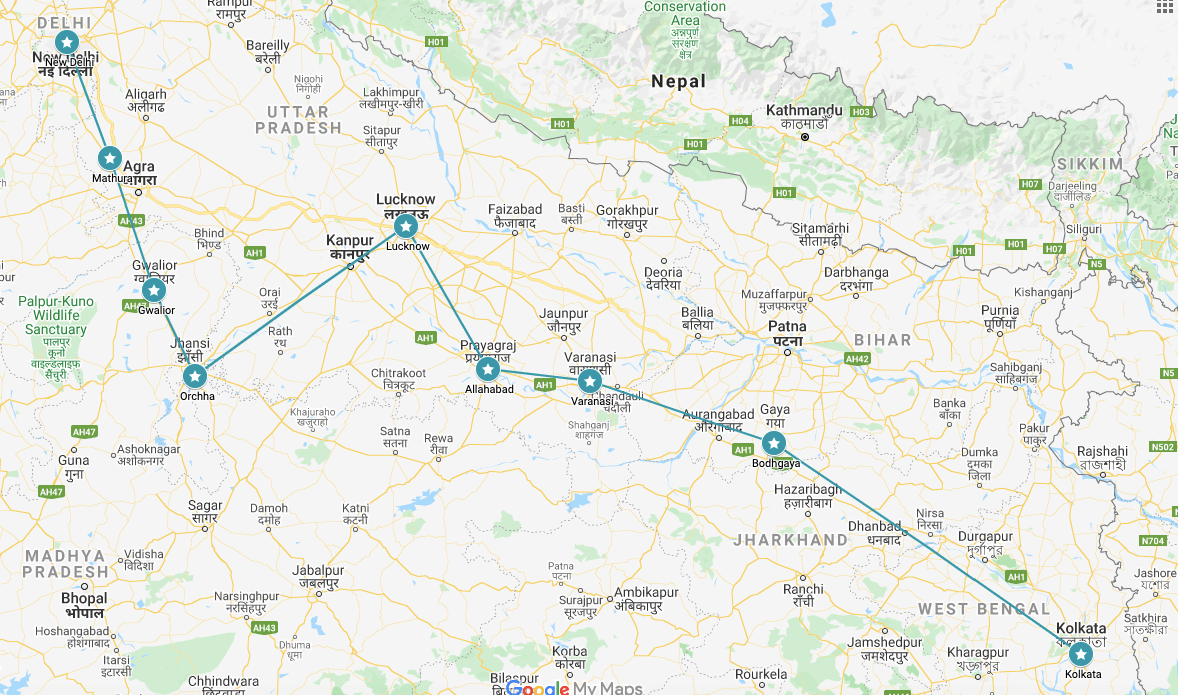
We landed in Delhi and the familiar sights, sounds and smells hit us as we stepped off the plane, as they always do. We’d chosen to stay in a part of the city different to any we’d stayed in before – partly to avoid the overpriced flea pits of the backpacker area of Paharganj and partly to be close to Nizamuddin Railway Station from where we would be leaving on an early morning train. I had identified a guest house in South Delhi and hoped, as we so often do when backpacking in India, that it wouldn’t be too dreadful. Arriving at the Hotel Kabli with low expectations we were pleasantly surprised. Sure, it was a simple room but it was CLEAN! My number one criterion for Indian hotels. Towels and toilet paper were provided (not a given!). Plus, there was hot water and free Wi-Fi. The owner, Inder, was friendly and welcoming and on hand throughout our stay to answer any questions we had. The local neighbourhood was an interesting place with plenty of places selling traditional snacks and lots of those little shops selling just about everything.
Whilst in Delhi we revisited some of our favourite cultural sights – the Jama Masjid mosque and Humayun’s Tomb – and made a first-time visit to Hazrat Nizam-ud-din Dargah (mausoleum) for the famous Sufi devotional singing. See how that worked out here .
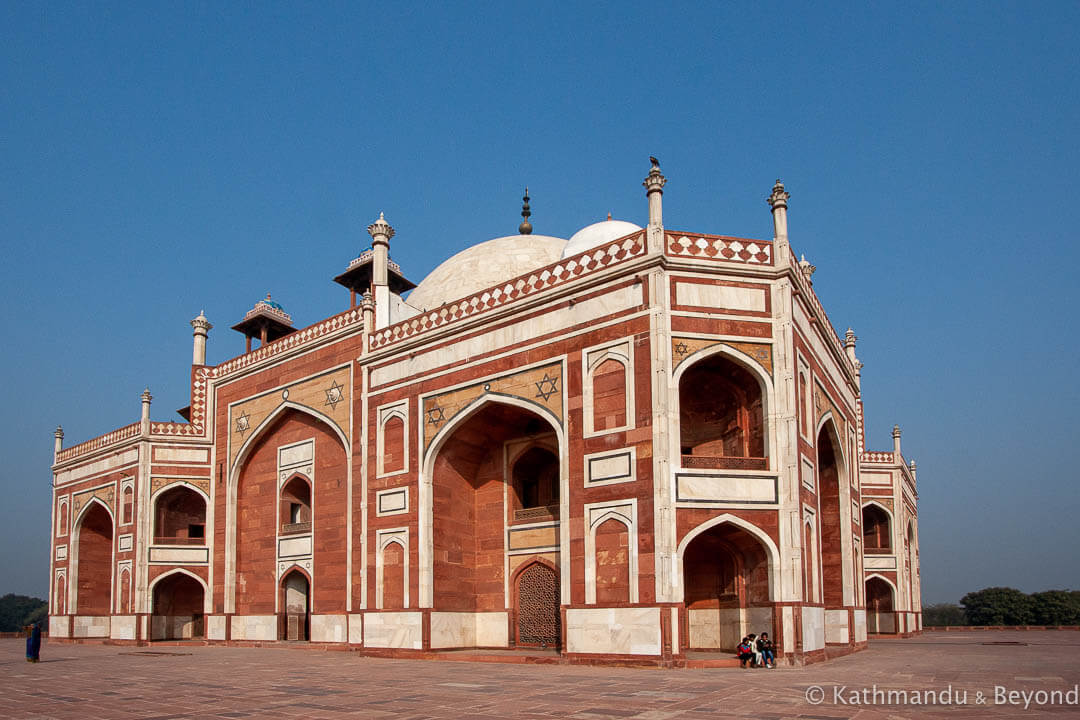
From Delhi, we caught the train to Mathura . Only a couple of hours from Delhi but a long way from the chaos and pollution of India’s capital. Mathura, on the banks of the Yamuna River, turned out to be a great town for exploring on foot – along the riverside ghats and the twisting alleyways of the town itself. Revered for being the birthplace of the Hindu god Lord Krishna, Mathura is a good place to develop a newfound respect for Hare Krishnas. And take a boat trip on the Yamuna River …
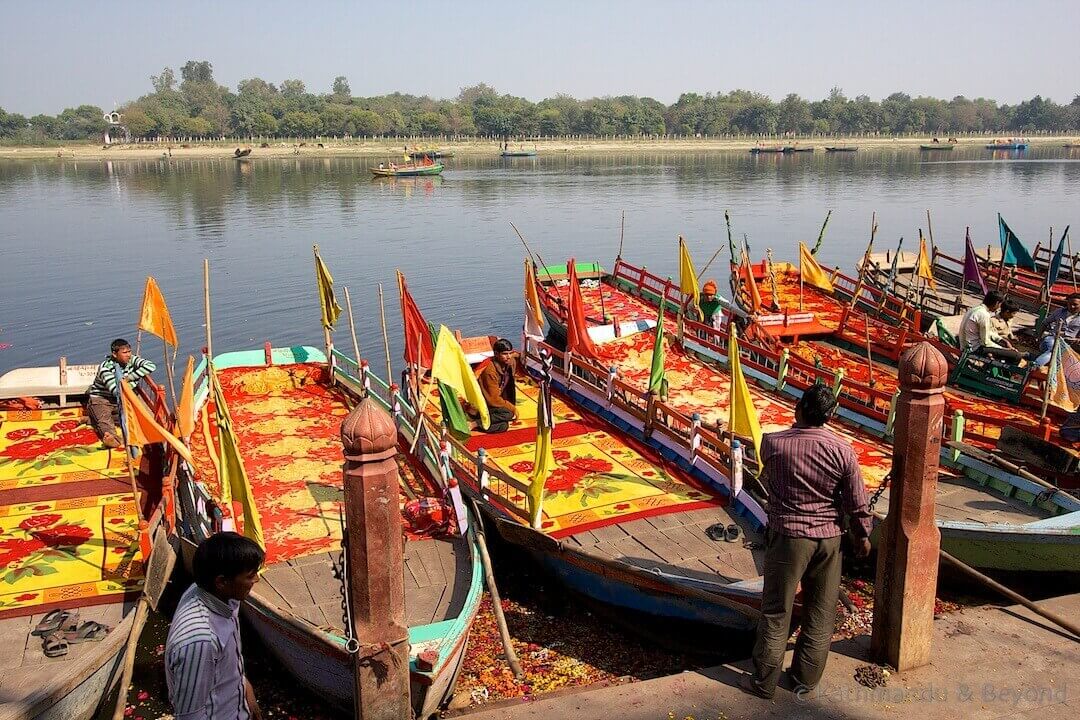
From Mathura we took the train to Gwalior – the town itself is not much to look at but the fort that rises above it is spectacular.
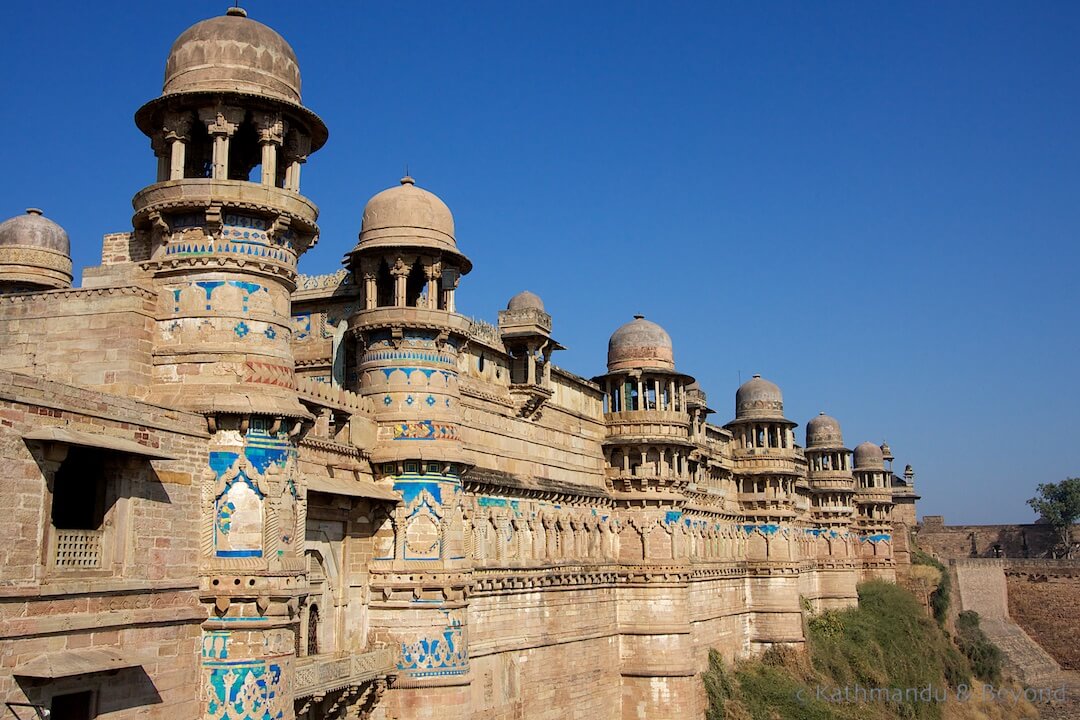
From Gwalior, it was a short train journey to Jhansi followed by an auto-rickshaw ride to Orchha , a stunning off-the-beaten-track destination which really is very accessible. More village-with-an-ancient-fort than town, Orchha is perfect for exploring on foot. A riverside setting, intact fort, vibrant temple, cobbled streets and friendly locals – we loved Orchha! We didn’t write a long blog post about it as we hope the photographs can do a better job so check out our photo essay of Orchha and let us know.
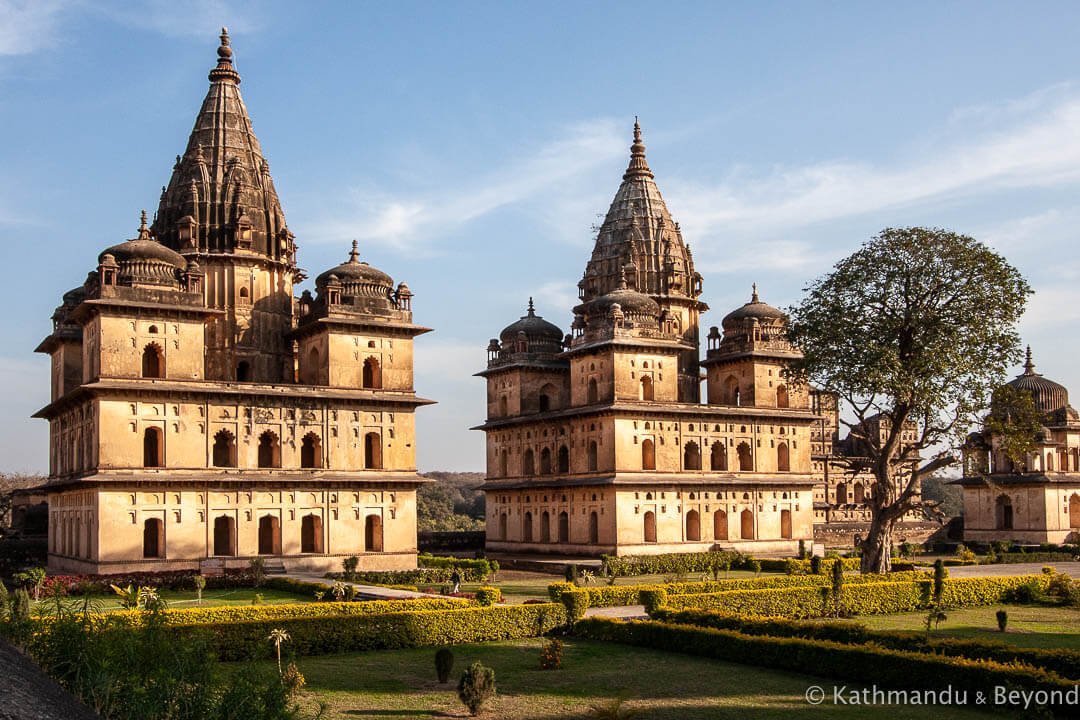
After a few days in Lucknow , full of Raj-era history and impressive Muslim architecture and site of the Indian uprising of 1857 and the Lucknow Siege, our next stop was Allahabad for the once in 144 years Kumbh Mela – read Mark’s post, Kumbh Mela: India’s Greatest Festival and find out if it lived up to the hype.
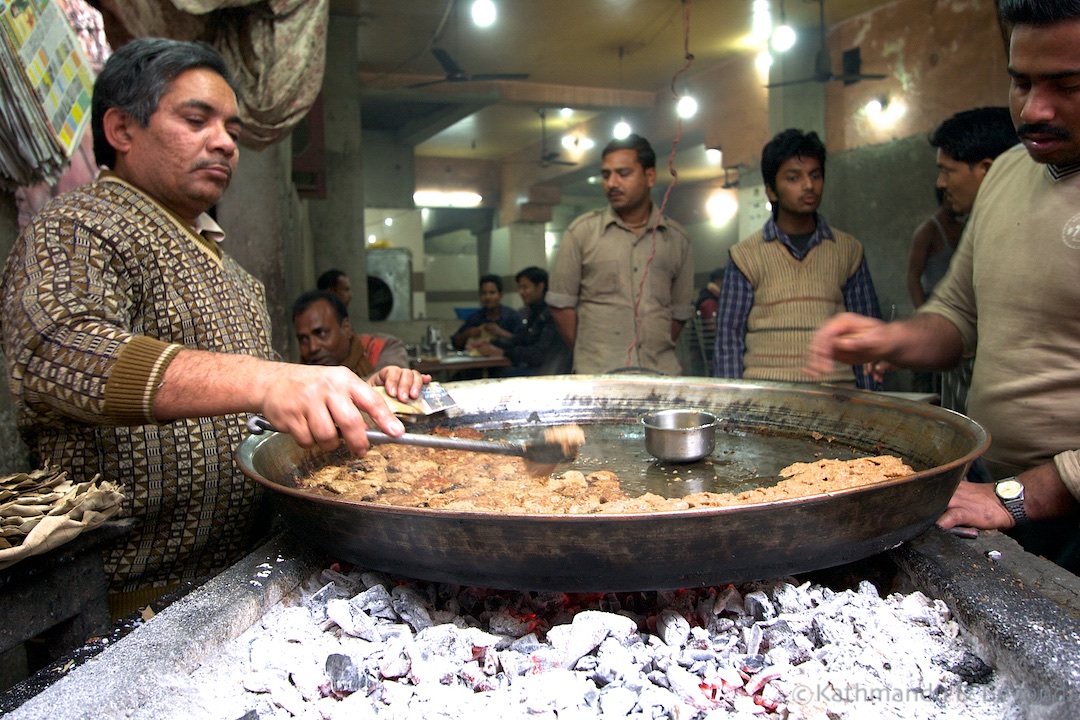
As if Allahabad wasn’t crazy enough, next we headed somewhere with a reputation as a “love it or hate it” place; an assault on every sense, and an experience many people end up declaring as their most intense in India … Varanasi . It had been several years since either of us had visited but we were happy to discover that we still love it and believe that Varanasi is a definite must-visit on any journey through India.
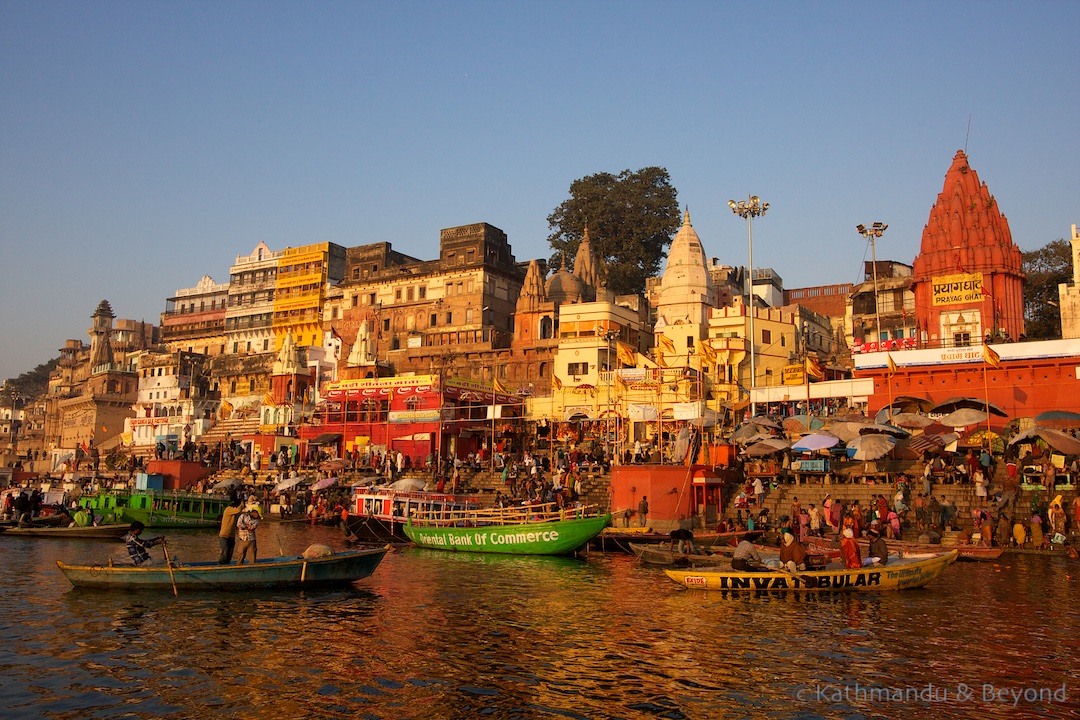
A sacred spot for Hindus, Varanasi was particularly busy with pilgrims who were combining it with a visit to the Kumbh Mela. The Kashi Vishwanath Temple is dedicated to Lord Shiva and the time of our visit coincided with a particularly auspicious time to visit the temple. When we arrived at the temple, we found queues of Indians from all over the country waiting to get in and we walked away from the temple to join the end of the line. We kept walking … Eventually, we asked someone how long they had been waiting. “Four hours” came the reply. Most reckoned their wait would be 6 to 8 hours! That was our minds made up. We didn’t want to queue that long to get into Venkateswara temple near Tirupati so, instead, we spent a couple of hours wandering up and down the queue talking to people and taking photographs. Everyone was in good spirits and keen to talk and pose for pictures despite the long wait ahead of them. Volunteers from the temple were handing out water and chai (sweet milky cardamom-infused Indian tea) and snacks to keep everyone fed and hydrated.
Varanasi’s ‘main attraction’ is its riverside ghats. Located on the sacred Ganges River, as with many cities in India, Varanasi has a few other names: Benares, Banaras and Kashi. Alongside the river run the ‘ghats’. A ghat is defined as “a broad flight of steps leading down to a body of water, particularly a holy river, used especially by bathers”. The area between the ghats and the town is a maze of narrow streets wide enough to fit a couple of pedestrians walking comfortably side by side.
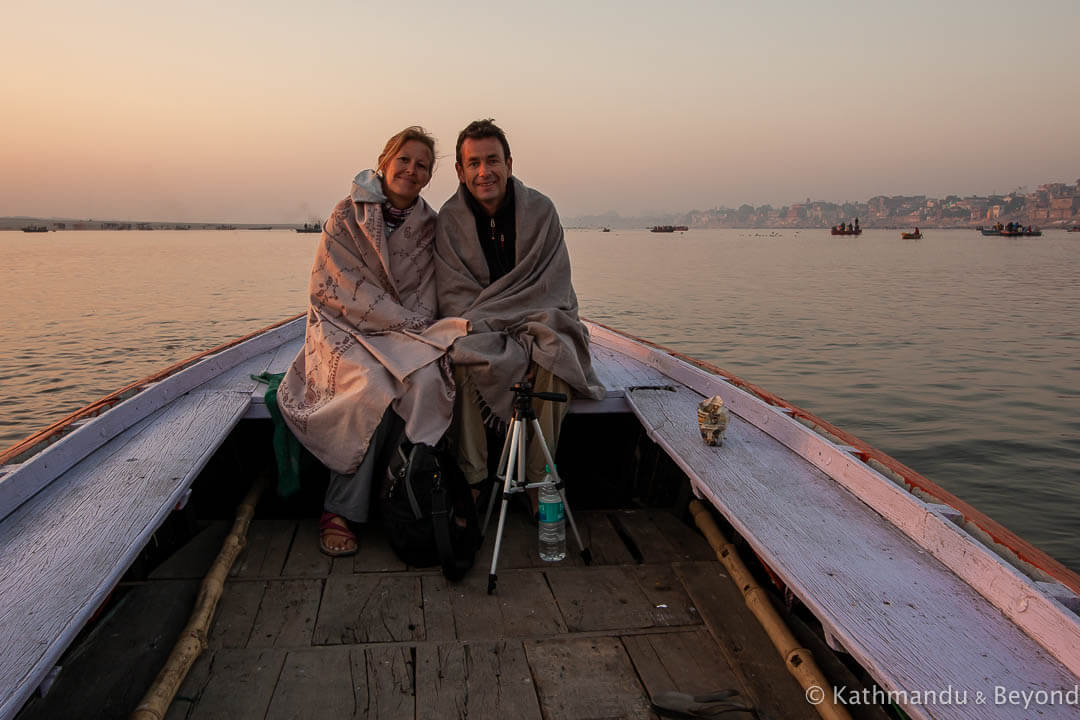
But India and comfort are rarely words used together unless you are travelling in style. The lanes are crammed with a mass of people, some on bicycles, rickshaws and cows all trying to go in about three different directions at the same time. All trying to avoid stepping in the cow shit except for the cows who don’t give a sh*t care. You can (and we did) spend days wandering along the ghats, through the alleyways and drifting up and down the Ganges in a rowing boat. Varanasi is one of those places that really lets you know you are in India.
But there was another face of the ghats that fascinated me – the ‘street’ art. All along the walls lining the river are colourful murals, mostly with spiritual and religious messages and this is what I chose to write about for our other Varanasi blog – Varanasi: Art on the Ganges .
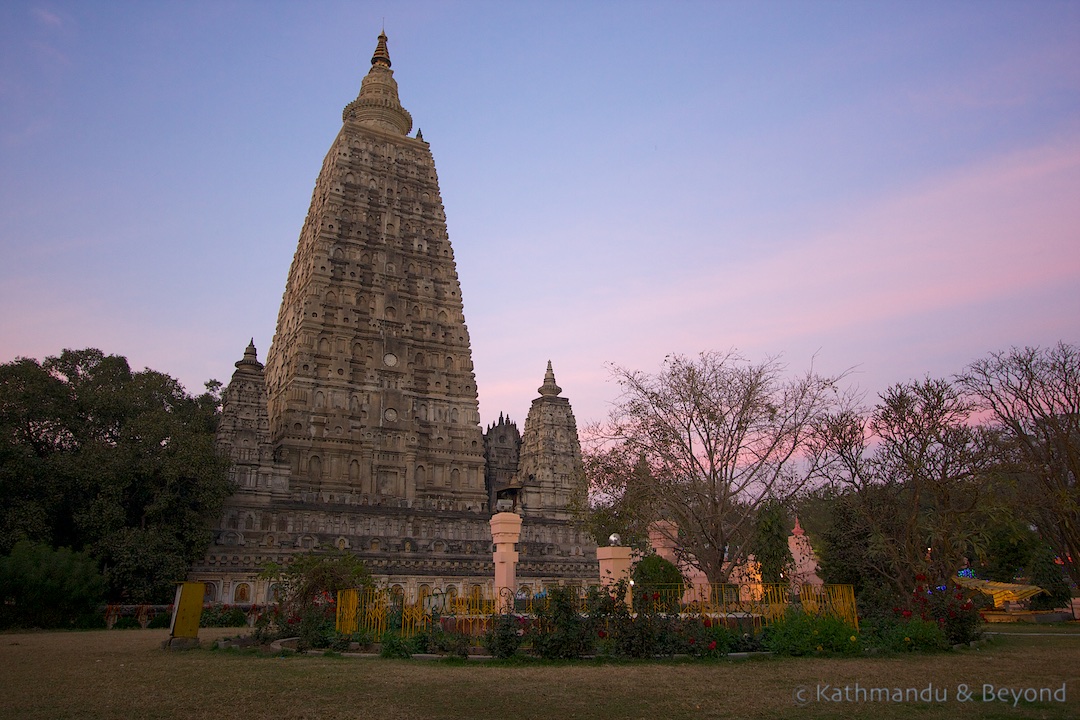
Our trip was turning into a bit of a tour of India’s varied religions. With Islam and Hinduism well-covered, we headed to Bodh Gaya – the place where Buddha attained enlightenment whilst sat underneath a Bodhi tree . This entry is all about how I got one of my most precious souvenirs yet . Our last stop on this particular India adventure was Calcutta , or Kolkata , as it’s correctly known these days. Again, this is a city that we’ve both visited before on more than one occasion but never seem to tire of exploring.
So, there you go, our India round-up. I hope you enjoyed reading about our time in one of our favourite countries.
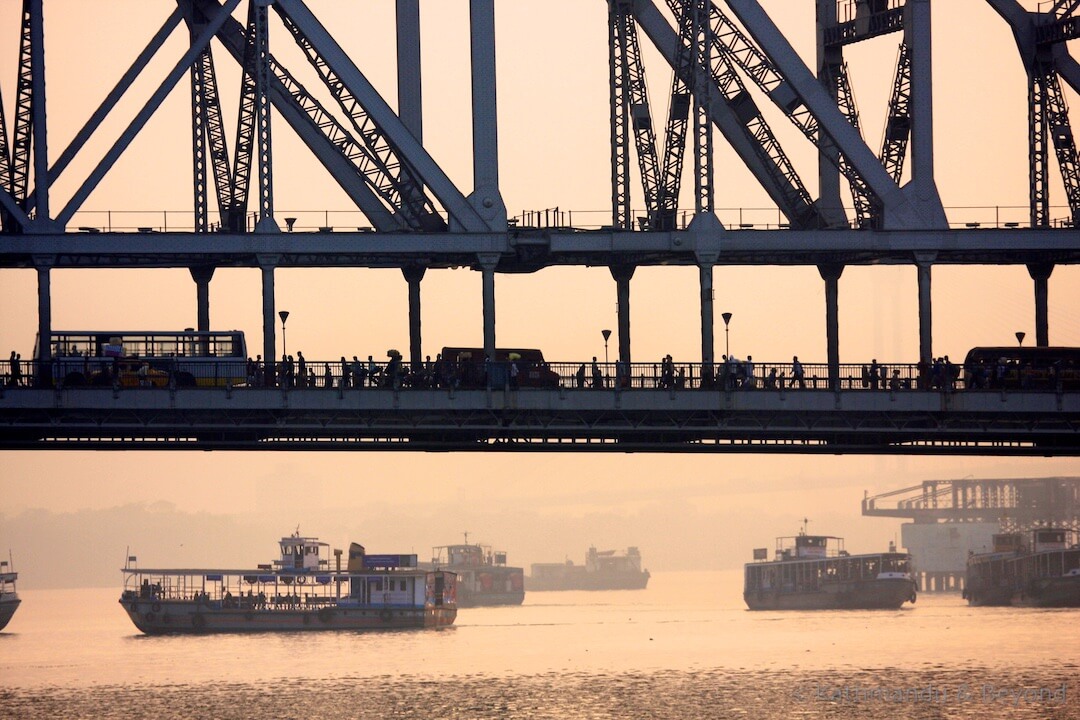
Join our mailing list to receive regular (but not too regular!) updates from the road less travelled.
We aim to send a monthly newsletter which includes a round-up of our newest posts featuring off-the-beaten-path destinations, unusual things to do, abandoned places, street art, and more. All designed to help you discover quirky and unusual things to do and see, and explore off-beat destinations.
Thank you for subscribing! Please confirm via the link in your inbox, in order to complete the subscription process.
We hate SPAM too and promise to keep your email address safe. You can unsubscribe at any time...
10 Comments
Beautiful photos of India! I always expect it to just look utterly chaotic and that definitely isn’t so with these photos.
Thank you! Oh, the chaos is definitely there too but it is possible to escape it.
Love that you took a tripod on the boat in Varanasi. LOL
Haha trust you to spot that! Errr … we had a particularly stable boat?
This looks like an amazing journey! Your photos are absolutely fantastic. Glad to have found your blog and thanks for sharing…safe travels!
Thanks so much for your comments Travis and thanks for taking the time to stop by! 🙂
For someone who is planning their first trip to India in 2014, this was an invaluable read and I know I will meander off on some of the included links. Thank you for the wonderful insight to Varanasi which is one of my must see destinations. This post was well written and illustrated, you have gained a regular reader.
Thank you so much for stopping by – I’m glad you enjoyed our round up. India is amazing – so diverse with so much to see and do. I’m sure you’ll love it!
Excellent blog. It is a very supportive and useful post. I would like to visit the post once more of its valuable content. Thanks for sharing this blog.
Fantastic. Glad you found it useful.
Trackbacks/Pingbacks
- Kumbh Mela: India's Greatest Festival | Kathmandu & Beyond - […] other!). On this occasion we both came up with a similar route and agreed we would travel from Delhi…
- Northern India Itinerary: Delhi to Kolkata by train | India Travel Guide - […] A Journey Through India […]
Submit a Comment Cancel reply
Your email address will not be published. Required fields are marked *
- The Cuban Missile Crisis: A Defining Moment in World History
- The Fall of the Berlin Wall: A Defining Moment in World History
- Exploring Nigerian Culture
- Discover the Impact of Susan B. Anthony on World History
- Knights and Chivalry
- Code of Conduct
- Armor and Weapons
- Medieval Life
- Health and Medicine
- Holidays and Celebrations
- Serfs and Peasants
- Kings and Lords
- City-States
- Gods and Goddesses
- Julius Caesar
- Industrial Revolution
- Impact on Society
- World War II
- Allied Powers
- Atomic Bomb
- World War I
- Treaty of Versailles
- Major Battles
- Leaders and Rulers
- Alexander the Great
- Queen Elizabeth I
- Napoleon Bonaparte
- Activists and Reformers
- Nelson Mandela
- Susan B. Anthony
- Mahatma Gandhi
- Scientists and Inventors
- Thomas Edison
- Marie Curie
- Albert Einstein
- Fall of the Berlin Wall
- Cuban Missile Crisis
- Civil Rights Movement
- Martin Luther King Jr.
- Segregation
- Climate Change
- Renewable Energy
- Greenhouse Effect
- Impact on Environment
- African Cultures
- Egyptian Culture
- Nigerian Culture
- Asian Cultures
- Japanese Culture
- Indian Culture
- Chinese Culture
- Latin American Cultures
- Aztec Civilization
- Mayan Civilization
- Inca Civilization
- Natural Disasters
- Tsunami in Japan
- Hurricane Katrina
- Pompeii Eruption
- Important Events
- Signing of the Declaration of Independence
- Discovery of Penicillin
- Moon Landing
- Cultural Achievements
- Renaissance Art
- Ancient Chinese Inventions
- Assessment Tools
- Projects and Presentations
- Writing Assignments
- Quizzes and Tests
- Teaching Methods
- Interactive Learning
- Primary Sources
- Role-playing
- Educational Resources
- Online Databases
- Educational Games
- Museums and Exhibits
- Photographs and Artifacts
- Government Documents
- Diaries and Letters
- Online Sources
- Websites and Blogs
- Digital Archives
- Books and Literature
- Historical Fiction
- Biographies
- Understanding Indian Culture: A Journey Through Time
- World Cultures
Welcome to a journey through the rich and diverse culture of India. From its ancient traditions to modern influences , this article will take you on an exploration of the customs, beliefs, and practices that have shaped Indian society over thousands of years. Situated in the heart of Asia, India is a land of vibrant colors, exotic flavors, and deep-rooted traditions. With its many religions, languages, and cultures, India is a melting pot of diversity and has a unique identity that sets it apart from the rest of the world.
In this article, we will delve into the history, customs, and values that make up the fabric of Indian culture. So, join us as we embark on a journey through time to understand the essence of Indian culture, its evolution, and its significance in today's world. Welcome to the vibrant and diverse world of Indian culture. In this article, we will take you on a journey through time to understand the rich heritage and significance of Indian culture. From ancient civilizations to modern-day practices, we will cover everything you need to know about this fascinating culture. India has a long and complex history, with evidence of human settlements dating back to 75,000 years ago.
The first major civilization in India was the Indus Valley Civilization, which flourished from 3300 BCE to 1300 BCE. This advanced society had well-planned cities, a sophisticated drainage system, and a writing system that is yet to be deciphered. The legacy of this civilization can still be seen in modern-day India, particularly in the northwestern region. In the centuries that followed, India saw the rise and fall of many dynasties, each leaving their mark on the country's culture. The Mauryan Empire (322 BCE-185 BCE) was one of the first major empires in India, established by Chandragupta Maurya.
Under the rule of Emperor Ashoka, it became one of the largest empires in the world at that time and played a crucial role in spreading Buddhism across Asia. The Gupta Empire (320 CE-550 CE) is considered the Golden Age of India, known for its advancements in science, mathematics, art, and literature. It was during this time that Hinduism became the dominant religion in India. The Mughal Empire (1526 CE-1857 CE) was another significant period in Indian history, with its capital in Delhi. Under the rule of Emperor Akbar, it saw a fusion of Indian and Persian cultures, resulting in magnificent architecture and art forms like the Taj Mahal and miniature paintings. Religion plays a significant role in Indian culture, with a diverse population practicing various faiths. Hinduism is the predominant religion, with over 80% of the population identifying as Hindus.
Buddhism, founded in India by Siddhartha Gautama, also has a significant following, particularly in the northern and eastern regions. Islam, brought to India by traders and Sufi saints, is the second-largest religion, followed by Christianity, Sikhism, Jainism, and Zoroastrianism. Indian society is deeply rooted in customs and traditions that have been passed down for generations. Festivals are an integral part of Indian culture, with each region and religion having its own unique celebrations. Diwali, Holi, Eid, and Christmas are some of the major festivals celebrated throughout the country. Food is another essential aspect of Indian culture, with each region having its own distinct cuisine.
Spices play a crucial role in Indian cuisine, adding flavor and aroma to dishes. Staple foods include rice, wheat, lentils, and vegetables, with a variety of meat and seafood dishes also available. Clothing in India is diverse and varies based on region, climate, and occasion. Traditional clothing for women includes sarees, salwar kameez, and lehengas, while men typically wear dhotis, kurta-pajamas, or sherwanis. Modern fashion trends have also influenced Indian clothing styles. The art and architecture of India are known for their intricate designs and vibrant colors.
Traditions and Customs
These traditions are deeply rooted in the country's history, religion, and social structures, and they play a significant role in shaping the lives of its people. From daily rituals to festive celebrations, every aspect of Indian culture is infused with a unique set of customs and traditions. One of the most prominent customs in Indian culture is the emphasis on family and community. Family ties are highly valued, and extended families often live together in the same household. This close-knit structure is reflected in various customs and traditions, such as joint family meals and celebrations. Religion also plays a crucial role in shaping Indian customs and traditions.
With a diverse population practicing various religions, India is a melting pot of customs and beliefs. From the colorful festivals of Hinduism to the serene rituals of Buddhism, each religion brings its unique set of customs to the table. The concept of hospitality is another essential aspect of Indian culture. Guests are treated with utmost respect and are considered a part of the family. This tradition is deeply ingrained in the culture, and it is not uncommon for strangers to be invited into homes for a meal or celebration. The concept of karma and reincarnation is also a significant influence on Indian customs and traditions.
Modern Influences
With the rise of social media, the spread of Western fashion and music, and the increasing popularity of English as a language, the traditional values and customs of Indian culture are gradually being replaced by more modern and westernized influences. One of the most noticeable changes in Indian culture is the shift towards a more individualistic society. With the increase in education and job opportunities, young Indians are becoming more independent and are breaking away from traditional family structures. This has led to a change in social dynamics, with a focus on personal growth and success. Modernization has also impacted Indian cuisine, with the introduction of fast food chains and processed foods. Traditional dishes are being replaced by more convenient and accessible options, leading to changes in eating habits and health concerns. Another aspect of Indian culture that has been influenced by modernization is religion.
Religion and Spirituality
With over 1.3 billion people, India is home to multiple religions, including Hinduism, Buddhism, Jainism, Sikhism, Islam, and Christianity. Each religion has its unique set of beliefs, rituals, and practices that contribute to the rich tapestry of Indian culture. Hinduism is the predominant religion in India, with around 80% of the population identifying as Hindus. It is a complex and diverse religion that encompasses a wide range of beliefs and practices. The key principles of Hinduism are dharma (duty), karma (action), samsara (reincarnation), and moksha (liberation).Buddhism, which originated in India, is another major religion followed by millions of people in the country.
It emphasizes the importance of achieving enlightenment through meditation and living a moral life. Jainism, one of the oldest religions in the world, promotes non-violence and compassion towards all living beings. Its followers believe in the concept of ahimsa (non-harming) and follow a strict vegetarian diet. Sikhism, founded in the 15th century by Guru Nanak, is a monotheistic religion that emphasizes equality and service to others. Its followers believe in the concept of one God and reject the caste system. Islam is the second-largest religion in India, with around 200 million followers. It was brought to India by Arab traders and flourished under the Mughal Empire.
The religion follows the teachings of Prophet Muhammad and emphasizes the importance of prayer, charity, and submission to God. Christianity was introduced to India by Saint Thomas in the 1st century and has since spread across the country. It is the third-largest religion in India, with over 28 million followers. Christians in India come from a variety of backgrounds and belong to different denominations, including Catholic, Protestant, and Orthodox. Religion in India is not just a set of beliefs and practices; it is a way of life. It influences every aspect of society, from festivals and rituals to food and dress.
A Glimpse Into History
It was founded by Chandragupta Maurya and became one of the largest empires in ancient India. The Mauryan rulers were known for their religious tolerance and administrative efficiency. The Gupta Empire, which ruled from 320 CE to 550 CE, is considered the golden age of Indian culture. It was a time of great prosperity, advancements in science and mathematics, and flourishing art and literature. The Mughal Empire, which reigned from the 16th to 19th centuries, had a significant impact on Indian culture. The Mughals brought with them their own customs and traditions, which blended with the existing Indian culture to create a unique fusion.
They also left behind some of the most magnificent architectural marvels, such as the Taj Mahal. Today, India is a diverse mix of various cultures, religions, and traditions, all of which have been shaped by its rich history. From the vibrant festivals to the mouth-watering cuisine, every aspect of Indian culture has a story to tell. By exploring the different dynasties and empires that have ruled India, we can gain a deeper understanding of the country's cultural heritage and its significance in the modern world. As we come to the end of our journey, we hope that you have gained a deeper understanding and appreciation for Indian culture. It is a land of rich heritage, diverse beliefs, and vibrant traditions. Whether you are interested in history , religion , or modern-day influences, India has something to offer for everyone.
New Articles

- The Power of Online Databases: Unlocking the Secrets of World History
Discover the Richness of World History with Online Databases

- Understanding Tsunami in Japan
A comprehensive look at the natural disaster that shook Japan and affected the world.

- Museums and Exhibits: Unlocking the Secrets of World History
A comprehensive look into the educational resources and historical figures found in museums and exhibits around the world.

Uncovering the Complexities of Nigerian Culture: A Comprehensive Look at the People, Customs, and Traditions
Top Articles

- Inventions Throughout History: A Journey Through the Modern Era and Industrial Revolution

- The Discovery of Penicillin: Uncovering the Life-Saving Antibiotic

- Julius Caesar: The Life and Legacy of a Roman Emperor

- Textbooks: A Comprehensive Resource for Understanding World History
- Understanding the Crusades: A Journey Through Medieval Times
- The Marvelous Pyramids of Ancient Egypt: An Introduction to One of the World's Greatest Wonders
- Discovering the Genius of Thomas Edison
- The Life and Legacy of Mahatma Gandhi
- A Journey to the Moon: Exploring the History of the Moon Landing
- Diaries and Letters: Exploring Primary Sources of World History
- Understanding Serfs and Peasants in Medieval Times
- Martin Luther King Jr.: A Champion for Civil Rights
- The Impact on the Environment: Understanding the Effects of Climate Change
- Writing Assignments: A Comprehensive Guide to World History Education
- Exploring World History Through Interactive Learning
Napoleon Bonaparte: The Rise and Fall of a Revolutionary Leader
- Discovering Egyptian Culture
- Exploring the Life and Reign of Queen Elizabeth I
- Exploring the Rise and Fall of the Empire: A Journey Through Ancient Rome
- Exploring the Fascinating Mayan Civilization: A Journey Through Time
Uncovering the Mysteries of Mummies
- Alexander the Great: The Legendary Leader Who Conquered the World
- A Brief History of Factories in the Modern Era
- Understanding the Causes of World War I
- Discovering the Richness of Japanese Culture
- Exploring Primary Sources in World History
- The Devastation of Hurricane Katrina: A Look Back at One of the Deadliest Natural Disasters in World History
- Understanding Historical Fiction: A Comprehensive Overview
- Discovering Daily Life in Medieval Times
- Understanding Segregation: A Comprehensive Look at Global Events and the Civil Rights Movement
- A Brief History of Major Battles in World War I
- A Journey Through History: Exploring Digital Archives
- Exploring the World of Manors
- The Fascinating World of Biographies: A Comprehensive Look into Historical Figures and Events
- Health and Medicine in Medieval Times: Exploring the Connection between Body and Mind
- Discover the Richness of Chinese Culture
- A Brief Overview of Albert Einstein's Life and Contributions
- Understanding the Code of Conduct in Medieval Times
- Exploring Ancient Chinese Inventions
- Understanding the Allied Powers in World War II
- The Fascinating World of Renaissance Art
- The Impact and Significance of the Treaty of Versailles in World History
- The Fascinating World of the Inca Civilization: A Journey Through Latin American Cultures
- A Journey Through the City-States of Ancient Greece
- Exploring the Rich History of the Aztec Civilization
- Exploring the World Through Educational Games
- Understanding the Impact of the Atomic Bomb
- A Fascinating Look into the World of Pharaohs
- Exploring the World of Gods and Goddesses
- Nelson Mandela: A Leader in the Fight for Equality
- Exploring World History Through Government Documents
- The Power of Role-Playing: Exploring World History Through Immersive Education
- Websites and Blogs: A Comprehensive Overview of World History Resources
- The Signing of the Declaration of Independence: A Pivotal Moment in World History
- Podcasts for Exploring World History
- The Devastating Pompeii Eruption: A Comprehensive Look into One of the World's Most Notorious Natural Disasters
- Understanding Quizzes and Tests in World History
- Holidays and Celebrations: Exploring World History Through Medieval Times
- Impact on Society During the Industrial Revolution
- The Rise and Fall of Gladiators in Ancient Rome
- A Brief Overview of the Fascinating Inca Civilization
- A Brief History of Kings and Lords: Exploring Medieval Times and Feudalism
- Photographs and Artifacts: Exploring the Past Through Primary Sources
- Rosa Parks: The Mother of the Civil Rights Movement
- Understanding the Greenhouse Effect: An Overview of Global Climate Change
- Exploring the World of Renewable Energy
- The Cold War's Impact on the Space Race: A Comprehensive Overview
- Marie Curie: A Pioneer in Science and History
- Exploring the Fascinating World of Armor and Weapons
- Exploring Projects and Presentations in World History
An Overview of Mythology in Ancient Greece

Which cookies do you want to accept?
The Travels of Ibn Battuta
Introduction.
Welcome to this tour of Ibn Battuta's medieval travels!
You will be following in the footsteps of this famous 14th century Muslim traveler, exploring the places he visited and the people he encountered. To help you learn more about his adventures there will be images of the people and places he saw, information on the food he might have tasted, and "side trips" into the past and future.
Ibn Battuta started on his travels in 1325, when he was 20 years old. His main reason to travel was to go on a Hajj, or a Pilgrimage to Mecca, to fulfill the fifth pillar of Isla.. But his traveling went on for around 29 years and he covered about 75,000 miles visiting the equivalent of 44 modern countries which were then mostly under the governments of Muslim leaders of the World of Islam, or "Dar al-Islam".
He met many dangers and had numerous adventures along the way. He was attacked by bandits, almost drowned in a sinking ship, and nearly beheaded by a tyrant ruler. He also had a few marriages and lovers and fathered several children on his travels!
Near the end of Ibn Battuta's life, the Sultan of Morocco insisted that Ibn Battuta dictate the story of his travels to a scholar and today we can read translations of that account, which was originally titled Tuhfat al-anzar fi gharaaib al-amsar wa ajaaib al-asfar, or A Gift to Those Who Contemplate the Wonders of Cities and the Marvels of Traveling .
That title is a bit of a mouthful so the text is generally just called Ibn Battuta's Rihla, or Journey.

Ibn Battuta in Egypt; painting by Hippolyte Leon.
About this Virtual Tour
The Travels of Ibn Battuta: A Virtual Tour began as a Web resource written in 1999 by Nick Bartel for his students at Horace Mann Middle School, San Francisco, California. It was one of several large online resource units Nick constructed during the early days of curriculum on the internet. Most units were lost during technical changes over the years at San Francisco Unified School District, where the original pages were hosted. Since that time, online resources for teaching world history through traveler's narratives have increased dramatically, but Nick's pages are still some of the most valuable for classrooms. In 2012 he gave permission to ORIAS to rebuild and rehost the site at UCB, where it could be updated and "rescued" from the virtual void. The Center for Middle Eastern Studies provided funding to help in this process.
Special thanks go to Ross Dunn who worked with Nick on the initial project and whose wonderful book, The Adventures of Ibn Battuta , provided much of the content.
Thanks also to World Affairs Council, San Francisco Unified School District CIPD, and many students at Horace Mann for their help with the original pages!
The Setting
Dar al-Islam in the 14th Century
The first map below shows the Muslim World (or Dar al-Islam) about 1300. The second map shows the route of Ibn Battuta's journeys. Ibn Battuta mainly traveled to places with Muslim governments in the areas inside the black border marking the Dar al-Islam. Beyond that, Muslim traders had already ventured out into China, Indonesia and further, and had established small Muslim communities in many regions of the world. Ibn Battuta would seldom be far from fellow Muslims on his travels, and he would greatly benefit from the charity and hospitality offered to Muslim travelers and pilgrims.

The Journey

Travel Experience in India Through the Eyes of Foreign Travelers
India Travel Tips
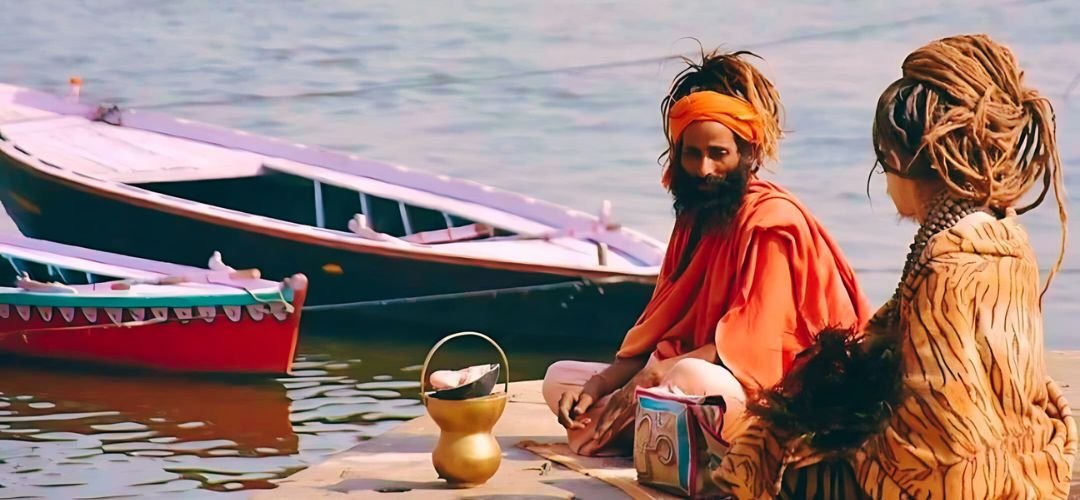
Last Updated on: Aug 2, 2024
India is a country of extremes. And travel experience in India is going to be an emotional roller coaster ride. For you cannot be enough prepared for India, no matter how much you try, especially if you are coming from the European and North American countries. India can shock you, stun you and surprise you at every corner. You must have known about the beautiful landscapes, the ornate temples, colorful festivals and culture and the friendly people of India. And you must have also heard about the poverty, noise, traffic, pollution, dirt and chaos that prevail in India. India is truly the land of extremes.
Your first visit to India can nothing be short of a culture shock. The crowded cities, cows on the roads, homeless people on the pavement, the dung and dirt on the road, crazy train rides can be quite difficult to take for the travelers in India. I have so long painted a stark picture of my country. But India is much more than this. Traveling in India can be a life-changing experience. The mountains, forests, plains, deserts, rivers and oceans are a testimony to the diversity of the landscape of India. The ancient temples, mosques, churches and monasteries speak volumes about the rich heritage of the country. People are different from each other, they have different culture, yet they will welcome their guests with an open heart. Indians believe in “ Atithi Devo Bhava ” (meaning the Guest is God).
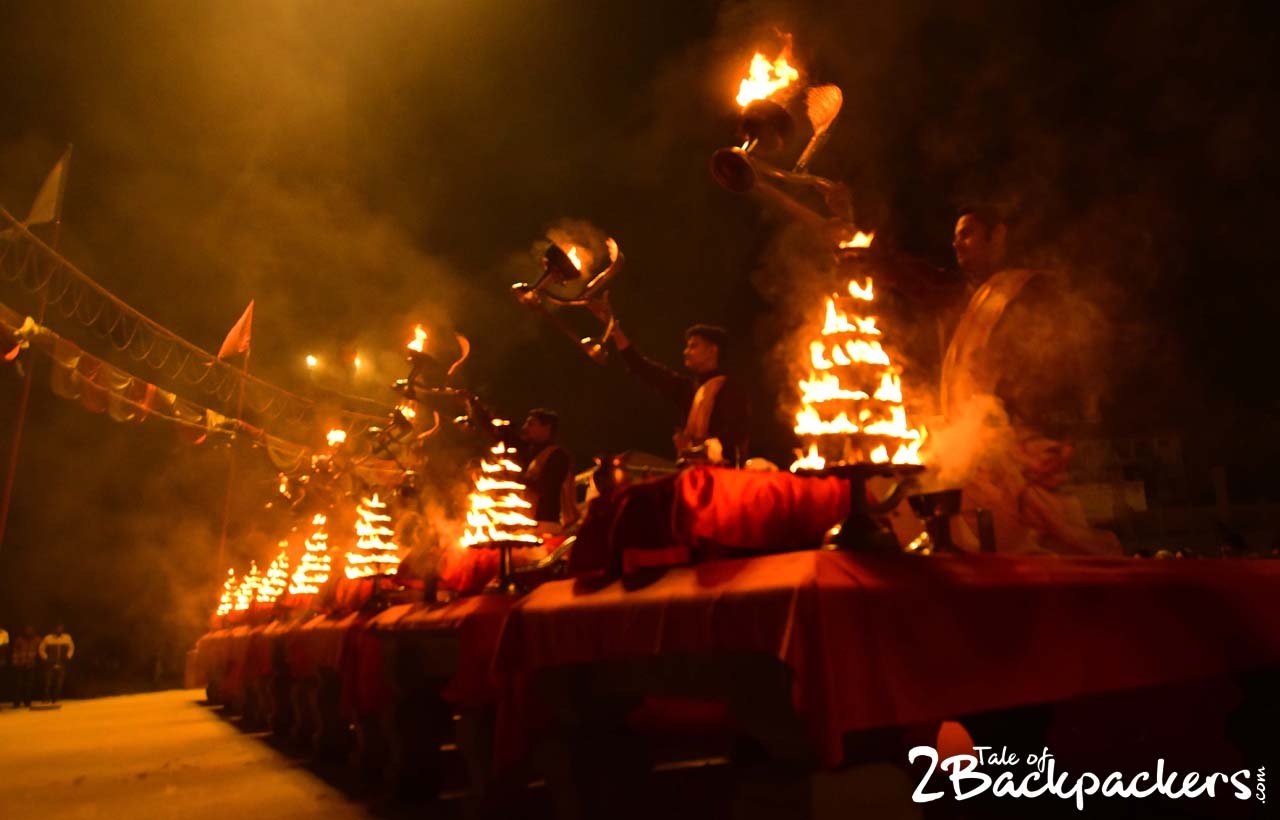
It is usually said that a person who visits India either falls in love with the country or simply hates it. I am yet to meet anyone who hates his/her visit to India. Travel experience in India is always a mixed affair. So I decided to ask a few of my blogger friends about their experience in India – both good and bad. And believe me, their answers were an eye-opener for me as well. While I am overwhelmed by the stories of their experiences in India, I am equally sorry to know about their annoying moments in the country, especially all the women travelers who had, at some point in time, felt uncomfortable.
As a female traveler myself, I have traveled solo in many Indian destinations. While there are always a few uncomfortable stares and touch, India, in general, is quite safe for female travelers. People, in general, are quite friendly and helpful, especially in rural areas. The best part, however, is that all the travelers and bloggers have agreed to return to India again. To be honest, this post has made me all emotional. So before I babble more, let’s read about the travel experience in India through the eyes of foreign travelers.
Table of Contents
Travel Experience in India as revealed by Foreign Travelers
Campbell louw of stingy nomads.

Traveling in India was a very authentic experience, meeting a few tourists and being immersed in the local culture. The country is rich in history and the culture is very different and interesting. It is not the easiest and most comfortable place to travel, but exploring India was so worth the effort. I traveled around India for about two months, half of it alone and the rest with my wife. I loved exploring Rajasthan for a couple of weeks, spending days on trains to go to Delhi, Agra and the Taj Mahal, the unique spiritual city Varanasi, the Golden Temple in Amritsar, doing a tiger safari in West Bengal, exploring the mountains of Darjeeling and Mcleodganj.
Our best travel experience in India was at Amritsar. We loved staying in the Golden Temple in Amritsar, the holiest place for the Sikh religion in Punjab . A monk saw us walking with backpacks around the temple and took us to dormitory accommodation called “Guru Arjan Nev Diwas” , simple accommodation with a shared bathroom reserved for tourists, we stayed here for free for 3 days. Hundreds of pilgrims slept outside in the temple complex. We ate with thousands of pilgrims in the temple every day and felt very welcome even though we were not pilgrims. It was an amazing experience.
- Any bad experience in India?
I had no real bad experience. Some travelers I met in India had problems with diarrhea, my one friend from Israel became very sick and after a couple of days, he was so dehydrated that he had to go to the hospital to recover.
- Any tips for first-time travelers?
If you travel on sleeper class trains (the cheapest trains) for long distances it is easier if you are two people, so that one of you can keep an eye on luggage if the other has to use the toilet. During the night especially people without tickets just walk through the carts and take empty seats. Only drink from sealed water bottles and use this water to brush your teeth and wash fruit. I met more than one person that got sick from the water.
- What about Indian Food?
India is a foodie paradise, the street food is the best, I loved Dal Fried (thick lentil soup) with chapati (almost like a wrap) and Masala Dosa a crispy filled pancake.
- Would you visit India again?
RECOMMENDED READ : A COMPLETE VARANASI TRAVEL GUIDE
Joel Baldwin from World Heritage Journey
We spent just over three weeks traveling in India in early 2019. Starting from Delhi, we visited the typical tourist cities of Jaipur and Agra before heading south to Bhopal and Aurangabad. We also headed west to Ahmedabad in Gujarat before finishing our trip with a few days in Mumbai. We traveled specifically to visit UNESCO World Heritage Sites of which India has a staggering number – 38 in total. Our entire trip was self-guided and used local transport only: trains, public buses, metros, and taxis, though we did hire private drivers once or twice. Everyone was friendly, welcoming and helpful. We had prepared for some difficult moments on our travels, but thankfully none of our fears we realized!
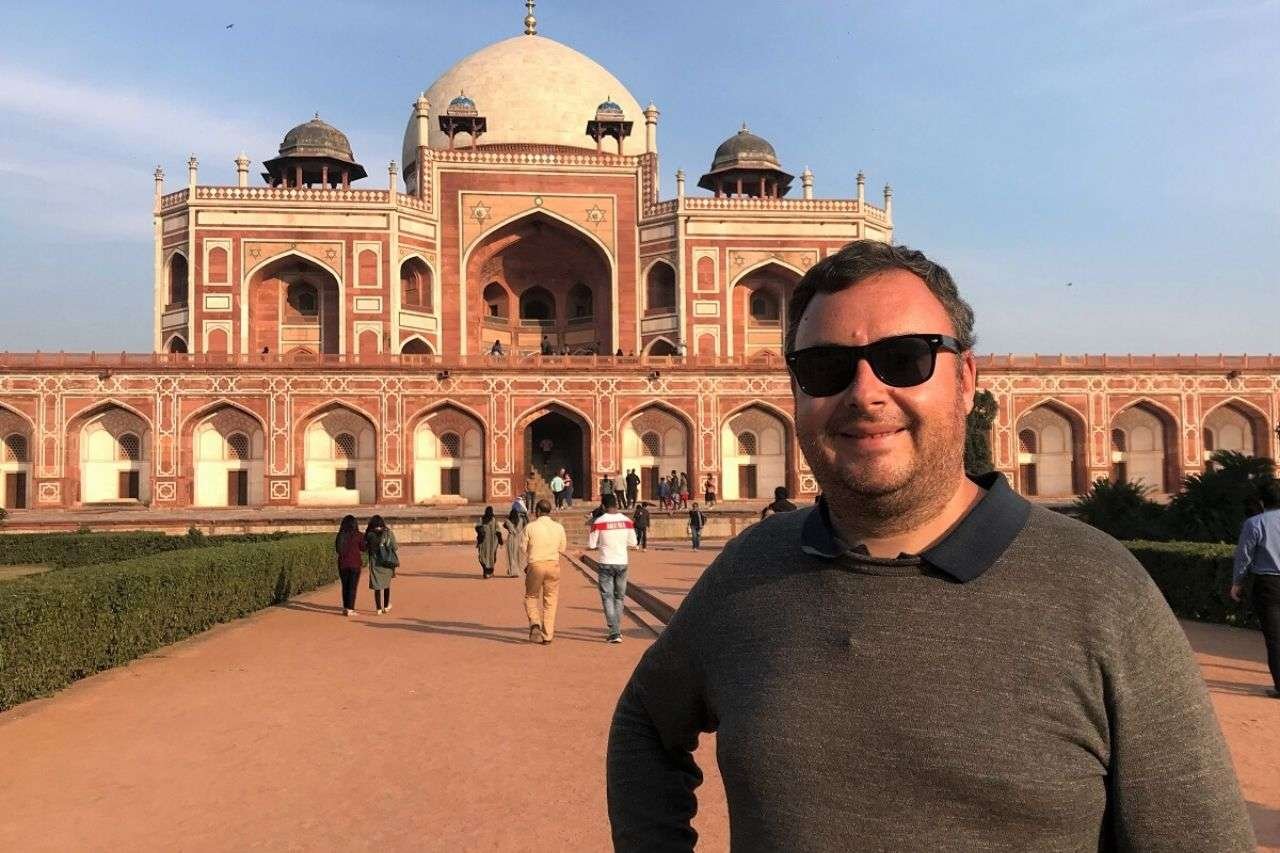
Our best travel experience in India was enjoying the UNESCO World Heritage Sites. Of course, there are the famous glorious Mughal-era monuments like Taj Mahal, Agra Fort and Humayun’s Tomb, but there is much more beyond that too! Ancient rock art at Bhimbetka, Sanchi Stupa, the mind-blowing Hindu art at Rani-ki-vav Stepwell, beautiful nature at Keoladeo National Park and modern Indian history with the colonial-era buildings of downtown Mumbai completely stole my heart.
Many of these are just completely unknown to people outside of India, and it felt like a real privilege to explore these. It seems like even locals don’t know about the Bhimbetka rock art – we had to provide directions for our driver, and it was the only place in India that we had completely to ourselves!
Very little, to be honest. It can be challenging at times, but we were prepared for our trip to be occasionally challenging and that was fine – it’s part of the fun. I think if you approach traveling with the right mindset then you’re prepared for most things. The only genuinely sour experience was in Delhi where someone squirted cow dung on my shoe without me noticing, and then offered to clean it off – for a price of course! I realized immediately it was an attempted hustle so cleaned it myself, and my shoes were brown leather and waterproof so no permanent damage was done. But I was pretty furious for a couple of hours!
We also got quite tired with taxi touts at train stations, sometimes even hovering around the train doors waiting for you! But at least these days with Uber, Ola and Google Maps’ fare estimates, you know when you’re getting a fair price.
If you’re going for more than a few days, get a local SIM card. It can take a couple of hours waiting around at a phone store, but having instant access to Google Maps, translate, the IRCTC app and others make things much easier. Uber/Ola can be a life-saver at times as well, cutting down on your potential interactions with dishonest taxi drivers.
Although we didn’t have any issues with food, stick to busy places and places where you can see your food getting cooked. You’re far less likely to get sick from a street cart making hundreds of bhajis an hour than you are in a restaurant where they only get a few customers each day and the curry might not be very fresh. Eat vegetarian.
Delicious! We had a lot of fantastic thali plates, lots of amazing dosas, bhajis, sweets, curries, daals and the like. I only had one digestive issue, and it wasn’t the usual “Delhi Belly” – I got a 24-hour stomach ache from eating an oily potato curry. It was nice as well to experience the regional varieties in Indian cuisine since here in Australia we mostly only get North Indian food.
Yes, absolutely. Still 17 World Heritage Sites to visit.
YOU MAY ALSO LIKE: BRIHADEESWARAR TEMPLE, THANJAVUR , UNESCO WORLD HERITAGE SITE
Ellis Veen of Backpack Adventures

I had a rough start with India. On my first trip, I was completely overwhelmed by the chaos of Delhi. The sounds, sights and smells of the city as well as all the people that seemed to want something of me made me leave India’s capital as soon as I could. Things turned around soon though. As I traveled throughout Rajasthan I fell in love with the country and 4 more trips followed.
India is such a huge and diverse country that every journey was a unique experience. South India with the peaceful backwaters of Kerala and ancient temples of Karnataka is very different from the desert landscapes and royal palaces in Rajasthan or the holy city of Varanasi in the north. The beach resorts of Goa are again something else as well and a great place to relax. Still, I only feel I have seen the tip of the iceberg and there is still so much left to explore in India.
One of my best experiences in India was the sleepy village town of Gokarna . After Goa, I was looking for a quieter and peaceful beach destination and found Gokarna. Away from the party scene and the crowds Gokarna still has palm-fringed beaches where almost nobody is around. Some are so remote that they can only be reached on foot or by boat.
The Gokarna beach trek connects all beaches and is a wonderful hike with beautiful views over the Arabian ocean. No matter what beach you are on. The sunsets and sunrises are amazing. I was lucky that I had a simple beach hut right at the seashore and that I could enjoy the sunset from a hammock under the palm trees. It was the best sunset I experienced in India.
India is a country of extremes and even though I love India and I had so many positive experiences, there were some negative experiences as well. First of all, there is poverty. The differences between the have and have nots is huge in India. There are a lot of people that work very hard in very difficult circumstances to serve the rich for a wage that is so little that they can barely survive on.
As a foreigner, you will be confronted with things that are difficult to see and it will be hard to know sometimes what is the best way to respond. It might be tempting to give money to beggars or street children, but things in India are not always what they look like. For some, poverty is a business model and the money you give might not be used in good ways.
Another negative experience in India is trash. India can be extremely dirty and there is garbage everywhere. Being in Varanasi was shocking. It was hard to see how much rubbish was floating in the Ganges while it is India’s holiest river.
I traveled to India as a solo female traveler and let me be honest that this isn’t always easy. People will stare at you and there is always the risk of sexual harassment. Therefore, my first rule of safety in India is to dress modestly. This means covering my legs and shoulders and not wearing tight clothes. My second tip is to look confident as if you know where you are going and what you are doing, even if you don’t. Also, I will trust my instincts. If a situation doesn’t feel right, it probably isn’t.
When I need help I will always try to look for other women in the street. People, in general, are very helpful and friendly. If you have the idea that someone is following you often informing passersby of a dodgy situation is enough to scare away a possible offender. Try to avoid crowds, especially during festivals. This is when large groups of young men can become drunk and rowdy. Either watch from a distance or stay close to other women.
Indian food is my favorite cuisine in the world. I love it and one of the things I look most forward to when traveling to India. Some of my favorites of south Indian cuisine are rasam and dosa. Rasam is a delicious soup that is tangy and spicy. Dosas are thin rice flour pancakes with different fillings. In Karnataka, I also loved puliyogare , tamarind rice with peanuts that you can eat for breakfast. For foodies, I can recommend Mysore.
North Indian food is quite different but just as delicious. The curries are creamier and one of my favorites is shahi paneer (cheese in a creamy tomato curry) and dal makhani (lentils in a creamy and buttery curry). For meat, I love the kebabs from Karim’s in Delhi or the restaurants in the Nizamuddin Basti. Do try the Haryali kebab. This kebab is delicious and unique because of its mint-flavored marinade.
YOU MAY ALSO LIKE : SOME MAGNIFICENT & COLOURFUL FESTIVALS OF INDIA
Ayngelina Brogan from Bacon is Magic
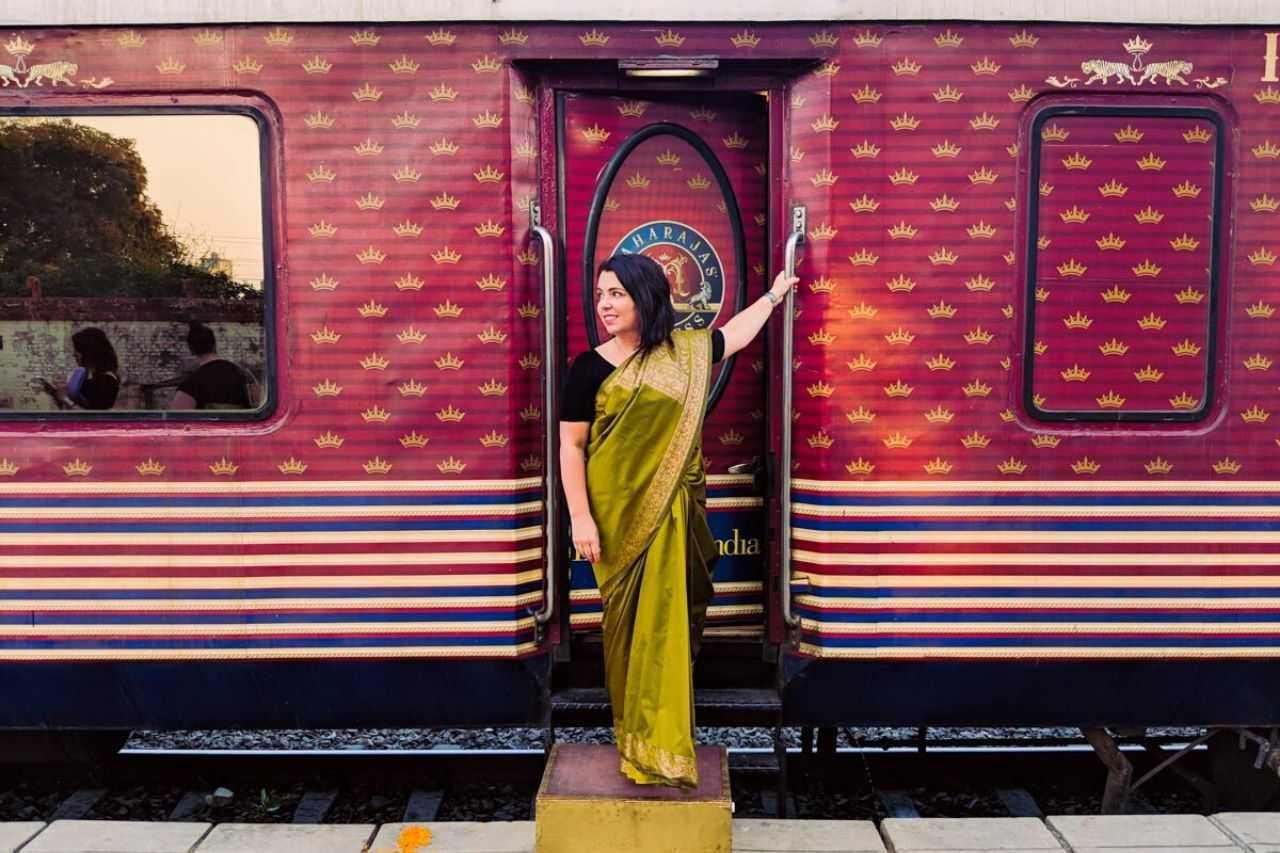
I had always been hesitant to visit India because so many people loved it or hated it, and I wanted to love it. Finally, when I was invited to take a trip to the luxury Maharajas Express I couldn’t pass it up. It is a 7 night stay on the train with a butler, two dining cars and two bars. You visit major sites including Jaipur, Ranthambore, Agra and Gwalior, Khajuraho and Lucknow. It was such an incredible way to see the country in just one week and I loved it. Afterward, I stayed another two weeks so that I could continue to explore the country independently and went to Kerala, and discovered a completely different side of India but equally wonderful. I can’t wait to return someday soon.
I arrived a few days before I went on my train journey and booked a street food tour in Old Delhi. A guide took me around all of the places he loved, that he knew would be safe for me to eat and we explored so many nooks and crannies. At each spot, we tried a dish and he gave me the history of the eatery and also the food. It was an amazing time that set the tone for India. I visited for nearly a month and I didn’t get sick once.
I loved every minute but we only had a few hours at the Taj Mahal and I felt a bit rushed. I wish I could have stayed there all day.
As a woman I was very careful to bring respectful, modest clothing, would be appropriate for all places but also would be breathable and cool. I have a post on my site from other travel bloggers who recommend specific pieces of clothing that they brought with them.
I loved the diversity of Indian food. I always chose the thali each night on the train as it was always different. It was such a treat to experience this part of the culture.
YOU MAY ALSO LIKE : A COMPLETE DELHI TRAVEL GUIDE
Claudia Tavani from My Adventures Across The World
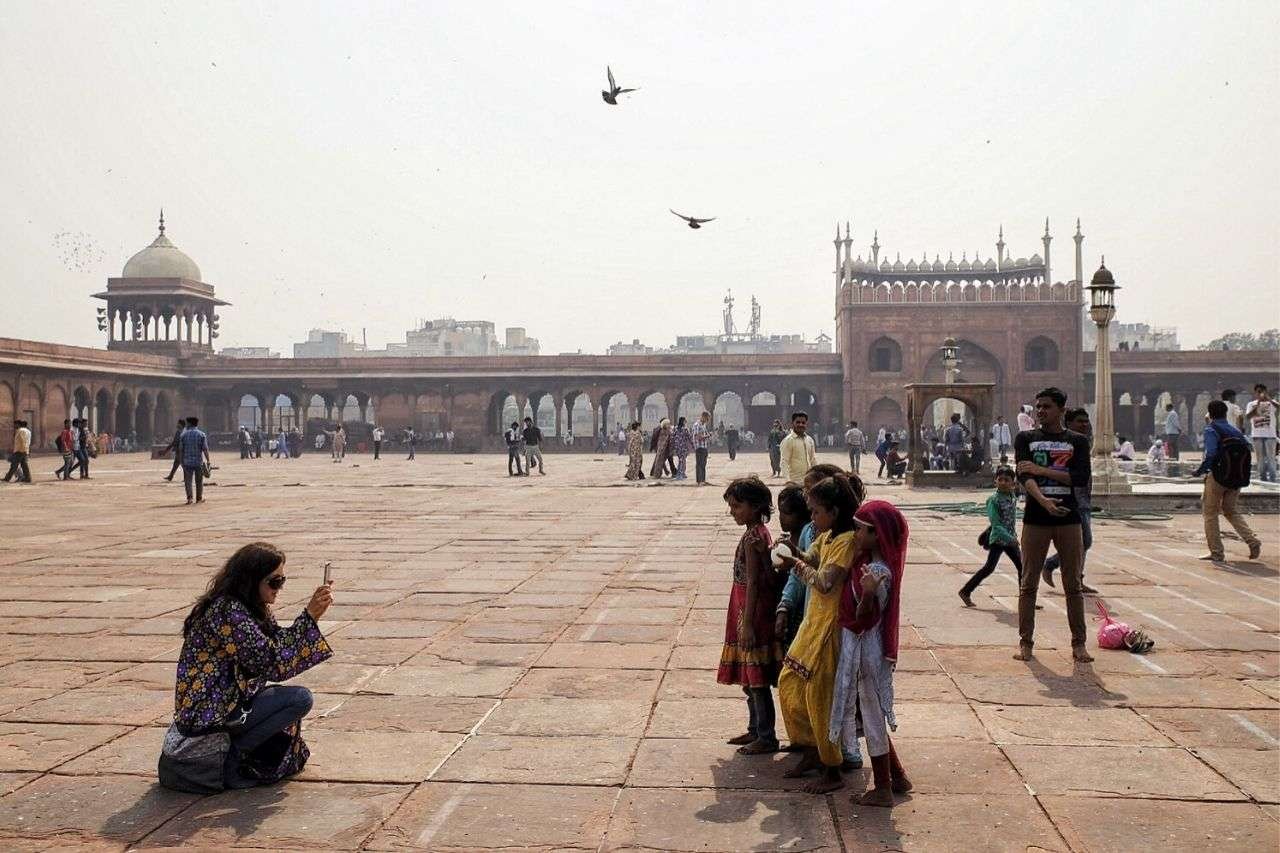
I spent around a month visiting India, going from Madhya Pradesh to Uttar Pradesh, where I visited Varanasi and Agra, along with the Taj Mahal, Delhi and then Rajasthan. These are fairly touristy places with good infrastructure, easy to visit. Not to mention, the sights are stunning. The only issue is in places such as the Taj Mahal or the Palace of Udaipur, where the crowds tend to be overwhelming. You need to time your visit properly to avoid being crushed!
Varanasi is by far the most interesting place to visit in India . The city is massive, chaotic, dusty and upon arriving you will feel overwhelmed. But as soon as you enter the old city, where no cars are allowed (the streets are too narrow anyway) you will feel safe, you will feel as if the city is embracing you. Experiencing the Ganga Aarti, seeing the funeral fires, walking along the ghats all add to the experience. It is a spiritual city where even the most reluctant will be swept away by the atmosphere.
The crowds can sometimes be overwhelming, as well as the chaos – with everybody on their horns, for no apparent reason other than making noise. Some parts of the country are dirty too – there is a real problem with garbage and pollution that the authorities do need to tackle.
Beware of touts. You will especially find them near the most touristic sites. They will nudge you and nudge you until you give in, literally following you around to make a sale. A firm no usually works wonders.
Make sure to also dress modestly. Cover your legs – either wear jeans, elephant pants or long skirts; as well as your arms, shoulders, and chest. In other words, do as the locals do!
Unfortunately, I am not a big fan of Indian food. I find the food very heavy on my stomach, due to the large amounts of garlic and to the fact it is very spicy. I am also lactose intolerant, which means that there aren’t that many options for me. During my time in India, I mostly ate dahl to be on the safe side, but it got boring after a while.
YOU MAY ALSO LIKE : I NDIAN SOUVENIRS TO TAKE BACK HOME
Joanna from The World in My Pocket
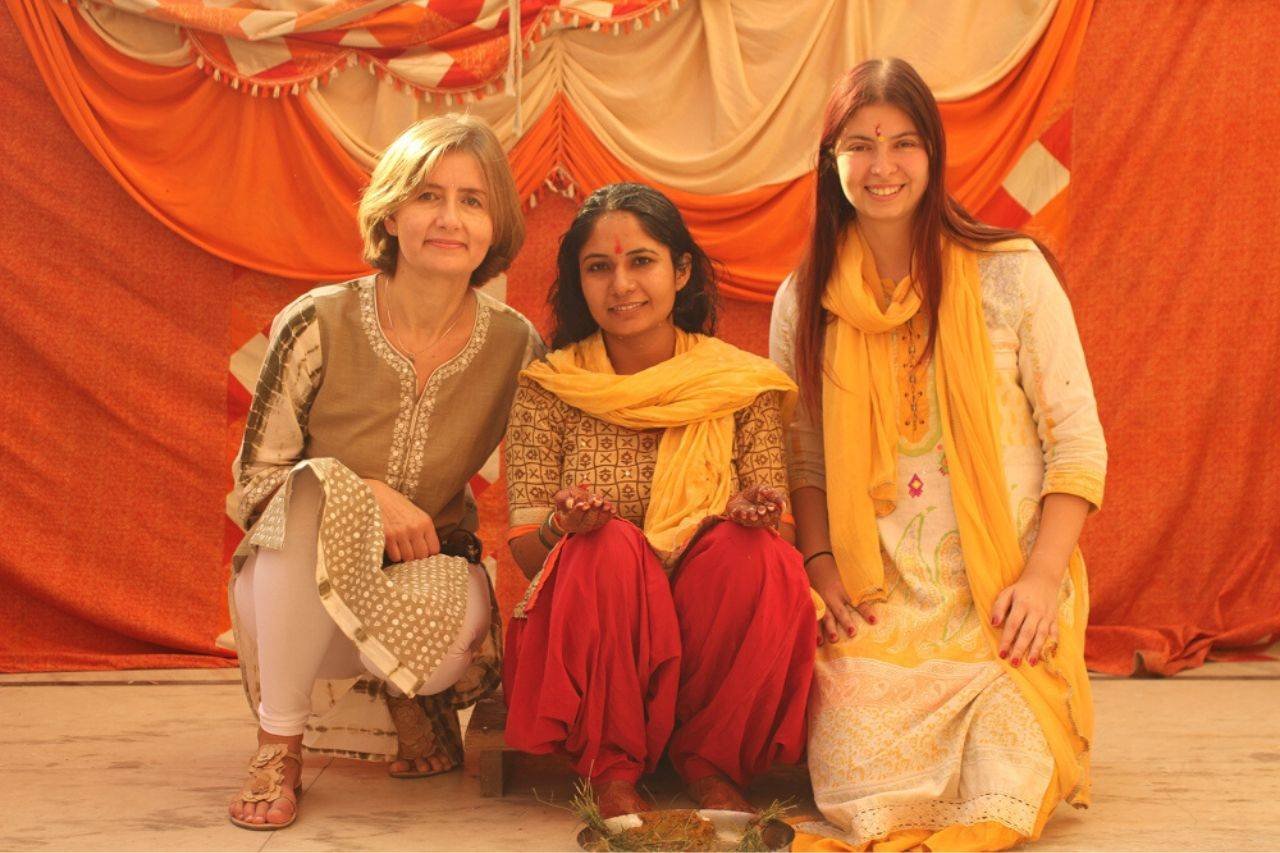
One of the most fascinating experiences that I had in India was taking part in a traditional Indian wedding in the state of Haryana. During my first trip to India, I used Couchsurfing to meet people to show me around, and that’s how I’ve met Sandeep, with whom I later became good friends. When his sister got married, Sandeep invited me to the wedding, and I was so excited to say yes. It was an unforgettable event, with 3 days and 3 nights of different celebrations and traditions. I took part in the ceremony of painting the bride’s hands and feet with henna, and afterward to the lady’s night evening, where only women gathered around in a big tent in front of the house and danced until the early hours of the morning. The following day was filled with many traditions, from the uncles of the bride coming to bring gifts, to the blessings of the bride by the entire extended family. The night of the wedding was fabulous and luxurious, with dancers performing traditional Hindu dances on two different stages, food caterers on both sides of the hall and over 40 different dishes served. The wedding ceremony lasted until the early hours of the next morning, with many small rituals being performed by the bride, the groom, and both together.
I did not have a bad experience in India.
Make sure you wash your hands with soap very often and always eat very hot food, so you don’t get food poisoning.
I love Indian food. The best dish I had in India was a potato stuffed with cheese curry, in Jaisalmer. It was so delicious, something that I have never tasted before and I couldn’t find it in any other place after.
Yes, I would love to explore the South as well, now that I have been three times to the North.
Alexander Waltner from Gourmand Trotter
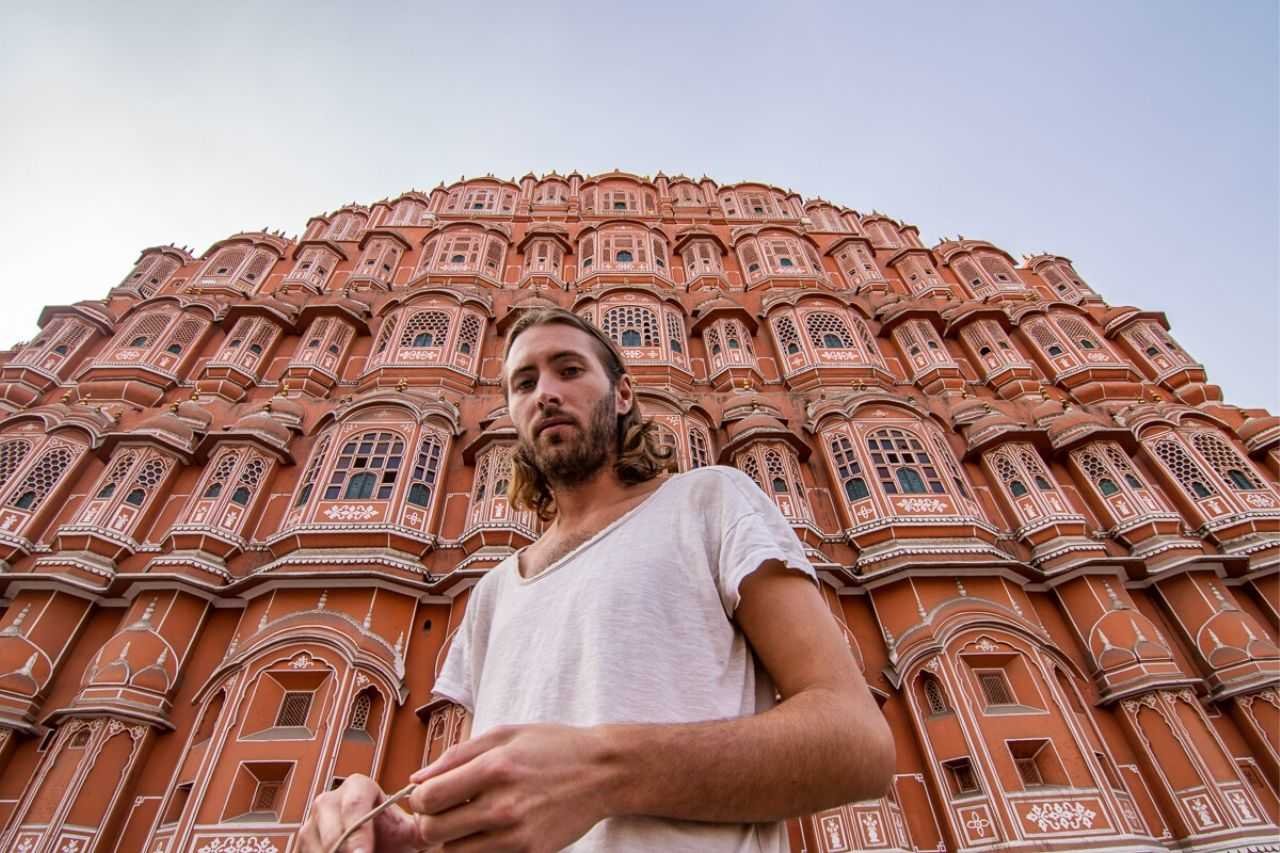
We accidentally got ourselves in the sleeper class on a 14-hour train ride to Varanasi from Agra. It’s one of the lowest classes on the train and two classes below the standard tourist class. We were met by a stench and people staring at us like we were aliens.
It was our first time in India, and our first long-journey around the world, so it was a new experience. We had valuables with us and were a bit scared at first, but everything went fine and it turned out as a memorable experience that we will never forget. The locals on the train were friendly and it made us realize how privileged we are in the Western world and how many things we take for granted. We visited New Delhi, Agra, Jaipur, Varanasi, and Kerala. All in all, our India travel experience was very interesting and culturally enriching.
Some of my best experiences in India were meeting the locals, eating delicious food and getting impressed by the fantastic architecture and heritage of India.
We arrived in Delhi on a Sunday and were told that we couldn’t book any train tickets to Agra, but the booking office could arrange train tickets if we purchased a package that included Jaipur, Agra, and Varanasi, which we also wanted to visit. However, what we didn’t expect was that while we were promised tickets in tourist class, we were given tickets in the non-tourist class in a sleeper train from Agra to Varanasi.
This was our worst experience in India along with getting Salmonella, but it did give as an invaluable life lesson.
Do a lot of research before going, and look out for scams. Try to connect with locals who want to show you around genuinely, and you will have a wonderful time.
Indian food is delicious. Unfortunately, we got food poisoning and salmonella after eating an undercooked chicken tikka masala in Jaipur, at the finest restaurant.
Yes, of course, it’s amazing.
Brittany Kulick from The Sweet Wanderlust
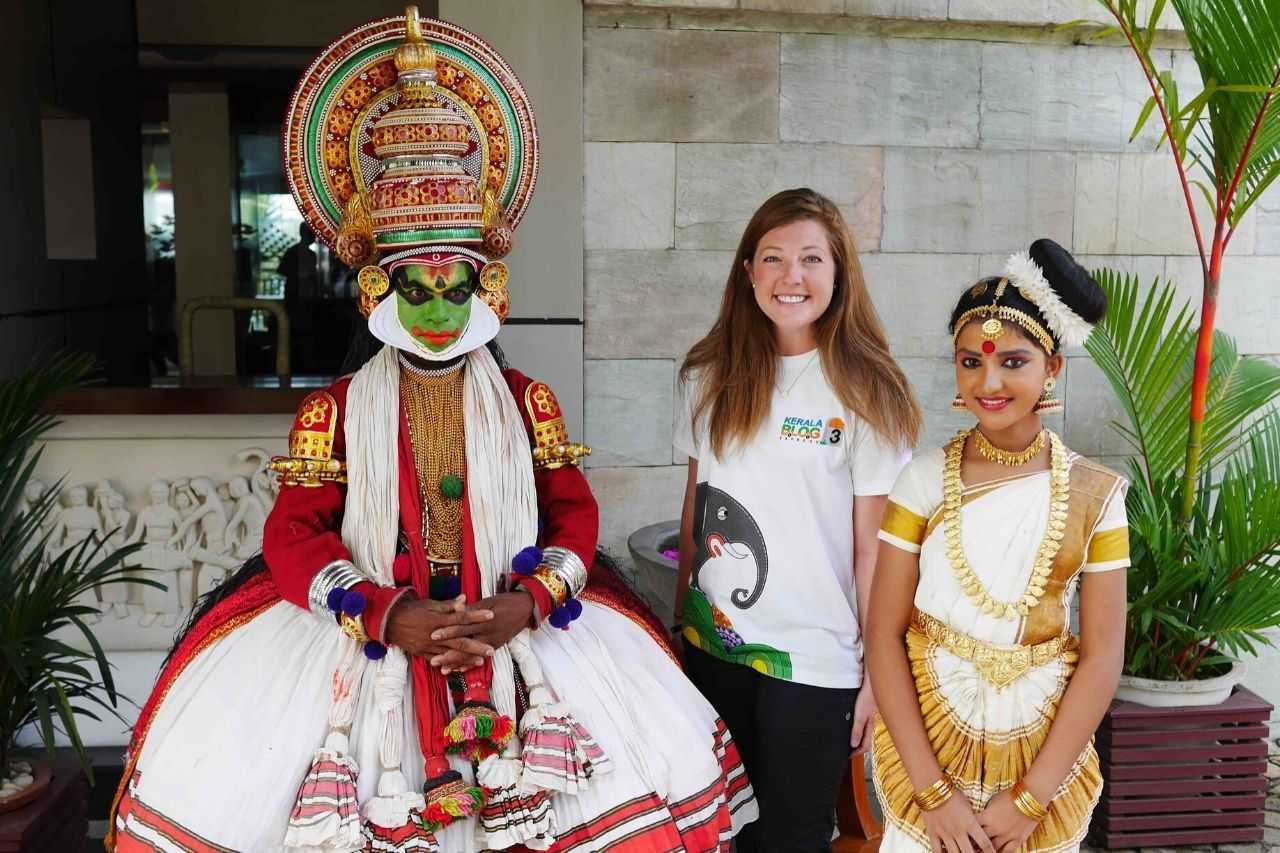
In 2016, I traveled through Kerala on a blogger trip called the Kerala Blog Express. Over my two weeks in the southwestern state, I trekked through the hills of Wayanad and slept on a houseboat on the backwaters in Alleppey. My belly was filled with many different kinds of curries and amazing desserts of Kerala like Rava laddu— I was so glad to find I loved Indian food because I’d only tried it once before my trip! I experienced the thrill of adrenaline as I ziplined over a lake and zorbed down a hill at an adventure park in Wayanad, experienced the beauty of the land at a tea plantation in Munnar and cast a net at Fort Kochi. I was impressed with the incredible hospitality, bright colors and activities for every type of traveler!
One of my memorable experiences in India was when I stayed at a homestay in Wayanad, and our host took us to a local soccer game. It was fun to cheer for the local team and meet the players and fans!
As someone who loves schedules and timelines (I was an event coordinator, after all!), I struggled when plans changed from moment to moment.
I was nervous about visiting India but visited as part of a blogger group. Traveling with others helped me to feel safe.
Just when I was beginning to think I had super strong tastebuds– immune to spicy food– I was invited to stay at Pranavam Homestay with a local family in Wayanad. Mrs. Rema made a traditional Sadhya, served on a banana leaf. The food was so spicy, I had tears running down my face, but it was so delicious, I couldn’t stop!
Yes, although it will be hard to top my first experience!
Wendy Werneth by Nomadic Vegan
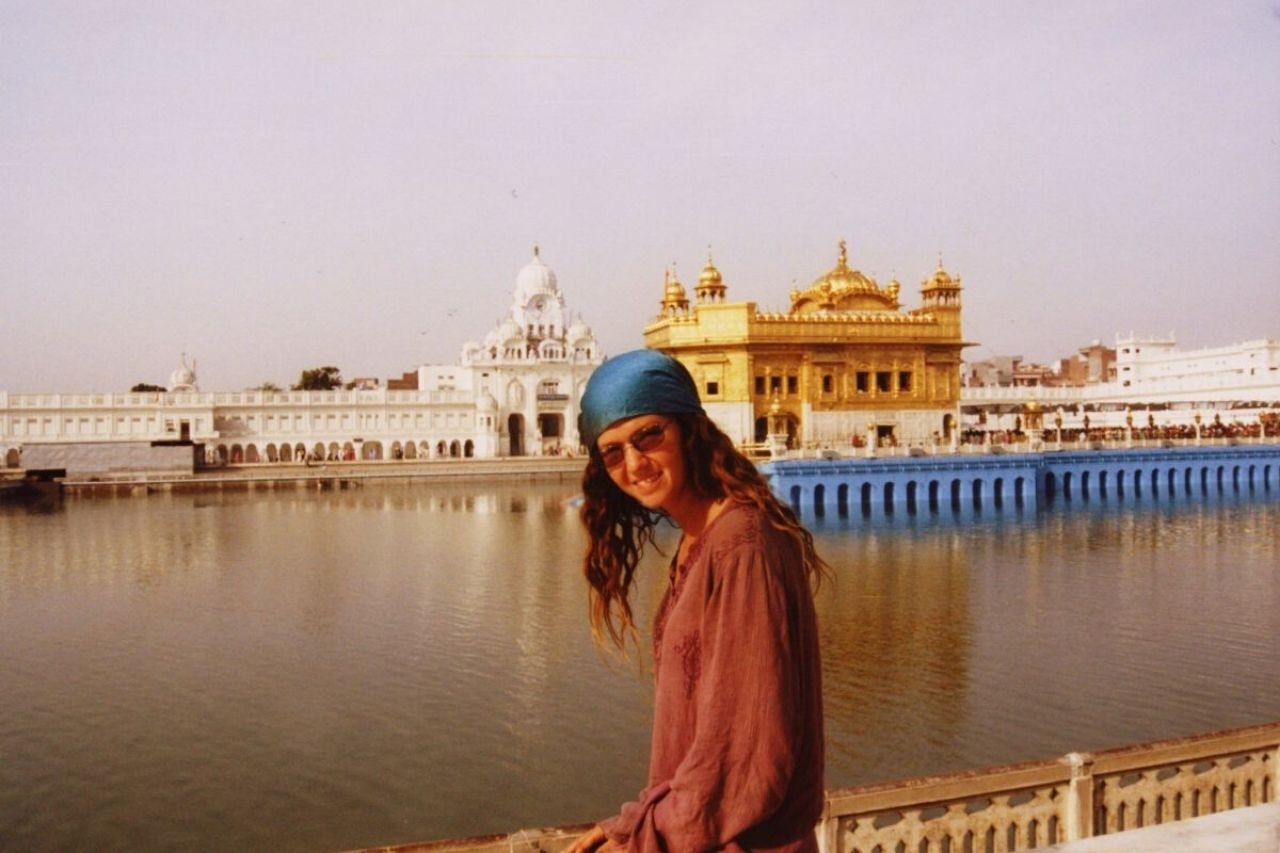
My most recent trip to India was on a vegan tour of Bangalore and Pondicherry arranged by a social enterprise called Escape To. Not only did we stuff ourselves with delicious vegan Indian food throughout the tour, but we also got the chance to meet local grassroots activists and entrepreneurs. Even though I generally prefer independent travel, this small group tour was truly special and helped me to see a whole different side of India that I’d never experienced before.
In Auroville, just outside of Pondicherry, we visited an amazing project called EcoFemme. They make reusable cloth pads for women that are much more eco-friendly and also healthier than the usual disposable pads. Besides, the pads are sewn by local women from the surrounding villages who would otherwise not have employment. And for every pad sold internationally, one pad is given to a girl living in India. It was inspiring to meet the people behind this grassroots project that is changing so many lives.
One of my best experiences in India was seeing hundreds of men and boys praying outside the mosque in the Muslim area of Calcutta during Eid. The mosque itself was full, so the worshipers spilled out into the street.
Having my breasts and butt grabbed by men on the streets
Women should be prepared for sexual harassment, even if traveling with a male companion. Use the women-only carriages on city metros when available. And if someone touches you inappropriately, shout at them loudly and shame them publicly.
Indian food is incredible! India is probably the best country in the world for vegetarians. For vegans, there are many options too but double-check to make sure the dish doesn’t contain dairy products like ghee or curd.
Absolutely!
Derek Hartman from Robe Trotting
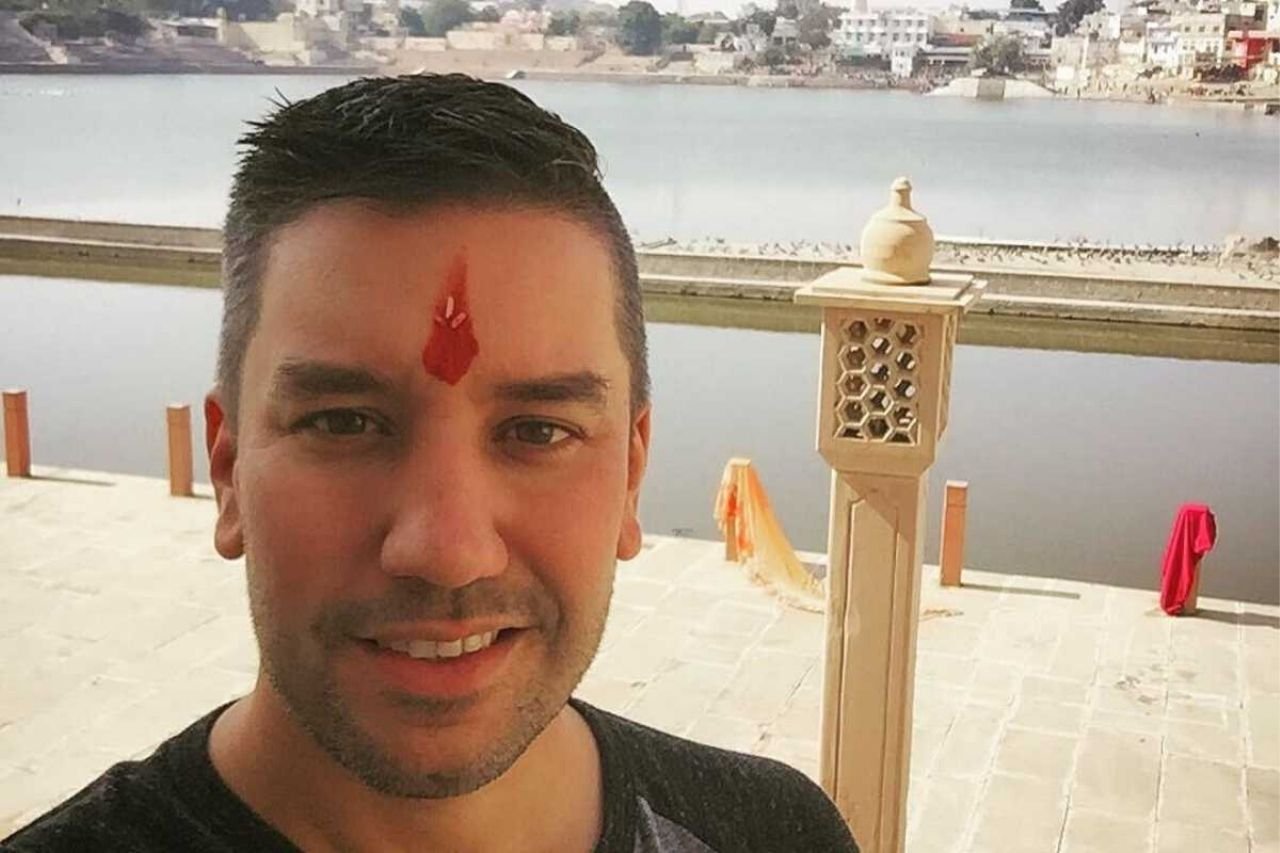
I recently spent a month in India. I was mostly with a guided tour traveling north to south from Delhi to Kerala. I then spent 4 days on my own in Varanasi. We traveled by bus, all-terrain vehicle, several trains, and three flights. We visited Delhi, Agra, Jaipur, Udaipur, Kochi, Mumbai, Pushkar, and Varkala.
One of my favorite experiences was participating in a puja ceremony in Pushkar . While I was raised Christian, I consider myself agnostic. I don’t consider myself religious at all, but I loved being welcomed into a religious ceremony by a Hindu Brahmin. He explained the significance of what we would go through and the ceremony was beautiful. I felt a very peaceful connection to the culture and the experience was reflective and prayerful. Part of the reflection and prayer was for ancestors and family members who have passed. It was moving to spend time remembering my family in such a sacred place.
I fell in love with India, but I could never drive there. It took me a while to get used to just walking around India and I felt uncomfortable riding in any type of vehicle for the first few days. It’s something you get used to. There is beauty in the chaos and it’s enchanting. I did not like urban farming and stepping over animal poop. Having to watch every step you take can be annoying.
I felt very comfortable in India, but I was with a guide most of the time. I would advise that as an American, we are culturally uncomfortable saying “no” when we are offered a tour or someone is trying to sell us something, such as in a market. In India, it’s a common practice and you just have to get over being “American polite” and say “no” firmly instead of “no thank you, I’m okay”.
Because I was with a guide who knew good restaurants I had very little stomach upset, but I had a few nights of difficulty from eating at a homestay. If you do not live in India, you won’t be used to the spices. It isn’t a cleanliness thing. You DO have to make sure that cooking oils are changed though.
I cannot WAIT to visit India again and plan to return with my partner.
Larch from The Silver Nomad
Starting in Delhi, I went on to Agra and the Taj Mahal, Jaipur, Pushkar and Jodhpur before returning to Delhi for my last day. Traveling on coaches and trains, India was enchanting, exhilarating, dusty, noisy but serene, the people we met were helpful and curious about my blonde hair. My senses were bombarded by color, light smells and sound and the authentic taste of Indian cuisine.
Chai (milk tea) and a vegetarian thali became my staple diet and I sampled street food from the crowded vendors.
My second visit was to Goa. I went to Agonda Beach at the end of November and it rained every day. When it was not raining, I explored on a scooter going up into the hills. It was quite different from Rajasthan but I didn’t have enough time to fully appreciate it.
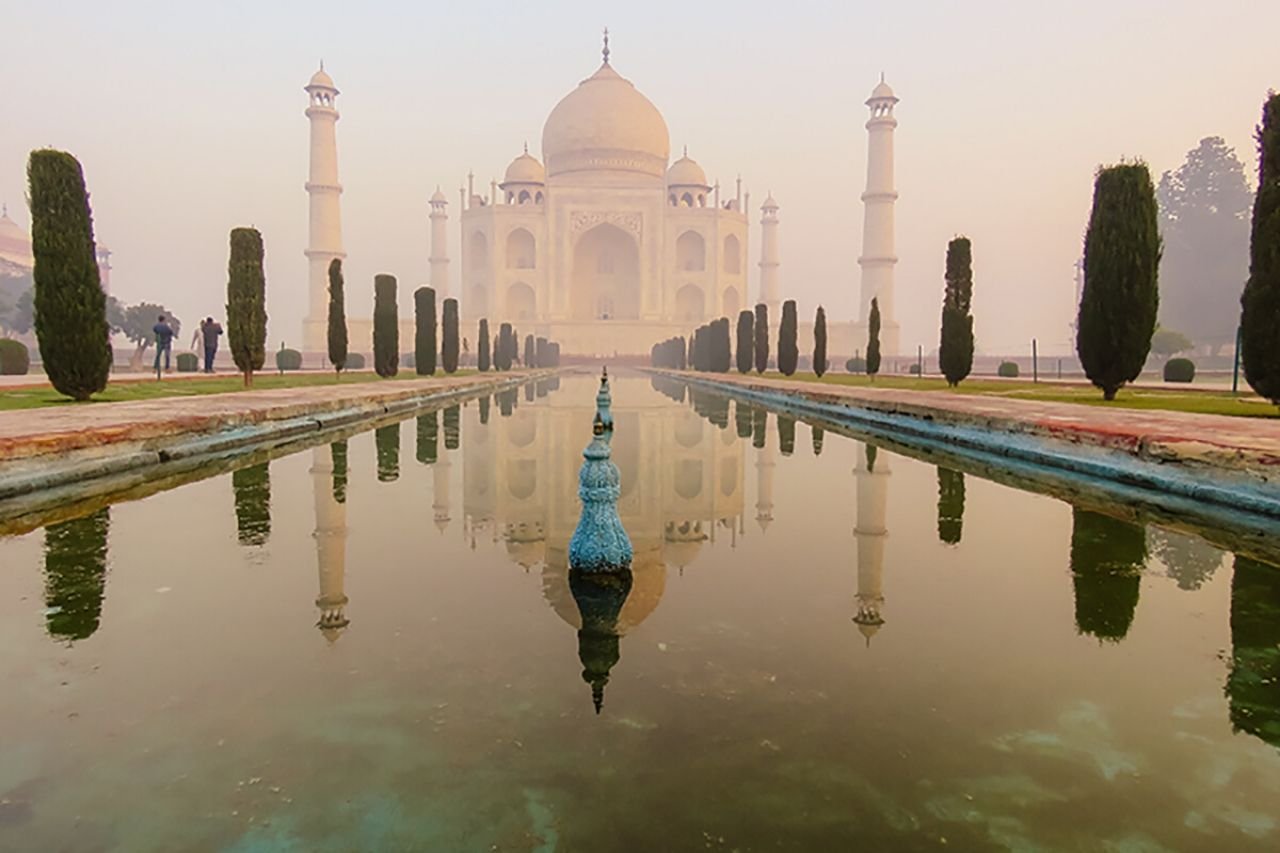
My best experience in India was my visit to the Taj Mahal. As one of the first people to enter the grounds, the calm, majestic Taj Mahal took my breath away in the early dawn light. Walking around the gardens the atmosphere was so serene and the Taj Mahal in the center was magnificent. The experience will stay with me for the rest of my life.
Visiting the hills forts in Jaipur, I was saddened to see elephants being used to take people up and down the steep hills to the forts.
Be modest and respectful in your clothing and your language. Learning some of the local language can be really useful. Study Hindi , Bengali or Marathi which are the most spoken language in India. Be prepared for the assault on all your senses.
Being vegetarian, I found the food amazing. The flavors of the curries were clean, tasty and different from what I expected.
I am already planning a return trip to Goa, Kerala, and Kochi
Gloria Apart from Nomadic Chica
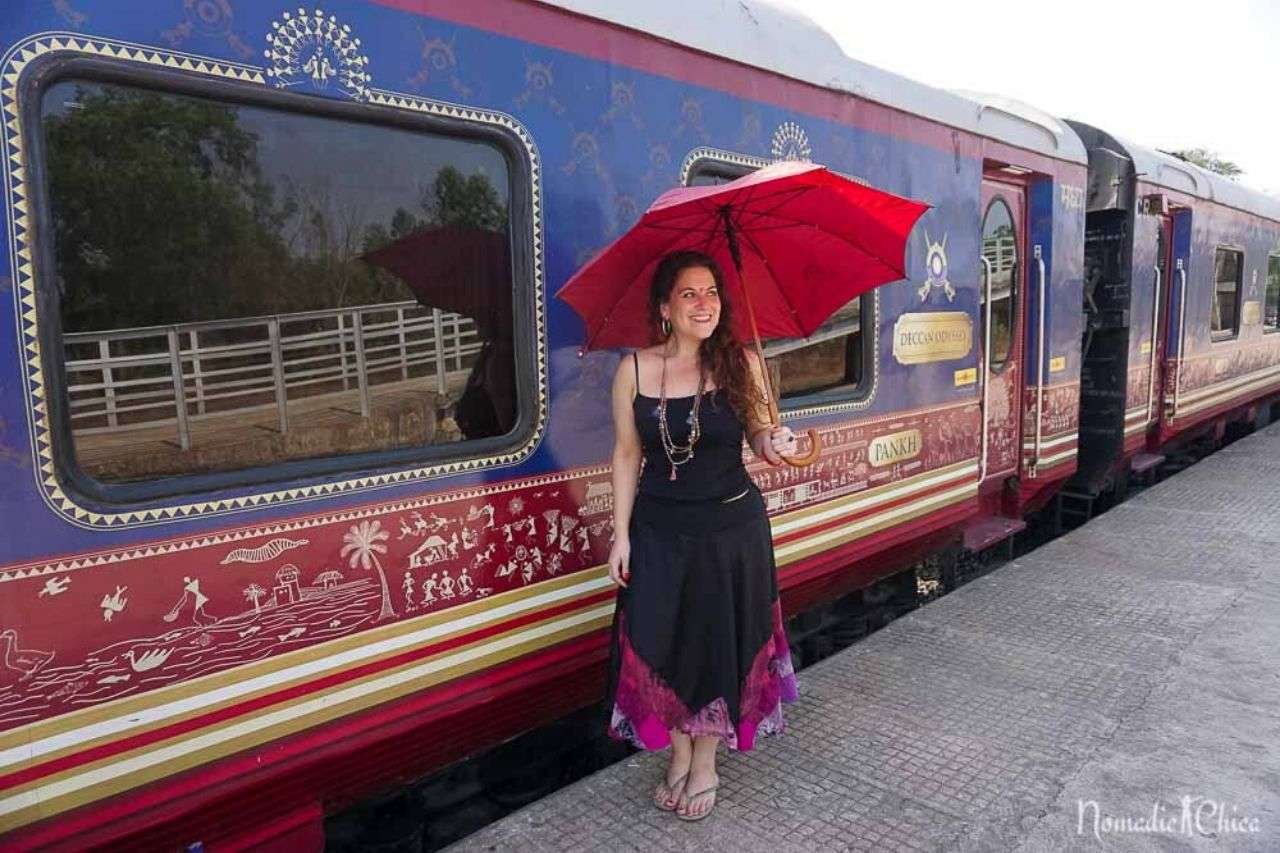
My love affair with India started around 25 years ago when Yoga and Meditation came into my mind. I always wanted to try these meditation retreats but I never had the time to get “locked out” for 12 days or I was not willing to spend that time instead of taking a trip somewhere. But I was in 2014 with a 6 -month visa in India, with plenty of time and with a little existential crisis. This was the perfect moment to give it a try!
So I went to Bodhgaya, the land where Buddha got enlighted and inscribed myself in the course of the Dhamma School, the ones who are supposed to teach this technique keeping the origins.
I won’t lie, it was one of the hardest experiences of my entire life. Imagine yourself sitting in a hot room (it was summer) meditating for a total of 10 hours per day.
When you start the 10-Days meditation retreat , you make a vote of silence, so you can’t talk or communicate with anyone in any way. That’s also including writing, reading or having your electronics with you!
After the 10 days, I was different. India was not feeling overwhelming anymore! I was calmer and relax and with weird new confidence and connection with my thoughts and feelings, it was the beginning of a new relationship with myself.
One of my best travel experiences in India until now was for 7 days in one of the most luxurious trains in the world, the Deccan Odyssey! A private cabin, two chefs on board, you personal butler and amazing tours daily, is there something better?
After being already for two months in India, and when I thought only weak travelers get sick, I got some stomach bug who had me sick for over a month! It was also the same moment when I have realized my travel insurance got expired, never did this again! Lesson learned!
Try to adapt to the local traditions and customs. Especially if you are a woman, keep your clothes modest and, even if it’s really hot, cover up your chest, legs, and arms. I prefer to blend and not call too much attention so I can walk more comfortably.
Amazing! I have tried Indian food in the northern areas, but it was not until I went to Maharashtra and Kerala that I could have a whole new experience with Indian food. The spices, the textures, eating with my hand, and all the flavors made me sing and dance of joy every time.
Definitely! I’ve been already four times and I would go back at any chance!
Karen Turner from Wanderlustingk
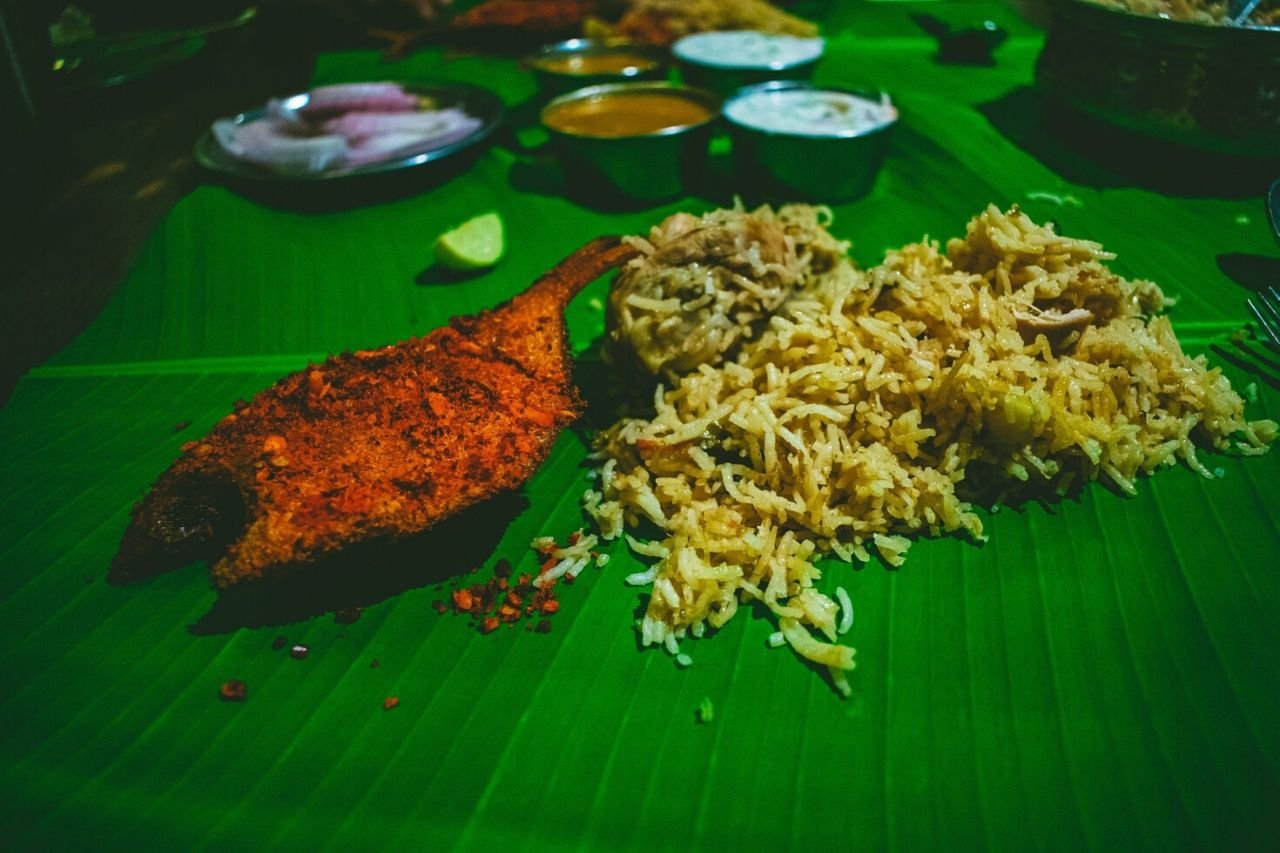
I traveled around Southern India and my favorite experience in India had to be sampling all the specialties from different regions from spicy Andra food to sweeter dishes from Kerala. I did a cooking class in Kochi, which was great for mastering the basics of Indian cooking to bring home Indian food with us! We also did a food tour in Mysore in addition to enjoying home cooking at a friend’s house in Bangalore in addition to following every food recommendation given to us from Mangalorean prawns to where to get the freshest idlis. Simply, everything was delicious!
Use the food apps (Zomato) to find the best restaurants and do a bit of research to figure out what are the most ordered dishes with the highest turn-over to avoid getting sick. Get a SIM card as soon as possible and don’t be afraid to use the various rideshare apps to get around rather than walking around by yourself.
Definitely, although I want to visit the North next!
Samantha Shea from Intentional Detours

I have many fond memories of India so far (I plan to return) but my best India travel experience was the time I attended a Himachali wedding in a village in Parvati Valley . One afternoon when heading back to our hotel in Chojh Village, I was struck by the cacophony of trumpets and singing in the not-so-far-off distance. Curious, my partner Charles and I headed off in the direction of the noise to find what felt like the whole valley gathered together for what was none other than a wedding. Though I was a bit nervous to enter at first-as I wasn’t sure if they wanted outsiders attending- we were soon welcomed in with open arms. Some of the villagers quickly gave us plastic chairs, jalebi treats, and cups of chai to slurp as we watched everyone dance around the circle in coordination. We wouldn’t watch for long though- two men clad in colorful headdresses insisted Charles and I join the fun. And so we did! I still to this day remember how exhilarating and pure fun it was to dance along with the rest of the villagers while trying and failing to match their never-ending stamina. I had always wanted to attend an Indian wedding, and I couldn’t have been happier that my first experience happened to be in a Himachali village of all places. I’ll remember that day forever.
My worst experience in India was during my first visit in 2018. We were unfortunately scammed horribly by a travel company “gang” upon arriving in New Delhi. My boyfriend and I both were without internet service and hadn’t read much about where we were staying in advance. Our rickshaw driver convinced us that our cheap hostel was closed and then brought us to a fake tourist agency who insisted that there was nowhere else with vacancy aside from 5-star hotels. Seeing as we were overwhelmed and without the internet, there was no way we could check such claims. Since we had been planning to head to the mountains anyway, we ended up getting what we later learned was an extremely overpriced taxi ride out of the city. To add to our crazy first day in India, our driver ended up being a wild character of sorts, making for an insane 24 hours. Though it sucks losing money, I still loved everything else about that trip, so much so that I came back a year later- which is when I had my super positive wedding experience.
I’ve always loved Indian food since I was a child and trying it in India was just magical. Nothing compares to street food and hole in the wall shops.
Never hail a rickshaw off the street unless you’re with a local. At best you’ll be ripped off, and at worst you’ll experience what we did with that scam tour agency.
I am planning to as soon as travel is possible again. I have a 10-year validity multi-entry visa.
Ellie Cleary from Soul Travel India & Soul Travel Blog
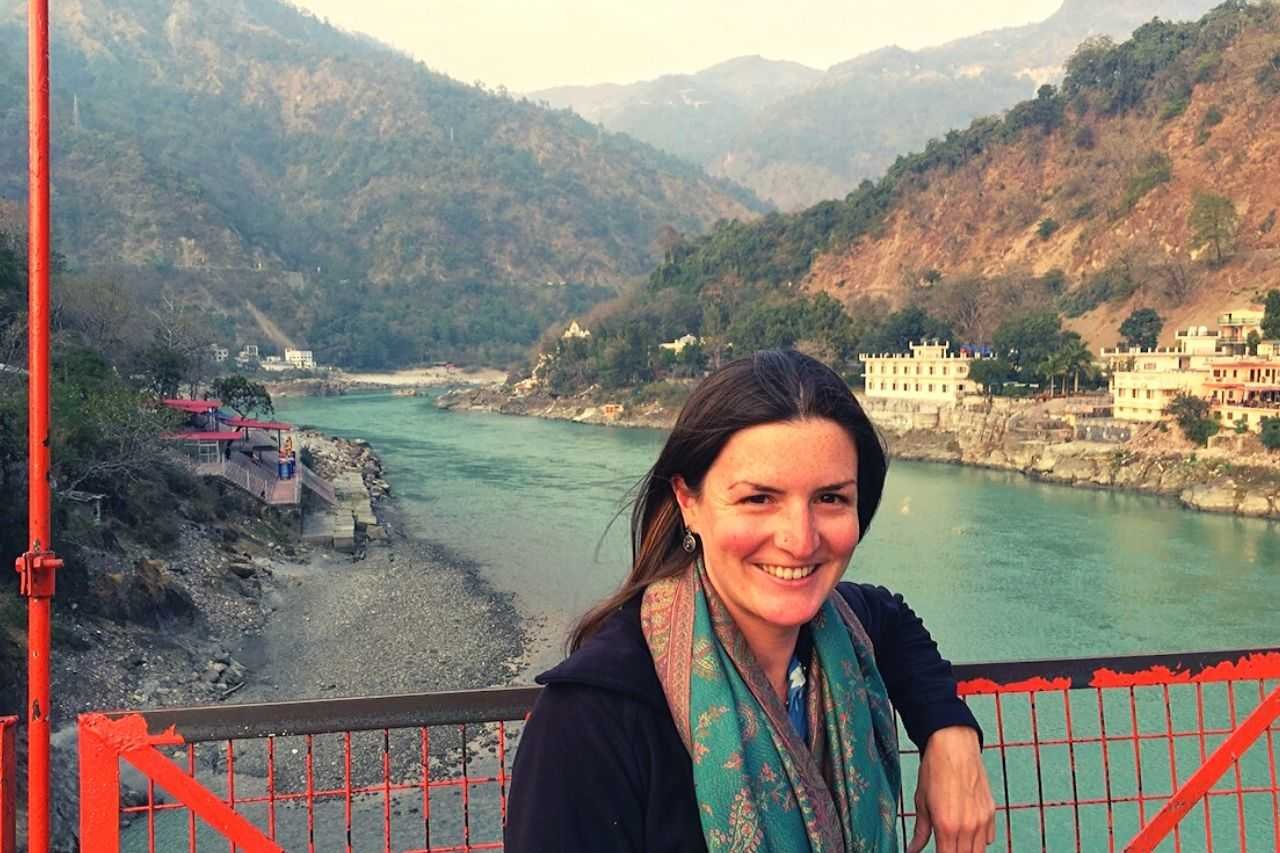
Over the last few years, I’ve traveled to India for months at a time, both solo and with my fiancé, who is Indian. We met on my travels in India. Some of my favorite places I’ve visited in India include Ladakh, the quieter corners of Kerala such as Wayanad and the southern backwaters, and the beautiful Konkan coastline of southern Maharashtra.
I’m lucky to have many memories to pick from, but many of my most memorable experiences in India involve long train rides. One of my best train journeys happened directly after my not-so-good experience and was a complete contrast. I was scared of getting back on an overnight train, alone, but I knew I had to do it to continue my journey.
On my journey from Bikaner in Rajasthan to Haridwar, I met a family who had a teenage daughter, and they were traveling from Rajasthan to Haridwar as well. Not only did she keep me company with chats and stories throughout much of the journey – interrupted only by kids from the next set of berths over who wanted to show off their newly learned card tricks – but I was offered food by her mum, and on reaching Haridwar they shepherded me off the train away from the rickshaw touts and did not leave my side until they’d found which bus I needed to get to Rishikesh and put me on it. I’m still in touch with the daughter to this day and fondly remember our conversations. It’s no exaggeration to say that his experience restored my faith in India.
Taking the train alone from Jodhpur to Jaisalmer, I was tired and looking forward to a good night’s sleep. Normally when traveling by train in India I try to get the upper-most bunk, but this time I’d been assigned the lower bunk. I didn’t bother to try and switch and settled in for the night. I awoke at around 3 am to find the man directly opposite me sitting upright on his bunk, staring at me and touching himself. Terrified I ran off to find the guard / Ticket collector, but there was no-one to be found. After shouting at the man, my neighbor woke up (another solo female traveler as it happened), and helped me to find a spare bunk at the other end of the train carriage. In the morning an awkward scene followed with the guard who failed to do much about the incident except telling me I could report him to the police if I wanted to. I arrived tired and scared at 5 am in Jaisalmer.
I can’t get enough – but be careful in Delhi and stick with hot food from popular stalls if you’re trying street food.
On trains, try to get the top bunk. Get a local tourist sim card from a network such as Airtel, Vodafone or Jio as soon as you arrive in India – don’t rely on international roaming – it’s useful for so many things.
We visit every year
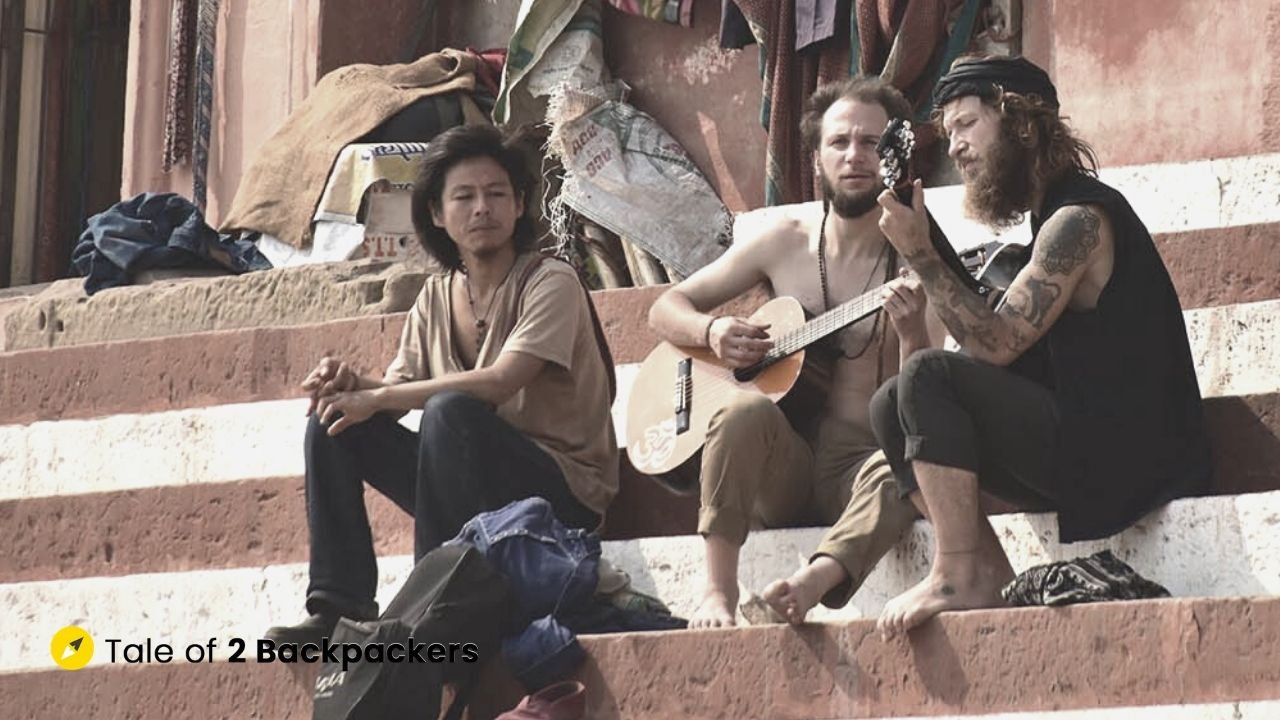
So those were some of the best and not so good first-hand experiences of travelers and bloggers visiting India. As I mentioned before, this article is one of our favorites and we thank all who have shared their experiences in India .
How was your travel experience in India? Please let us know in the comments below.
Pin this for a later read!
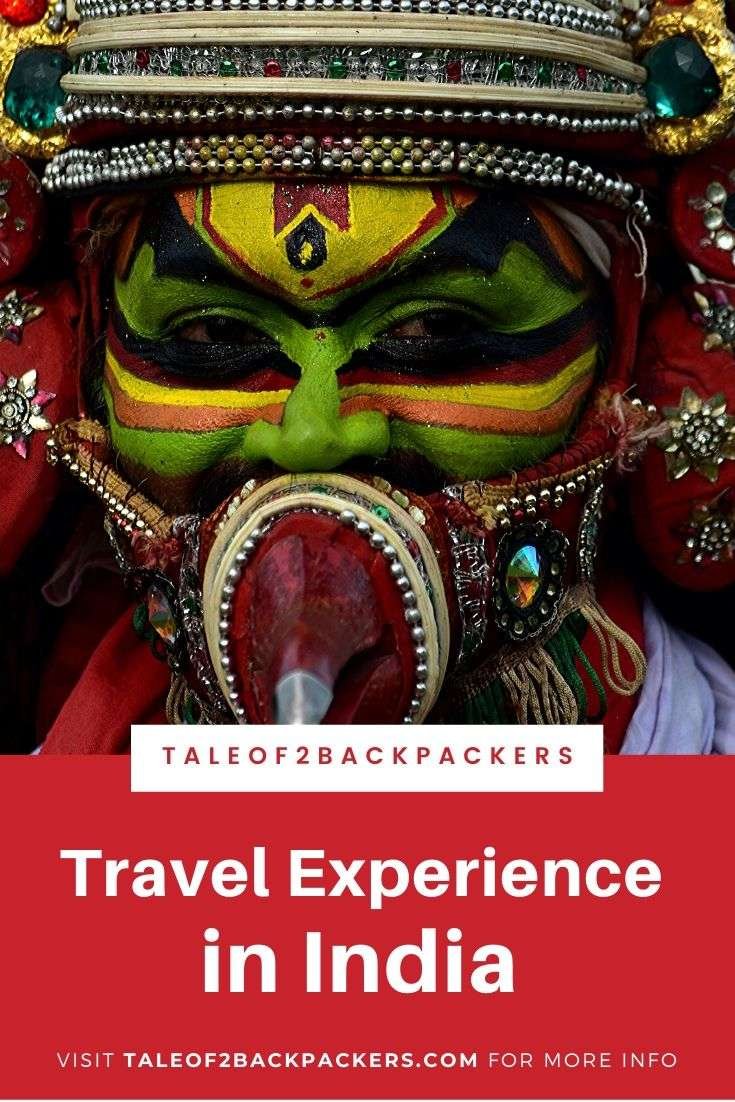
Reproduction of the content, including the photographs without prior consent/permission of the writer and photographer, is not encouraged at all and a violation of the same will attract legal action. If you need anything, Contact Us .

Hey! we’re Agni & Amrita.
We have been travelling together since the last 15 years and writing independent and personal travel content since 2014. Travel is one of the best teachers and through this blog, we aim to share our experiences and travel tips. We encourage you to travel more and see the world through your eyes and not through filtered templates.
Find more about us.
RELATED POSTS
Varanasi ganga aarti & subah-e-banaras – an incredible visual story.
I will not digress here. I do think Ganga Aarti is one of the most visually appealing spectacles that I have seen. Varanasi Ganga Aarti and Subah-e-Banaras at Assi Ghat definitely tops the list, though I have also witnessed the splendour of Ganga Aarti in Haridwar and...
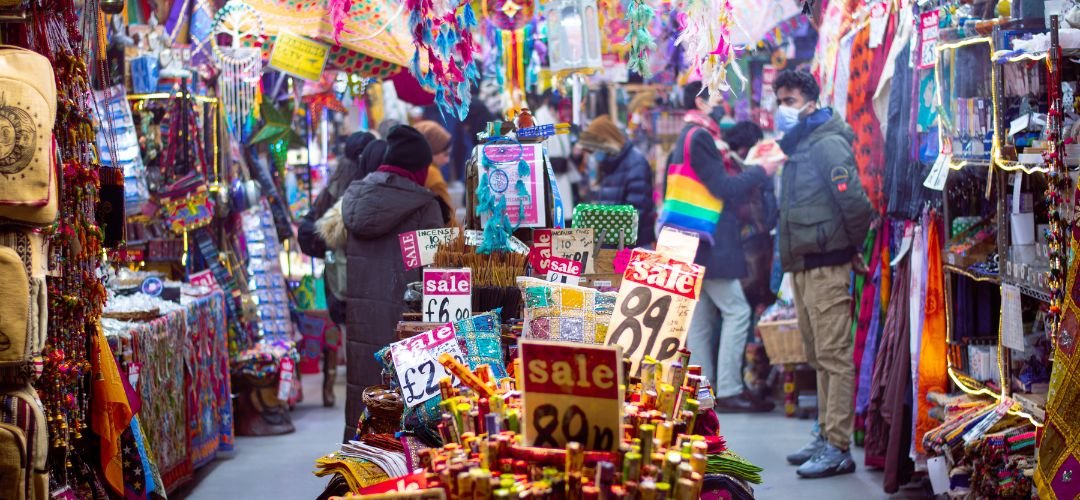
Indian Souvenirs – What to Buy and From Where
While traveling across India, you can see very well witness her diversity and distinctiveness. There is a unique mélange of art and culture in the country and you can view them on your journeys across India. The art, handicrafts, and handlooms of India have found...
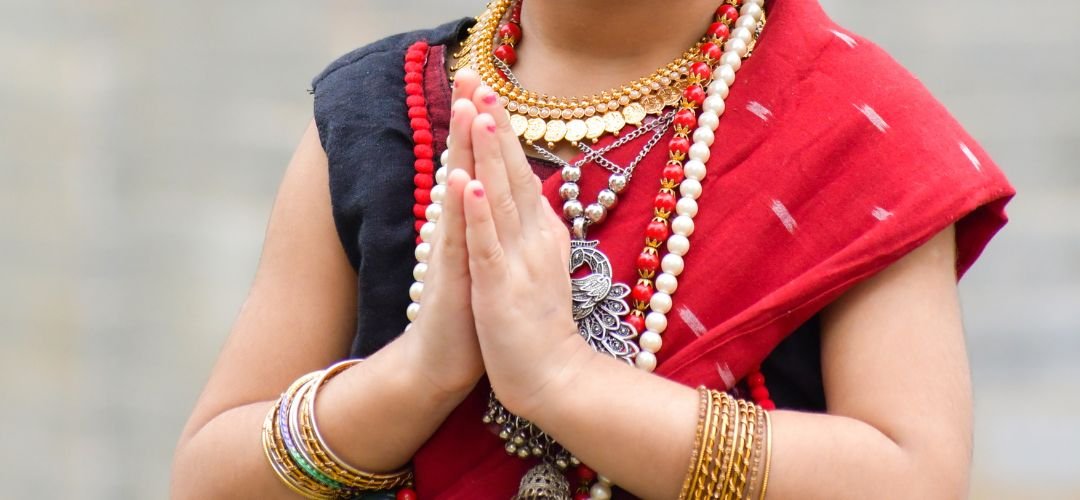
Namaste! The Traditional Form of Indian Greeting & Its Significance
Namaste! Is it just a salutation and a way of greeting each other? Does it have any deeper significance? Indian culture is a complex and chaotic mixture of various rituals and traditions, just like most of its cities, towns, food, or even languages. But behind...
Best Indian Food to Try
India is a country with such a rich and colourful past, with so many secrets and wonders to offer the curious traveller. However, we’re sure you’ll agree, if there is one thing India is renowned for the world over, it’s the cuisine. Some of the world’s best food is...
Interesting and Famous Temples in North India & Others
In continuation of our series on Temples of India, this article is dedicated to some of the famous temples of North India. In terms of structure and design, these temples differ than the South Indian temples. The architectural style of the temples mainly classifies...
Famous Temples of South India That You Must Visit
There is no doubt that the southern part of India boasts of some of the most beautiful and majestic temples in India. The temples of South India are usually unique in their architecture and intricate designs. The ancient temples of India are best examples of exquisite...
Famous Temples in India That You Must Visit
India is a land of diversity that can be seen in her culture, religion, language and even geography. Indian civilization can be traced back to thousands of years and there is no doubt that India is culturally one of the most heterogeneous countries. Many kings have...
A guide to the Kumbh Mela at Prayagraj (Allahabad)
Kumbh Mela - the highest gathering of people on pilgrimage in the entire world. It is believed that a visit to the Kumbh is an experience in itself. Kumbh is the faith and belief of crores of devotees. And you can very well see that if you visit this grand spectacle....
Wow, this brough a FLOOD of memories back to me from my trip to India several years ago. You summed up my experience perfectly in the first paragraph, it is so a land of extremes. I never thought that India would be so diverse. In Mumbai I was completely overwhelmed by culture shock. I experienced a lot of the homelessness, traffic, beeping horns, and things of that nature as you describe. We made our way to Udaipur, Goa, and Kerala and WOW they could not be more different from Mumbai and from each other. Totally accurate post!
Thank you Stephanie! I can understand your feeling. Most of my friends from the West have to say the same thing about India. Would definitely love to know more about your experience in India.
Great Article. Thank you for providing such unique and valuable information to your readers. I really appreciate your work.
Thank you so much!
Great Information Keep it up.
Salutations! I had to compliment this excellent blog! The amount of information it offers is genuinely astounding. It’s like having easy access to a treasure of knowledge for everyone. I applaud the creators for their amazing work. I sincerely appreciate the insightful information offered here. Folks, keep up the fantastic effort!
Submit a Comment Cancel reply
Your email address will not be published. Required fields are marked *
Save my name, email, and website in this browser for the next time I comment.
Submit Comment
This site uses Akismet to reduce spam. Learn how your comment data is processed .
myeduworld.in
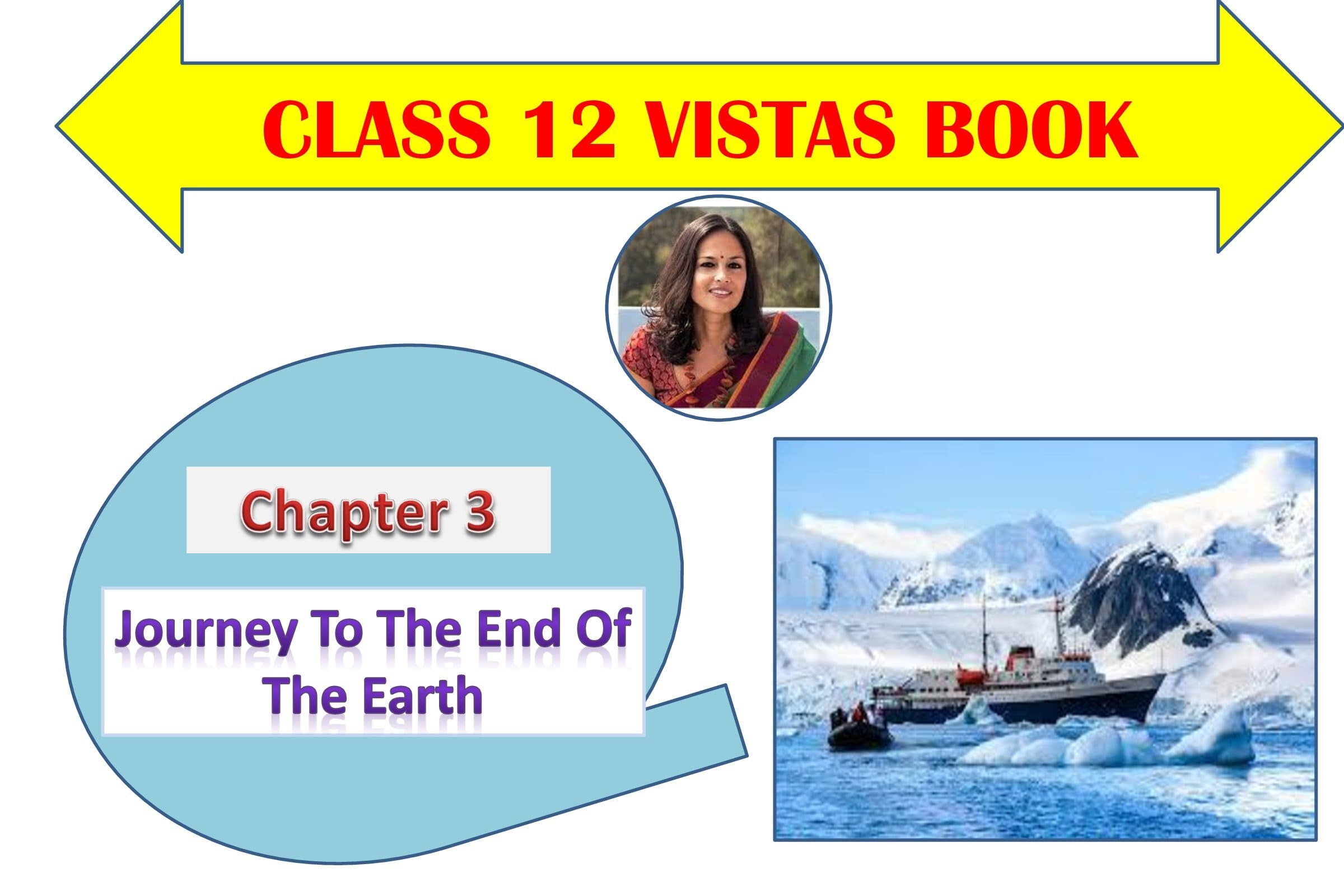
Journey to the end of the Earth Summary, Theme, Explanation Questions Answers class 12
Table of Contents
Journey to the End of the Earth Summary, explanation, and question answers for Chapter 3, “Journey to the End of the Earth” from the CBSE Class 12 English Vistas book
Explore the content of Lesson 3, “ Journey to the End of the Earth ,” from the CBSE Class 12 English Vistas book. The comprehensive package includes a summary, detailed explanations of the lesson, elucidation of challenging vocabulary, and a subsequent summary of the entire lesson. Additionally, the material encompasses all exercises and questions related to “Journey to the End of the Earth” found at the end of the lesson.
Journey to the end of the Earth Class 12 Vistas by – Tishani Doshi
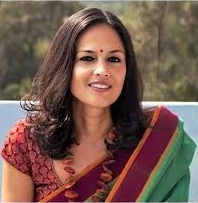
What is Travelogue ?
A travelogue is a narrative or account of a person’s journey or experiences during their travels. It often includes details about the places visited, the people encountered, and the observations made along the way. Travelogues can take various forms, including written narratives, books, blogs, or even multimedia presentations, and they aim to share the traveller’s perspective and insights about different locations and cultures.
Journey to the End of the Earth Theme
Journey to the end of the Earth is about the author Tishani Doshi’s journey to Antarctica. The theme of the chapter revolves around exploration, the beauty of nature, and the impact of human activities on the environment. Doshi reflects on the pristine and fragile ecosystem of Antarctica, drawing attention to the need for conservation and environmental awareness. The chapter explores the idea of the journey as both a physical expedition and a metaphor for self-discovery and understanding our connection to the planet.
Journey to the end of the Earth Summary
Earlier this year, I was on a Russian research ship called the Akademik Shokalskiy, heading to Antarctica. My trip started in Madras, 13.09 degrees north of the Equator. During the journey, we crossed nine time zones, went through six checkpoints, crossed three bodies of water, and passed through various ecosystems.
When I finally stepped onto Antarctica, I had been traveling for more than 100 hours by car, airplane, and ship. So, my first feeling when I saw Antarctica’s huge white land and endless blue sky was relief. After that, I felt an immediate and deep sense of wonder. I was amazed by how vast and isolated Antarctica is. I couldn’t believe that there was a time when India and Antarctica were connected as part of the same land.
A very long time ago, about 650 million years back, there was a big combined southern supercontinent called Gondwana. It was mostly centered around what’s now Antarctica. Back then, things were really different. Humans didn’t exist yet, and the weather was much warmer, with lots of different plants and animals. Gondwana lasted for about 500 million years. But later, around the time when the dinosaurs disappeared, and the age of mammals started, this landmass broke apart into different countries, shaping the Earth like we see it today.
Part Of History –
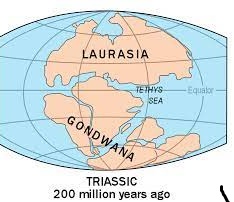
Going to Antarctica now means being a part of its history and understanding where we’ve come from and where we might be going. It’s about getting why things like Cordilleran folds and pre-Cambrian granite shields, ozone, carbon, evolution, and extinction are important. When you think about all that can happen in a million years, it can be pretty mind-boggling. Just imagine: India moving north and pushing against Asia to make the Himalayas, or South America drifting away to join North America. This created the Drake Passage, making a cold current that keeps Antarctica icy, isolated, and at the bottom of the world.
As a person from sunny South India, spending two weeks in a place where 90% of the Earth’s ice is stored is not very comforting. It’s not just cold for the body, but also for the imagination. It feels like entering a huge empty space, like a giant ping-pong ball with no signs of human life—no trees, billboards, or buildings. In this place, you lose your sense of how big things are and what time it is. You can see things that are super tiny, like midges and mites, and also huge things like blue whales and icebergs as big as countries (some as big as Belgium).
The days just keep going in this weird 24-hour sunlight during the southern summer, and it’s really quiet except for sometimes when there’s an avalanche or a big chunk of ice breaks off. It feels like a special and quiet place that makes you think about the history of the Earth. Sadly, the future doesn’t look so good for humans here.
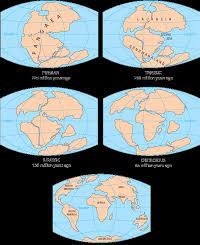
Human Impact-
People have been around for just 12,000 years, which is like a tiny moment on a big clock of Earth’s history. In this short time, we’ve made a lot of noise, showing that we’re in charge by building villages, towns, cities, and even megacities. But because there are so many of us, we’re now competing with other animals for things we need. Also, burning a lot of fossil fuels has made a thick blanket of carbon dioxide around the world. This blanket is making the Earth warmer bit by bit.
People are arguing a lot about climate change nowadays. They wonder if the huge West Antarctic ice sheet will melt completely, or if the Gulf Stream ocean current will get messed up. Some even worry if it’s going to be the end of the world as we know it. Well, who knows? But one thing for sure is that Antarctica is really important in this debate. It’s not just because it’s a place where no humans live, keeping it pretty clean. The big deal is that it has really old carbon records trapped in its ice, like a history book of the Earth for the past half-million years. If we want to learn about how the Earth was in the past, how it is now, and what might happen in the future, Antarctica is the place to check out.
I was part of a program called Students on Ice while on the Shokalskiy ship. This program’s goal is to take high school students to far-off places and give them exciting learning opportunities. The aim is to help them develop a new understanding and respect for our planet. The program has been running for six years and is led by a Canadian named Geoff Green. He started this program because he was tired of taking famous people and retired individuals who could only contribute in limited ways.
With Students on Ice, he wants to provide a life-changing experience to the future leaders of our world, giving them the chance to absorb, learn, and most importantly, take action.The program works really well because it’s impossible not to be influenced when you visit the South Pole. It’s simple to be indifferent or unconcerned about polar ice melting when you’re in your comfy home, but when you witness glaciers shrinking and ice shelves falling apart, you start understanding that global warming is a genuine and serious threat.
Antarctica is a great place to study how small changes in the environment can cause big effects because of its simple ecosystem and limited biodiversity. For example, there are tiny plants called phytoplankton in the ocean that play a crucial role in the Southern Ocean’s food chain. These small plants use the sun’s energy to make food through a process called photosynthesis. Scientists warn that if the ozone layer continues to deplete, it could impact the activities of phytoplankton, affecting the lives of all the marine animals and birds in the region, as well as the global carbon cycle. The story of phytoplankton teaches us a valuable lesson: taking care of small things can have a big impact on everything else.
Walk on the Ocean –
During my time in Antarctica, I had many moments of realization, but one of the best happened just before reaching the Antarctic Circle at 65.55 degrees south. Our ship, the Shokalskiy, got stuck in thick ice, and we couldn’t go any further. The Captain decided to turn around, but before we did, all 52 of us were told to climb down and walk on the ocean. Wearing special gear, we walked on a vast expanse of white ice. Beneath the ice was a meter-thick layer, and below that, 180 meters of living saltwater. In the distance, Crabeater seals were lounging on ice floes. It was an amazing realization: everything is connected.
After crossing nine time zones, six checkpoints, three bodies of water, and various ecosystems, I couldn’t help but marvel at the delicate balance on our planet. I wondered how things would change if Antarctica became as warm as it used to be. Would we still be here to witness it, or would we have disappeared like dinosaurs, mammoths, and woolly rhinos? It’s hard to predict. However, spending two weeks with a group of idealistic teenagers who want to save the world made me realize that a lot can happen over a million years, but even a single day can make a significant difference!
Question Answers –
Short questions answers-.
Q.1. What was Academic Shokalsky? Where was it headed and why?
A.1 . The Academic Shokalsky was a Russian research vessel headed to the Antartica, the coldest driest and windiest continent of the world. It was committed to providing inspiring educational opportunities to the students so that they could gain anew understanding of and respect for the planet as a part of the programme called “Students On Ice.”
Q.2 What was Gondawana? For how long and where did it exist?
A.2 Gondawana was the name of the giant, amalgamated, southern super continent centered around the present day Antartica which existed about 650 million years ago. The warmer climate posted a variety of flora and fauna and the landmark thrive3d for 500 million.
Q.3 Why does the author feel that being in the Antartica is like being in a giant ping-pong ball?
A.3 the author felt so because like a giant ping-pong bal, it was devoid of any human markers like trees, billboards and buildings. He lost all sense of earthly perspective and days seem to go on endlessly. The silence was interrupted only while the sound of an avalanche or calving of ice sheet.
Q.4 What was one of the hotly contested and environmental debate of our time? Why is Antartica a crucial element in the debate?
A.4 Climate change is what features in most environmental debates. The Antartica is the only place in the world that has never sustained human population and is pure in this respect but more importantly because it holds in its ice core. Half a million year old carbon records trapped in layers of ice.
Q.5 How does the writer get across the message that one has t take care of small things and big things will fall into place?
A.5 The phytoplanktons which sustains the entire southern ocean’s food chain uses sun’s energy for photosynthesis and a further depletion in the ozone layer could affect the activities which in turn would adversely affect the lives of all th marine animals, birds of the region and the global carbon cycle.
Q.6 What are the indications for the future of humankind?
A.6 The rapid human population growth and limited resources exert pressure on land. Melting of ice-caps, depletion of ozone layer and global warming are the real immediate dangers for mankind.
Q.7 What is the aim of Geoff Green’s program ‘Students on Ice’ ?
A.7 -The aim of the “Students on Ice” program is to provide high school students with inspiring educational opportunities by taking them to different ends of the world, including places like Antarctica. The program seeks to foster a new understanding and respect for the planet among young minds. It offers life-changing experiences to students, allowing them to absorb, learn, and take action for the benefit of the environment. “Students on Ice” focuses on exposing the future generation of policy-makers to diverse environments, encouraging them to engage with and contribute positively to the world.
Long Questions Answers-
Q.1 Why is Antartica the place to go to understand the earth’s present, past and future?
A.1 The Antartica is the only place on the earth that has never sustained a human population. And in this respect it remains untouched, pure and unhampered and therefore remains relatively pristine in this respect. In this frozen ice core are buried half a million year old carbon records trapped in its layers of ice. If we are desirous of learning about the pat, the present and the future, the Antartica is the only place to go to.
Q.2 The world’s geological history is trapped in Antartica. How is the study f this region useful to us?
A.2 The study of this region is useful as it gives us an insight into how the earth forms continents as they are today came into being. It gives us an understanding about the formation and significance of cordilleran folds and pre-Cambrian granite shields, about carbon and ozone and the animals thrived at a certain time in history and why they became extinct. It throws light on why certain species evolved and where we are heading with the life styles that we adopted. There are lessons to be learnt from half a million years of secrets and carbon records buried I th frozen ice core of Antartica. It tells us that 650 milllion years ago the giant amalgamated supercontinent Gondwana did exist but at the time that the dinosaurs began to get extinct and around the time that human beings came into existence, the landmass separated into continents.
Q.3 “And for the few months, the prognosis is not good.” In what context and on what basis does the author make this observation?
A.3 Doshi is of the opinion that though the human race has been around only for a mere 12000 years we have already managed to create as situation that can have the most disastrous consequences on the future health of the planet an its ability to sustain human life. The Antartica is a centre of all climate change debates as it is the only place in the world that has ever sustained a human population and is therefore pure and holds in its ice-cores half a million year old carbon records. Its ecosystem is simple and is the prefect place to study how little changes in the environment can have big repercussions. Any depletion in the ocean’s food chain adversely affects the lives of all marine animals, birds and carbon cycle. The threat of global warming becomes a reality when one sees retreating dice-shelves collapsing.
Q4. What are Geoff Green’s reasons for including high school students in the Students on Ice expedition ?
A.4- Geoff Green, the founder of Students on Ice, has several reasons for including high school students in the expedition. Some reasons are given below:
Educational Opportunity: Geoff Green believes that the polar regions offer a unique and powerful educational opportunity. Experiencing the Arctic or Antarctic firsthand allows students to witness the impacts of climate change, gain a deeper understanding of polar ecosystems, and engage with scientific research.
Inspiration and Empowerment: Green aims to inspire and empower young people by exposing them to the wonders of the polar regions. Through direct experience, students can develop a strong connection with the environment and become advocates for environmental conservation and sustainability.
Future Leaders in Environmental Stewardship: By involving high school students, Green is investing in the development of future leaders in environmental stewardship. The hope is that these students, having witnessed the effects of climate change and learned about the importance of environmental preservation, will take on active roles in addressing global environmental challenges.
Global Perspective: The Students on Ice expedition provides students with a global perspective on climate change and environmental issues. By interacting with peers from around the world, students can gain insights into the varied impacts of climate change and collaborate on potential solutions.
Hands-On Learning: Green believes in the power of experiential, hands-on learning. Being in the polar regions allows students to apply what they have learned in the classroom to real-world situations. This type of immersive learning is often more impactful and memorable than traditional classroom education.
Cultural Exchange: The expedition facilitates cultural exchange among students from diverse backgrounds. This interaction fosters a sense of global community and promotes understanding among individuals from different cultures, fostering a collaborative approach to addressing environmental challenges.
Creating Ambassadors for the Environment: Geoff Green sees high school students as potential ambassadors for the environment. By providing them with a transformative experience in the polar regions, he aims to cultivate a sense of responsibility and advocacy for the preservation of the Earth’s ecosystems.
In summary, Geoff Green’s inclusion of high school students in the Students on Ice expedition is driven by a desire to provide them with a transformative educational experience, inspire environmental stewardship, and empower them to become advocates for the planet.
Leave a Comment Cancel reply
Save my name, email, and website in this browser for the next time I comment.
12 Incredible Ways to Experience India
Visit india's vibrant cities.
India’s great cities each have a distinctive character: Mumbai overwhelms with its humming street-life and shimmering financial center; Delhi impresses with its Mughal history and colonial geometry; Kolkata beguiles with faded grandeur and Bengali street-food; and Chennai amazes with its cultural treasures and magnificent beaches. What these vast metropolises all have in common, though, is their dynamic mix of old and new—an intoxicating blend of India’s rich heritage and its burgeoning modernization. Even if you’re destined for more serene, rural settings, it’s worth taking the plunge, if only to marvel at the non-stop action.
Hike the incredible Himalayas
Northern India is home to many of the most spectacular regions of the world’s highest mountain range, which traces a crescent from Kashmir in the northwest to Arunchal Pradesh in the remote east. The mountains offer endless opportunities for adventure, such as mountain climbing and trekking in Leh-Ladakh . Two prime times to visit are spring, when blooming rhododendron forests swathe the lower altitudes in color, and in October, after the Indian summer monsoon recedes and the resulting clear skies reveal crystalline views. Choice trekking routes include Uttarakhand’s paradisiac Valley of Flowers , and the 11-day Goecha La Trek in Sikkim, in the shadow of mighty Kanchenjunga , the third highest mountain in the world.
Journey across India by train
The world's second biggest railways system is also among its most atmospheric and busiest; its thousands of trains carrying an estimated 23 million passengers a day. New luxury carriages, upgraded cars are among the many innovative ways Indian Railways is enhancing train travel. A long overnight train ride remains a quintessential Indian experience, and one of the very best ways to rub shoulders with local people. Experience the historic charms of chugging across huge distances on an 18-carriage cross-country express. For a scenic, high-altitude train trek, hop aboard the narrow-gauge Matheran line or any of the three UNESCO World Heritage Sites Mountain Railways of India : Darjeeling Himalayan Railway, Nilgiri Mountain Railway, and Kalka Shimla Railway.
Take a tiger reserve safari
There are about 50 natural reserves in India dedicated to the conservation of the nation’s most iconic animal. The reserves typically are open to visitors from around October to June. Tiger sightings are most likely in larger national parks, such as Ranthambore , Bandhavgarh , and Jim Corbett . Book a jeep safari with an experienced guide on board to help spy clues—like fresh pugmarks or a clawed tree—signaling a tiger could be close by. While even local expertise won’t guarantee an encounter with the cats, most parks are teeming with other wildlife to see. Arguably the biggest reward, however, is knowing that tourism-based conservation is working. The ongoing census of the country’s tiger population suggests that numbers of the magnificent cats increased from 1,411 in 2006 to 2,226 in 2014.
Revel in a cultural festival
India, exuberant and vivid every day, hits a crescendo during its myriad festivals. In a country where the dominant Hindu religion boasts tens of thousands of gods, it can sometimes feel as though every town, village, and street corner have some pageant to celebrate. Festivities tend to involve fire, food, and votive offerings. Most also feature a profusion of color, as in the Chaitra Poornima festival (pictured), at the Jyotiba Temple in Kolhapur, where revelers celebrate by throwing gulal, a powdered purple dye. The sacred Hindu festival Ardh Kumbh Mela, which takes place every six years, is expected to draw tens of millions of pilgrims to Prayagraj ( Allahabad ) from January to March, 2019.
See the sacred Ganges River
From its wellsprings in the high, snow-capped Himalayas of Uttarakhand to its sprawling delta on the Bay of Bengal, the Ganges River is the lifeblood of northern India. For people of all backgrounds and faith traditions, seeing the river for the first time is a moving experience. Sites of Hindu veneration can be found along all 1,500 miles of the Ganges. Every evening, lamps are lit and the Ganga Aarti devotional ritual is performed on the banks of the holy river in the sacred cities of Rishikesh (pictured), Haridwar , and Varanasi . Throughout the year, tens of thousands of pilgrims immerse themselves in the sacred river.
Seek inner peace at a monastery
Perched among the high floodplains of the Indus Valley, on the southern rim of the Karakoram Mountains, Ladakh is a world apart. A Buddhist enclave for the last thousand years, it’s culturally more akin to neighboring Tibet than to the rest of India. Monasteries like Hemis and Thiksey , built in the multi-storied whitewashed style of Tibetan gompas (spiritual communities), are open to visitors, who come to marvel at the ancient wood statuary, prayer-wheels, and Buddhist shrines, often guarded by gargantuan outdoor statues of Buddha facing out across the stark, high-altitude desert. The one-hour flight from Delhi to the regional capital Leh alone is worth the journey for the exhilarating, above-the-clouds views of the Great Himalayan Range.
Go whitewater rafting
By the time they tumble out of the high Himalayan valleys, North India’s rivers froth into some of the world’s most exhilarating white-water. Experienced rafting outfitters now forge the middle reaches of the Ganges, north of Rishikesh, with some offering multi-day excursions featuring rafting by day and camping overnight on riverside sandbanks. Those craving an even greater challenge can venture to India’s northeastern corner, where the Brahmaputra, nicknamed “The Everest of Rivers,” presents a formidable menu of rapids as it rages through the canyons of Arunachal Pradesh.
Tour the grandeur of Hampi
The Taj Mahal might steal most of the Instagram bandwidth, but arguably India’s most evocative archeological marvel is a thousand miles south, in the boulder-fields of Central Karnataka. The Hampi UNESCO World Heritage Site dates from the Vijayanagar dynasty, which dominated southern India’s Deccan Plateau for three hundred years. What remains of their bathhouses, elephant stables, and royal enclosures now dot an undulating landscape of paddy fields and umber stone. Much of the complex is an archeological site, its original structures razed by successive enemy raids. However, some buildings are still gloriously intact, recalling the seventeenth century apotheosis of Indo-Islamic architecture. For the more adventurous, the surrounding rock formations are a climber’s dream.
Experience traditional folk dancing
Few areas of Indian culture better testify to the country’s than the endless variety of its traditional dance . A staple component of local festivals, folk dancing provides a focal point for traditional music and an opportunity to assert regional identity. It’s also often used as a form of visual storytelling—colorfully and dramatically relating historic events or religious legends. In Rajasthan, traditional Gair dance performers (pictured) respond to the raucous melodies of flutes and cymbals by spinning in circular formation, intermittently clashing sticks in time with the music.
Cross living root bridges
Few tourists to India's northeast corner venture much beyond Kolkata, but the small hill states encircling Bangladesh are an intriguing mix of landscapes and tribal cultures. The small province of Meghalaya, sometimes called the "Scotland of the East” because of its Caledonian climate, is the wettest place on earth. But it is also home to the root bridges of Cherrapunji, walkable bridges that have been crafted from the muscular roots of strangler fig trees, braided together by generations of locals to span canyon streams. The steep hike to reach them is an adrenaline-pumping challenge, but the reward is surely one of the most curious sights in India.
See a legendary Golden Temple
No amount of foreknowledge can prepare you for a day inside Northern India’s Golden Temple , the holiest site in Sikhism. Established in 1577 by the fourth Sikh guru, Ram Das, the complex is a crucible of worship and communion; ritual chanting, a hallmark of Sikh devotion, reverberates around the marble causeways for 24 hours a day. Consider getting here before dawn to witness the Granth Sahib, Sikhism’s Holy Book, as it’s carried to the Harmandir, the central shrine surrounded by the Amrit Sarovar, a limpid geometrical pool. The pool waters form the spiritual heart of the temple and are believed to be blessed with miraculous powers of healing.
- Terms of Use
- Privacy Policy
- Your US State Privacy Rights
- Children's Online Privacy Policy
- Interest-Based Ads
- About Nielsen Measurement
- Do Not Sell or Share My Personal Information
- Nat Geo Home
- Attend a Live Event
- Book a Trip
- Inspire Your Kids
- Shop Nat Geo
- Visit the D.C. Museum
- Learn About Our Impact
- Support Our Mission
- Advertise With Us
- Customer Service
- Renew Subscription
- Manage Your Subscription
- Work at Nat Geo
- Sign Up for Our Newsletters
- Contribute to Protect the Planet
Copyright © 1996-2015 National Geographic Society Copyright © 2015-2024 National Geographic Partners, LLC. All rights reserved

Breathedreamgo
The transformational travel guide
10 Transformational travel in India stories
- Transformational travel experiences from travelers to India
Finding peace in India
- Helen Suk is a Toronto-based travel writer and photographer. A passionate explorer, she encourages others to seek new experiences and see the world in a new way. She also provides travel tips on her blog, Not Without My Passport.
Finding Love in India
- Ellie & Ravi are an Anglo – Indian couple writing about mindful travel on their blog soultravelblog.com, they help conscious travellers find the best inspiration for their next sustainable trip.
Finding enlightenment in India
- Gloria Apara of Nomadicchica.com. Gloria Apara is a native of Santiago Chile with more than 20 years of travel experience, having traveled through Asia, Europe, and South America, Gloria has a wealth of travel knowledge and experience to share. A physical therapist by profession, and writer and photographer by passion, Gloria set out to make her dreams come true and created NomadicChica to inspire others to travel and empower women travels with her knowledge.
- Couchsurfing in India and learning to trust
Marco Ferrarese of monkeyrockworld.com.
- India is a place for rebirth … and birth!
Ania from The Travelling Twins.
- Life-Changing experience India: Three months solo hiking in the Indian Himalayas
- By Pashmina from The Gone Goat. Pashmina writes about her adventures to inspire others to be outstanding in their own way. She writes about hiking, adventure cycling to inspire people to take up adventures, they thought they could never be part of.
Experiencing community in Amritsar
Traveling in india as a vegan, wendy werneth is an intrepid world traveler, vegan foodie and animal lover. she is the author of the book veggie planet and the creator of the award-winning vegan travel blog the nomadic vegan, where she uncovers vegan treasures across the globe so that you can be vegan anywhere and spread compassion everywhere., dreaming of india.
- Ellis is a cultural anthropologist from the Netherlands who has travelled for more than 20 years to over 50 countries along the ancient Silk Road with a special love for India and Nepal. This geeky and introvert travel blogger is a lover of good food, mountains, nature, wildlife and everything that lightens up the night sky. Ellis Veen of Backpack Adventures.

Life Changing India
- By Rosalind Cuthbertson of Frequent Traveller. Australians Ros and Alan Cuthbertson quit their conventional 9 to 5 lifestyle to travel the world full time. For part of the year they are based in vibrant Thailand. It is from here that they regularly travel to nearby Asian countries sourcing content for their travel Blog Frequent Traveller. When not exploring Asia, they travel further afield and have over the course of the last few years travelled to many European destinations, as well as North and South America.
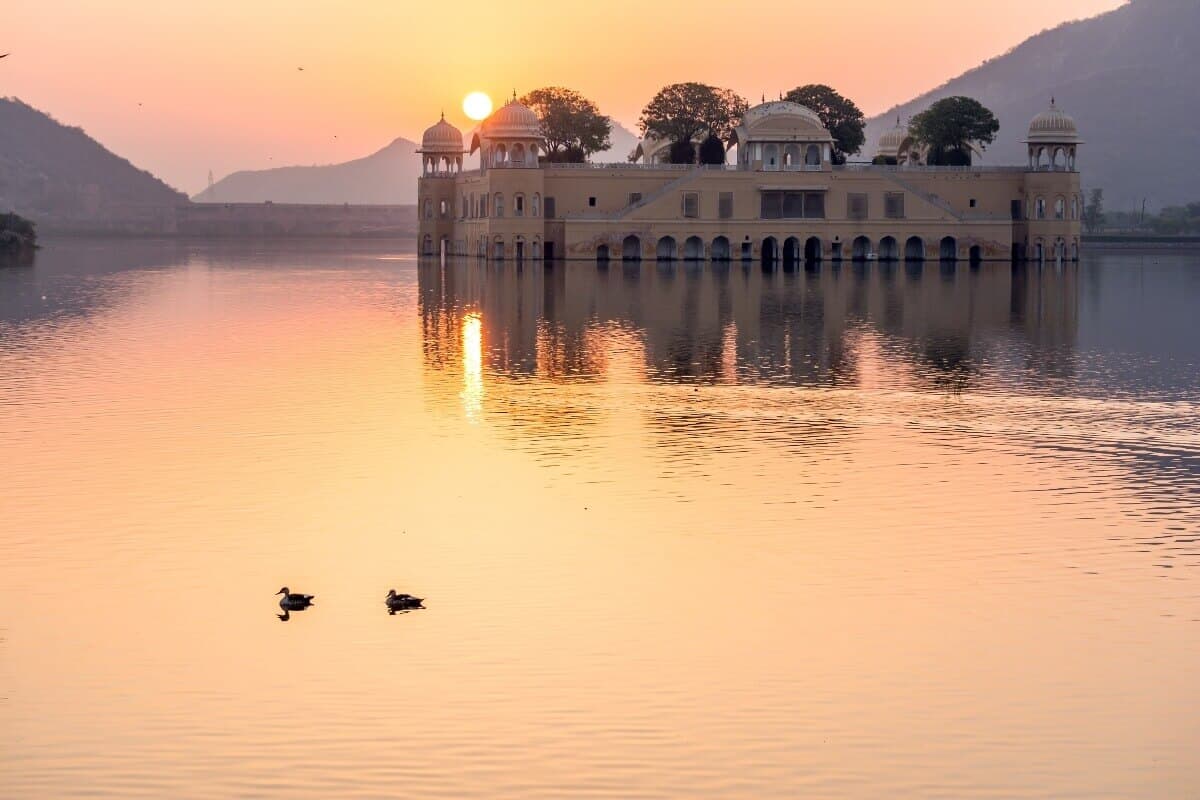
Table of Contents
Transformational travel experiences from travelers to India
INDIA IS NOT LIKE other destinations. It’s more challenging, more colourful, more intense, more …. everything. And it’s because of this that travel in India can be both extremes of frustrating and magical. But more than anything, travel in India has the potential to be life-changing.
Well, it certainly changed my life! I arrived in December 2005 for a six-month trip, not knowing what would happen … and everything happened. I recovered from depression and found a new man, a new family, a new home, a new career, and a new life. So, I know from my own experience how travelling in India changes people. These people concur. Their stories demonstrate the power of travel to heal people, transform lives, and broaden perspectives.
India gets a lot of bad press, but these stories defy the stereotypes and show another side to the story, another perspective. Thanks so much to everyone for contributing such heart-felt, inspiring and very moving stories! Read on to find inspiration.
If you are planning to travel in India, let us help you! We offer itinerary planning, India for Beginners custom tours , and much more to make sure your trip to India is filled with more magic … and less madness.
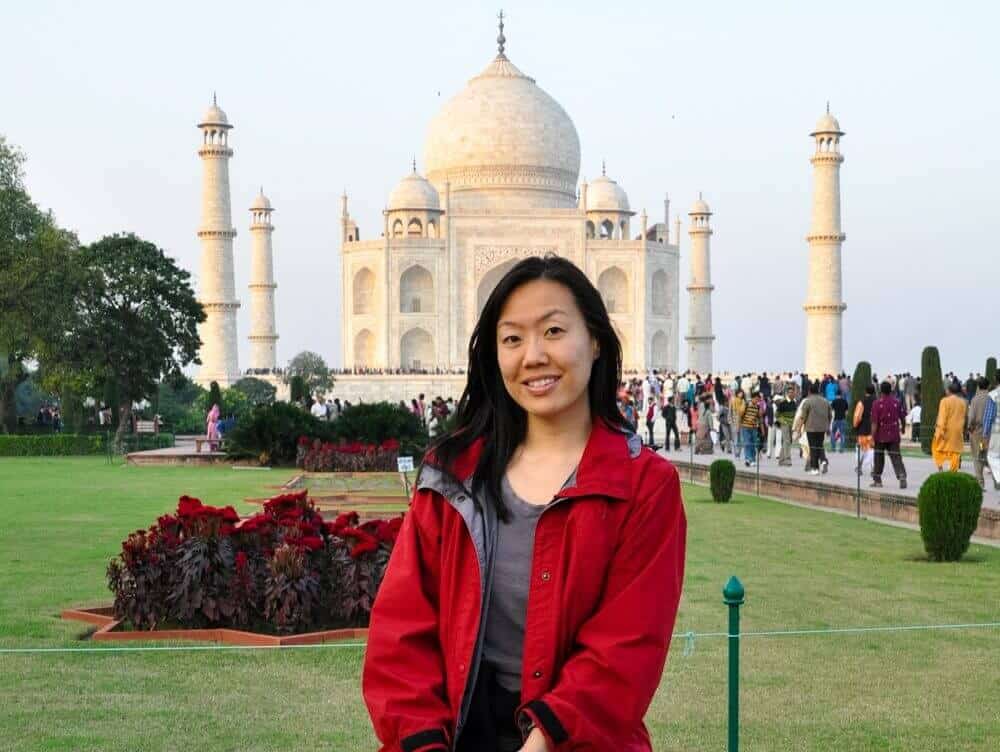
My heart ached. My soul was empty. Nothing mattered anymore.
Almost one year after the murder of my older brother John, I made the journey to India. Maybe, I thought, it would help me accept the shocking loss. A shift in perspective was needed and I knew India – a deeply spiritual country with a radically different approach to death – could be the catalyst for this. And I needed to go alone.
India had already been on my travel list so, of course, I visited the Taj Mahal, a glorious structure. Goa, Dharamsala, Haridwar and Rishikesh also left me spellbound. But it was the holy city of Varanasi where I found the strength to finally pull myself from the tidal waves of grief.
For Hindus, the Ganges River is believed to have purifying properties. Pilgrims bathe in its sacred waters in the hopes of being cleansed of sin, and the ashes of loved ones are scattered here to liberate their souls from the cycle of rebirth.
For tourists, the ghats where bodies are openly cremated can be a morbid, even gruesome, experience – a sharp contrast to the taboo treatment of death in Western cultures. We are terrified of mortality. We hate talking about it. Sometimes, we even refrain from reaching out to a friend who’s suffered a profound loss because we’re so afraid.
After Varanasi, I learned just how unhealthy our death-phobic culture is. Death may be omnipresent in Varanasi but so too is joy. For me, this was unexpected. In fact, it’s not unusual for funeral processions to include singing and dancing. Why wouldn’t participants be happy when their deceased loved ones are about to be brought closer to heaven?
I had spent months imagining the last moments of John’s life. In Varanasi I was able see that, as horrific as his death was, it was also a beginning. Finally, in India, I laid John’s soul to rest.
Helen Suk is a Toronto-based travel writer and photographer. A passionate explorer, she encourages others to seek new experiences and see the world in a new way. She also provides travel tips on her blog, Not Without My Passport .
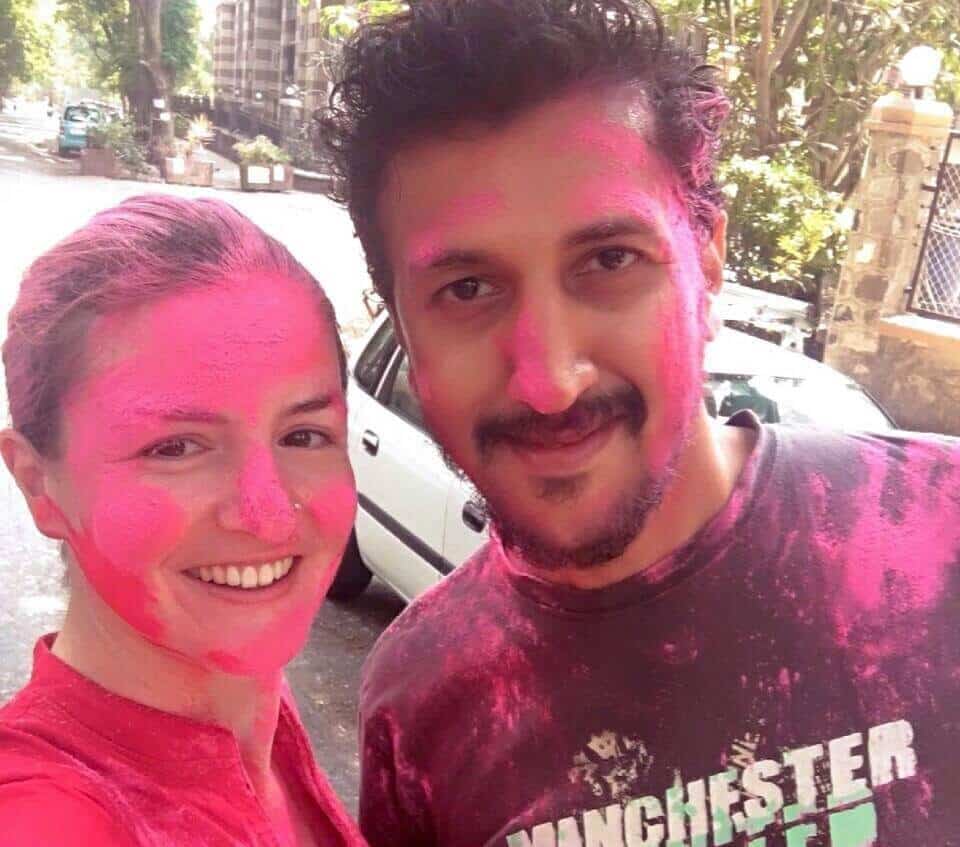
Some places that we travel to leave their mark more than others. We like to think that every place we visit changes us in some way, but in some countries that change is much more profound. In the case of my travels to India, they have completely changed my life.
Before my trips to India I would get nervous. Family and friends were never particularly understanding of why I insisted on journeying half way across the world to solo travel India. But once I settled into the chaotic peace, I would find myself more and more at home in India, learning to live by the moment and surrender just a little bit of that hard-wired need to be in control.
In 2017 my travels in India took a turn for the unexpected. A day before I was due to leave India after a month of travelling there, I met Ravi in his hometown of Mumbai. Over chai and wandering around Colaba, posing for touristy shots in front of the gateway, we discovered a connection we knew we wanted to grow. I didn’t see him again for another four months. Fast forward two years and we’re living on the other side of the world in Toronto, Canada, and have travelled many places in India and around the world that are new to both of us, and we’ve been able to see places differently through each others’ eyes.
Finding love in India has shown me that the typecasting around gender roles in patriarchal societies (which India is considered) are not always true. Both of us are a long way from home – in many senses, which has taught us to be kinder, more flexible, and more understanding. I have learned a lot about what it truly means to be close to ones’ family – even on the end of a phone, and Ravi has learned to make the perfect poha. I have learned that far from trying to scam people (the traveller stereotype), most Indians are incredibly kind. Back in India we have been pleasantly surprised by the number of people who accept us openly as a mixed ethnicity couple, vs the number of people who judge for breaking the mold.
Ellie & Ravi are an Anglo – Indian couple writing about mindful travel on their blog soultravelblog.com , they help conscious travellers find the best inspiration for their next sustainable trip.
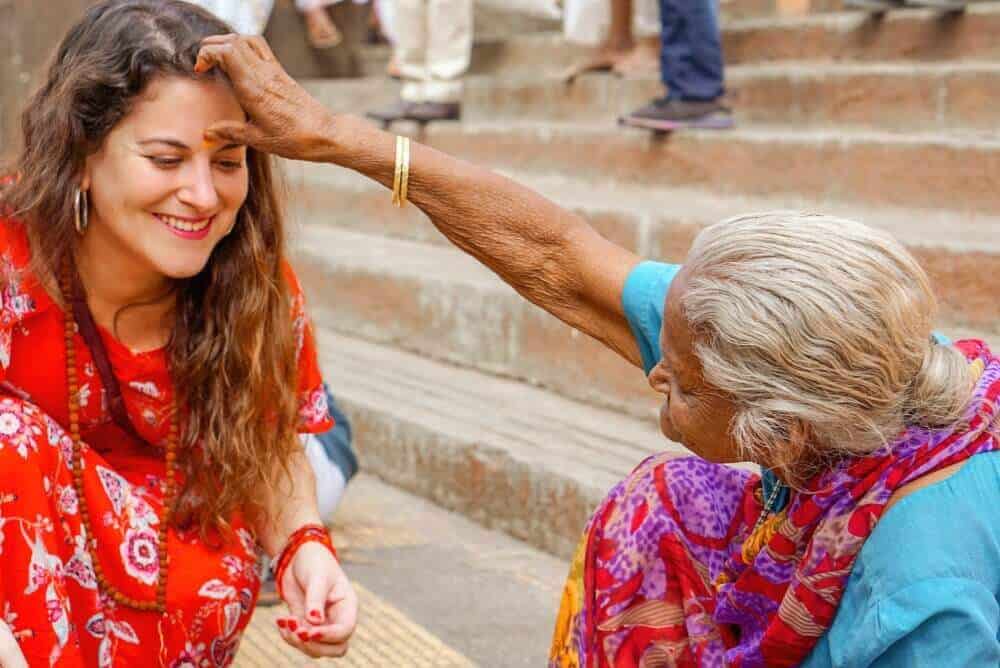
It was my dream for most of my life to go to India. Around the age of 18, I was deep into Yoga, practicing and learning and even almost dedicating myself fully to be a yoga teacher.
Paths in life changed and this ever dream stayed in the dreams box until four years ago when I suddenly had the opportunity to go there. I saw myself with a one-way ticket to India with no plans, not much money, lots of fear and no idea what to expect. I was actually expecting the worse and also all my family and friends, it was that time when several cases of harm against women were busting in every media channel.
It was a time of change in my life where I was searching my passion and I was desperately needing a new path to follow more aligned with my true needs. The problem was, I was so disconnected from myself that I had no clue what to do. I then said to myself I would use the journey in India to reconnect and to find myself again. I would only leave India when I had at least a little clue about what to do with my life.
I never thought I would stay almost four months in India because at the beginning I was feeling very overwhelmed with everything, from the noises, the people, and especially the heat… Cause I was crazy enough to do my first India trip in the hottest months.
Suddenly, I remembered that I always wanted to attend a Vipassana meditation retreat and, what better than doing it near the place Buddha found enlightenment?
Those were the hardest 10 days of my life, the retreat is a silent journey where you sit to meditate for 10 hours per day, with a very strict schedule starting at 4 am! With lots of struggles I could finish the entire course and it was a few days after when I realized something had happened: I was feeling great!
India was not overwhelming anymore and I was starting to hear my feelings and my thoughts in a different way.
The days became an exciting journey, and India started to show me its beauty, in every train ride I made, in every person I have talked to, take a picture with or cross a smile. Every day was a new option to learn more about myself, to surrender to the rhythm of a country that was carrying the answer I was searching for a long time.
It was in India where I could accept my needs and what my heart truly wanted, and that was sharing my knowledge and experience with others to promote their own growth. It was in Kolkata where my blog started to have a shape and what is now my own business based on my passion. India gave me the freedom to be myself again.
Gloria Apara of Nomadicchica.com . Gloria Apara is a native of Santiago Chile with more than 20 years of travel experience, having traveled through Asia, Europe, and South America, Gloria has a wealth of travel knowledge and experience to share. A physical therapist by profession, and writer and photographer by passion, Gloria set out to make her dreams come true and created NomadicChica to inspire others to travel and empower women travels with her knowledge.

Couchsurfing in India and learning to trust
“How can you trust strangers in a country with such a high rape rate?”
This seemed to be the common mantra among my friends when I told them how I and my Malaysian wife Kit used Couchsurfing, a popular hospitality website, on most of our trips to India.
Hitting up random people on a website and asking them to stay in their homes with them didn’t seem like the best idea in a nation that carries an international reputation of “rapist men” who treat their women like crap.
These are, however, big misconceptions about the subcontinent: to us, couchsurfing in India has just helped to get closer to the hearts of some of the world’s most hospitable, amazing families and people. It helped us changed our ideas about India. And in truth, I believe that you won’t know India well without experiencing its family atmosphere. And after having stayed with more than 100 Indian hosts over the years, we can safely say that Couchsurfing was a fantastic way to do so.
On our first Couchsurfing experience in India, back in 2010, we found ourselves in Kochi, Kerala: our first host, Nigel — a single man, truck-driver by profession and living alone in a townhouse — seemed the perfect character for a Couchsurfing horror story. Someone perfectly fitting the stereotypical image that our friends had in their minds.
But it turned out that Nigel was just the perfect host: we cooked together, he insisted we talked and partied until late at night, took so many pictures together, and even let us sleep in his own room while HE took the couch. We absolutely had no issues throughout our couple of days stay with him.
Later on that same trip, we stayed with another Couchsurfer and his family in Aurangabad. After a day out at the Ellora Caves , I returned home extremely sick in my stomach. I couldn’t even move from the pain: I had caught a horrible food poisoning. And what did our Couchsurfing host and his family did for me? They let me rest on their best bed, feeding me the sweetest mangoes and porridge with milk especially cooked for myself and bought me some very good medicines out of their own pockets. They took care of me for the whole of the next day, putting me back on my feet to continue my trip through India.
To this very day, I speak almost every week to a Couchsurfer I stayed with in Lucknow, Ryan. Such a friendly, open-minded guy with a big heart. He helped me buy train tickets, anticipating the money, even before we met in India for the first time. This stuff doesn’t happen everywhere in the world.
Truth be told, Couchsurfing in India taught me a lot about the reality of this much-misrepresented country: the people are good, caring and friendly. They love foreigners and take pride in showing them the true loving heart of India. And I’m sure I would have never been able to understand this, if I had only stayed in guesthouses and hotels with other tourists.
India is a place for rebirth … and birth!
India was the craziest and most amazing place I have been. India also had the single biggest impact on my life by giving me two beautiful daughters.
We arrived in Bombay as newly-weds and working expats. We already knew that we would have to have an in-vitro conception, and before arriving in India we had visited several specialists in Europe. We didn’t think of having IVF treatment in India, but after living there a while and researching the subject on the internet, I learnt that India is a major worldwide destination for exactly this treatment. We decided to give it a try.
On my first visit to a clinic in January, I was told I probably had a bicornuate uterus and may not be able to conceive, even with IVF. Imagine my surprise. I was 32 years old and had visited a gynecologist several times but had no idea of this problem. Now, here on my first visit to a fertility clinic I learnt that my uterus might not be able to hold a baby.
A Hysterosalpingographic X-ray confirmed that the inside of my uterus was the shape of a heart. However they could not tell whether the problem was a bicornuate form of the whole uterus or whether there was a septum dividing a shape which was otherwise more normal. To find out, they carried out keyhole surgery. I went under the anaesthetic not knowing whether they would find the situation inoperable or whether they would be able to cut out a septum and leave me all set to go.
Luckily for me, it was a septum. They cut it out and I woke up with a balloon inside me to prevent it from re-growing. Three weeks later I was back in the clinic for the IVF treatment and another three weeks after that, I was confirmed pregnant. This was just three months after my first visit to the clinic.
The IVF clinic in India was a tiny suite of two rooms opening directly onto small a public yard. The waiting room for husbands was an external verandah facing a typical Bombay rubbish dump, and before Christmas that same year, now living in a different country, I gave birth to our wonderful healthy twin girls.
India is indeed a wonderful land of magic, and if you want to learn more about our IVF in India story go to our blog.
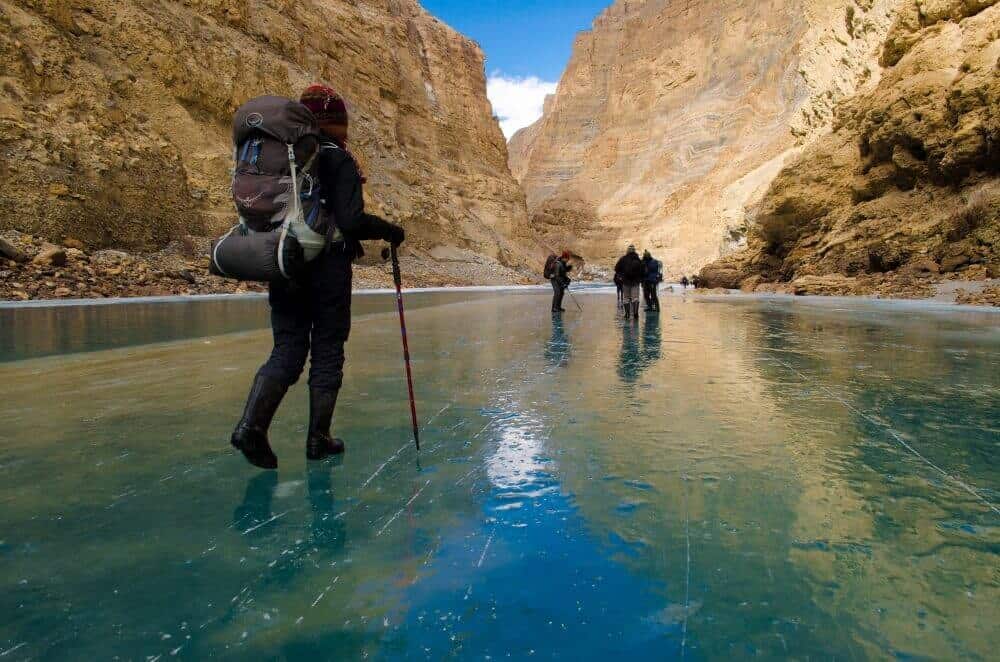
Life-Changing experience India: Three months solo hiking in the Indian Himalayas
The global media has always been on India’s case – it’s never safe. As a third-generation Indian Malaysian girl, it was thrice as hard to convince my parents that I planned to travel through the high mountain passes in the Indian Himalayas as my first solo trip, after quitting my job in 2016.
It was the raw and undiscovered India I wanted to see – the rugged landscapes and the people who live in their shadows. I had read books about various Himalayan ascents and knew that travelling to these places would require an immense slow travel pace, perfect for my first solo trip. In those three months, I traversed four mountainous states, climbed many mountains, and explored the remotest regions in the Himalayas.
One of my most memorable encounters was when I was in Uttarakhand and I made a seven kilometre trek and climbed a high rock, which brought me to a shrine dedicated to the Hindu goddess, Kali. It was a random hill and I was told that a German woman has been living there, off the grid, for the last 25 years. We chatted in Hindi – she speaks it fluently, while I don’t – and the encounter left me awestruck. I asked what made her leave everything behind to come here and stay here, and she said it was the landscapes and the simplicity that drew her to this place, and the spiritual connection she found with the mountains in the Garhwal region.
Here I was thinking myself as the hardy traveller roving through the region and then I met this German woman. It proved that the choices you make, no matter how ludicrous it sounds to others, might be the perfect one for you. Two years later, I returned to India but this time to bicycle travel as I wanted to find carbon neutral ways to see India and experience the slow life and the traditions of these remote cultures which are often forgotten and sped past.
By Pashmina from The Gone Goat . Pashmina writes about her adventures to inspire others to be outstanding in their own way. She writes about hiking, adventure cycling to inspire people to take up adventures, they thought they could never be part of.

Amritsar’s Harmandir Sahib, known in English as the Golden Temple, is the most holy place to those of the Sikh faith. It attracts pilgrims from all over the world who come to worship — as such, it tends to be completely crowded, day and night.
The Harmandir Sahib is the jewel of Amritsar, a bustling city in North India, and is a must-see for anyone visiting. I was really excited to spend some time there, but also very overwhelmed. The sea of crowds was really intimidating, especially due to the sanctity of such a special place — everyone here seemed to know what they were doing, except for me!
However, as I learned more and became more comfortable, I started to really appreciate the unique and important role of this place. A shining example of this is langar. Langar is a community kitchen in Gurdwara’s, where volunteers cook and offer vegetarian meals to everyone, regardless of background, religion, or caste, at no cost. Learning and participation of langar was one of my most incredible experiences in India. Langar is based on equality, and the idea that everyone in a community is equal.
After taking a plate, you sit in a long room with hundreds of others who have come for the meal and for the community connections. Volunteers walk up and down the aisles, dishing up freshly baked roti, dal, and vegetables. The food is wholesome and nutritious, but, more importantly, langar acts as nourishment for the soul and for the community. The concept of dining together, helping others who may not be able to afford a meal, and equality for everyone is so important, and something I would love to see more of throughout the world. If you ever have the chance to visit Amritsar and partake in the langar, it is likely to be one of your most profound experiences in India.
Katie Dundas, The Accidental Australian .
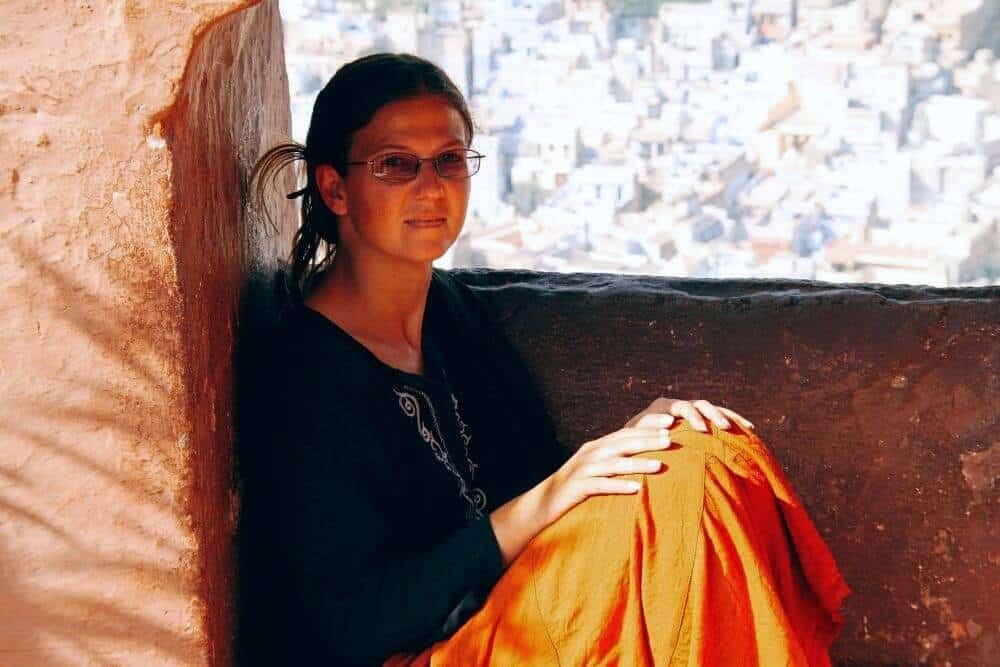
Traveling in India opened my eyes to the possibilities of living and traveling as a vegetarian or vegan . I became vegetarian while traveling in India, simply because there were so many wonderful veggie options there.
I was not yet fully aware of the animal rights issues related to meat consumption, but the fact that vegetarian meals were abundant, varied and cheaper than meat-based meals in India were reason enough for me to make the switch. I was also worried about food poisoning in India, and vegetarian options seemed safer than meat.
Experiences such as visiting a Jain-run hospital for birds and seeing how cows were revered in India planted seeds in my mind. I started to view animals in a different light. I’d always considered myself to be an animal lover, but I’d never noticed the inherent contradiction in calling myself an animal lover while continuing to eat animals.
Why did I love dogs and cats but eat cows and chickens? The answer was culture and nothing more. I had grown up in a society where eating cows was normal, but in India I realized that not all societies had the same worldview. There, cows were revered as sacred by Hindus, who were horrified by the thought of eating a hamburger made of cow flesh.
Conversely, other societies in Korea and China saw dogs as food, not as faithful and loyal companions. Which of us was right? The logical answer was that cows, dogs, chickens and cats all had equal moral value and deserved to live, so I stopped eating all animals.
A few years later, once I learned about what happens to animals in the egg and dairy industries, I eventually became vegan and started my blog, The Nomadic Vegan. This has been the most important change I’ve ever made and has led me to my life’s true purpose and mission.

India was my very first trip as a solo female traveler. I was still in my early twenties and India had always been a dream that was about to come true. Delhi however, was a true wake up call. My first day in India was a complete disaster and I was completely overwhelmed by the chaos and sensory overload. Delhi was not at all the India full of magical palaces I had imagined.
A simple task like booking my train ticket out of Delhi seemed almost impossible with several men stopping me in my way trying to catch my attention. Initially I wanted to spend several days in Delhi, but when I finally got to the ticket office I took the first available train out of the city.
It was there that I got to know a different side of India. One that I did not really expect either. While waiting for the train to leave one man asked me to keep his grandmother company because she had to travel all alone. As he waved us goodbye I wasn’t sure what to do. She didn’t speak any English, but hospitality needs no language. Soon she was sharing all her food with me and kept smiling.
It wasn’t the last heartwarming and welcoming experience I had in India. When I fell ill in Fatehpur Sikri the hotel owners kept bringing me tea and homemade medicines. My tourguide in Jaipur invited me at his family’s home for dinner and in Udaipur I received a free tour through the bazaar.
It was the people that made me fall in love with India. It was maybe not the easiest destination for my first trip as a solo female traveler, but it gave me the courage and self confidence to travel the world. Yet, there is no country like India and Delhi is now one of my favourite cities. I came back several times and every time I love India more. With so much diversity there is always something to learn and I always return home with new experiences of Indian hospitality.
Ellis is a cultural anthropologist from the Netherlands who has travelled for more than 20 years to over 50 countries along the ancient Silk Road with a special love for India and Nepal. This geeky and introvert travel blogger is a lover of good food, mountains, nature, wildlife and everything that lightens up the night sky. Ellis Veen of Backpack Adventures.
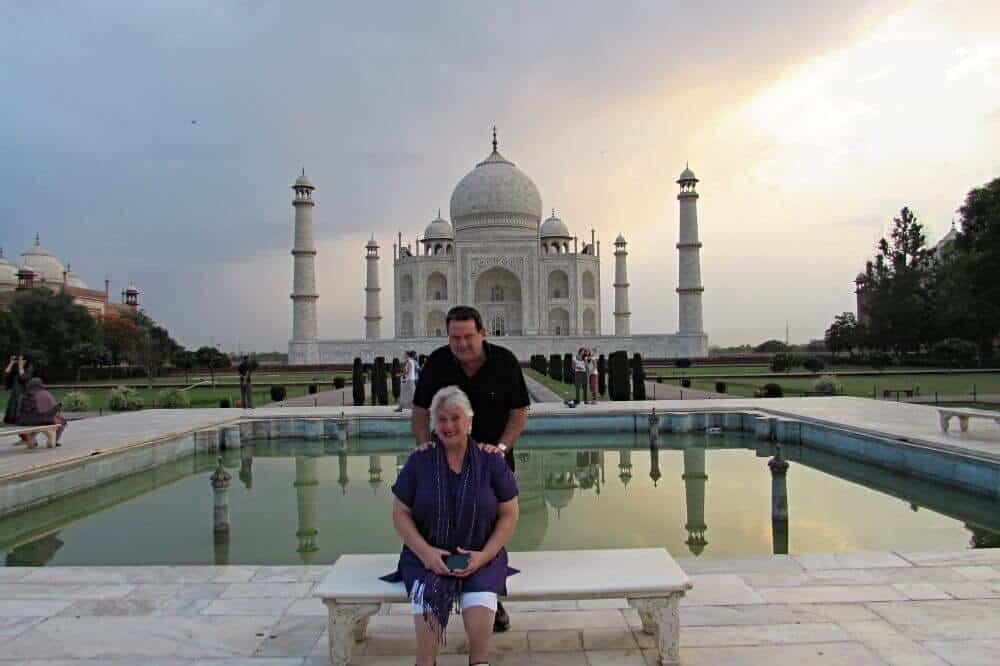
We have spent a lifetime exploring the world and have had the opportunity to tick off many bucket list destinations. When choosing our next travel destination, India was often thrown into the mix but quickly dismissed as being too difficult.
We had experienced years of family illness and loss, which left us feeling empty and exhausted. We decided to take a trip around the world, visiting places we had always dreamed of, and this time India made the list.
Truthfully, from the moment we booked our flight to India, we were doubting our decision. Would we like it? Would we find it too confronting? Most importantly, would we get sick?
These things went through our mind but in the end, we fell in love with India and it became our most memorable travel experience .
Arriving in India
Our late-night flight arrived in Delhi and soon we were being slowly driven along a busy expressway. The chaotic traffic was choked into a gridlock, a sea of cars that went on as far as the eye could see.
The never-ending shriek of car horns and thump of Bollywood movie tunes filled the air, as vibrantly decorated trucks and cars battled their way through the night. We were in India and it filled me with excitement.
Highlights of India
India is a country that filled me with emotion. During our stay we explored many ancient palaces and forts, their faded grandeur a testament to the passage of time and tribute to world where luxury, beauty and grace once reigned supreme.
Like most people our main motivation in coming to India was to see the Taj Mahal. We arrived at the Taj Mahal at dawn. Framed by the dark arches of the Great Gate, the Taj Mahal glowed a soft pink against lilac skies. The Taj Mahal touched my heart and I was so struck by its beauty that tears streamed down my face and I was unable to stop them falling.
In Jaipur we visited the Govind Dev Ji Temple, a day I will never forget. The clash of temple bells, cymbals and the rhythmic chanting of the devoted crowd, made its way straight to my soul. Again, the tears started falling and I was powerless to stop them.
To this day I don’t know why the Taj Mahal and Govind Dev Ji Temple moved me in such a way. In the past I had visited many iconic destinations and religious sights, none had reduced me to tears and none had given me such a sense of release and peace.
Life After India
After India we returned home to Australia with a deep feeling of peace. All the stress and pain of the last few years had been lifted from our soul. The feeling of loss was still there but the pain had been soothed by a thankfulness and acceptance of our place in the universe.
Not long after visiting India, we re-examined our life choices. Knowing that life is short we set off to travel full time. India remains close to our heart and we still retain that sense of peace we discovered almost four years ago.
India has a reputation for the spiritual and mystic, a certain something that draws people to it. India is confronting, dirty and chaotic but it is also steeped in history, exceedingly beautiful and one of the most fascinating countries on the planet.
By Rosalind Cuthbertson of Frequent Traveller . Australians Ros and Alan Cuthbertson quit their conventional 9 to 5 lifestyle to travel the world full time. For part of the year they are based in vibrant Thailand. It is from here that they regularly travel to nearby Asian countries sourcing content for their travel Blog Frequent Traveller. When not exploring Asia, they travel further afield and have over the course of the last few years travelled to many European destinations, as well as North and South America.
PIN it on Pinterest
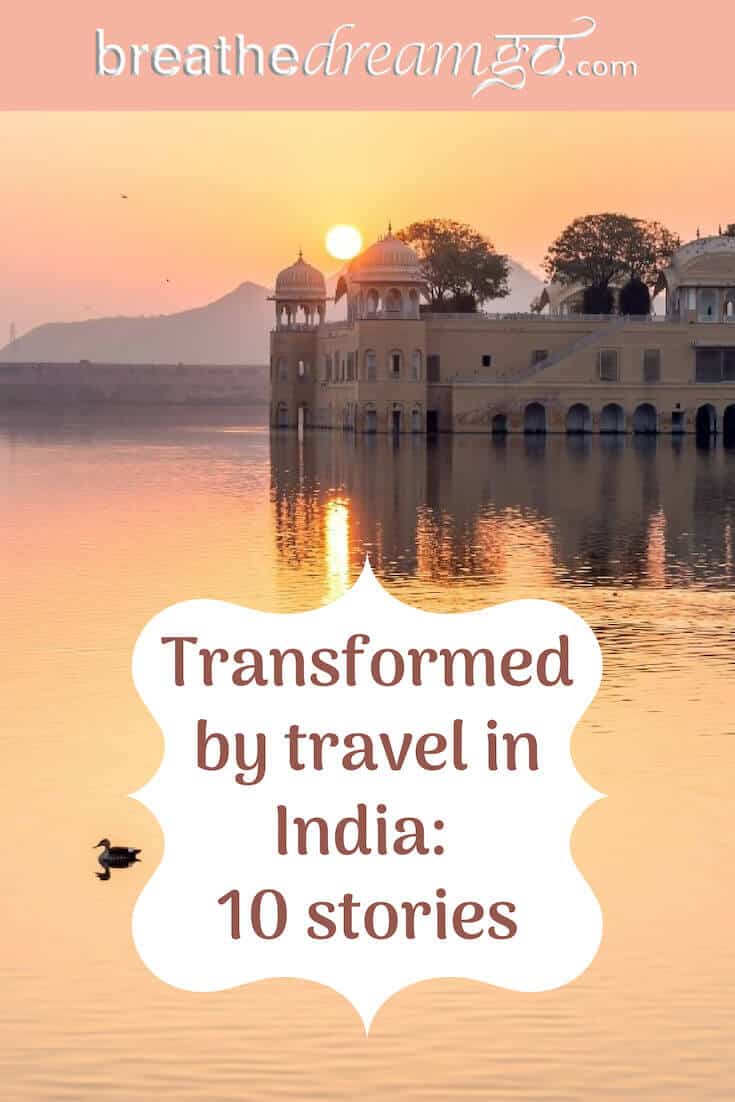
If you enjoyed this post, you can….
Sign up to The Travel Newsletter in the sidebar and follow Breathedreamgo on all social media platforms including Instagram, TripAdvisor, Facebook, Pinterest, and Twitter. Thank you!
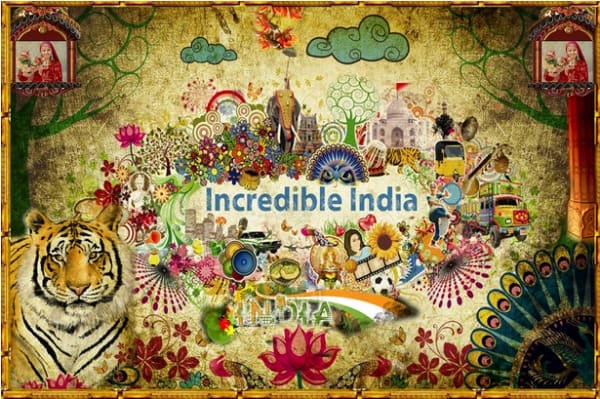
On World Tourism Day: Letter to India tourism
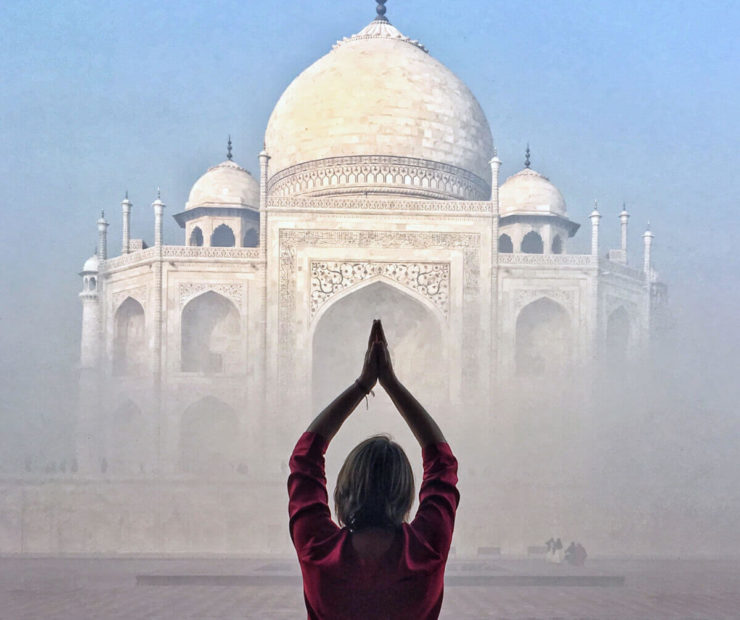
Is travel in India safe? My top 20 tips for women travellers
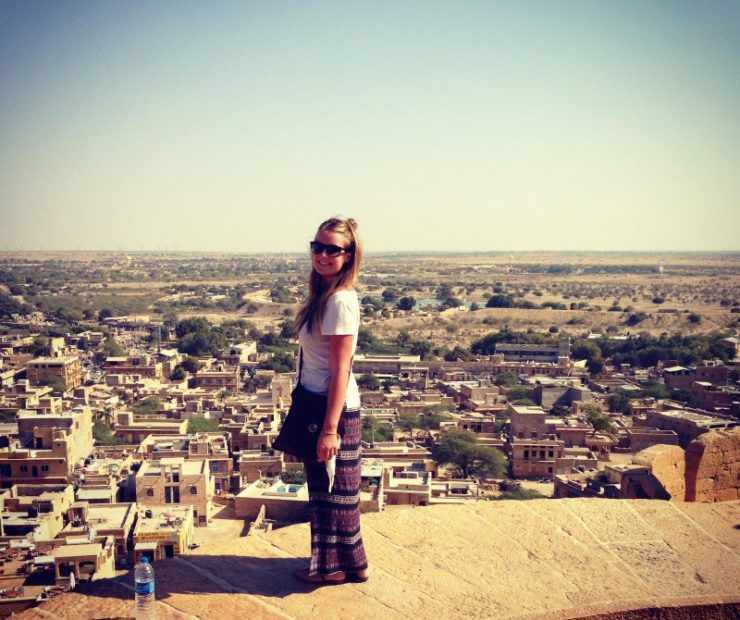
Getting India wrong

About Mariellen Ward
Professional travel writer Mariellen Ward is the founder of award-winning Breathedreamgo. Mariellen has a BA in Journalism and has been travel writing and blogging since 2005. She has won many awards, including a National Tourism Award from Incredible India Tourism, and writes for some of the world’s leading publications including BBC Travel and NatGeo Traveller India.
Sign up for my newsletter and get inspiration to live your travel dreams
Privacy Overview

How India Broke Me (And Why I’m Thankful For It)
This post contains affiliate links to trusted partners. If you purchase through these links, I earn a commission at no extra cost to you. Thank you!
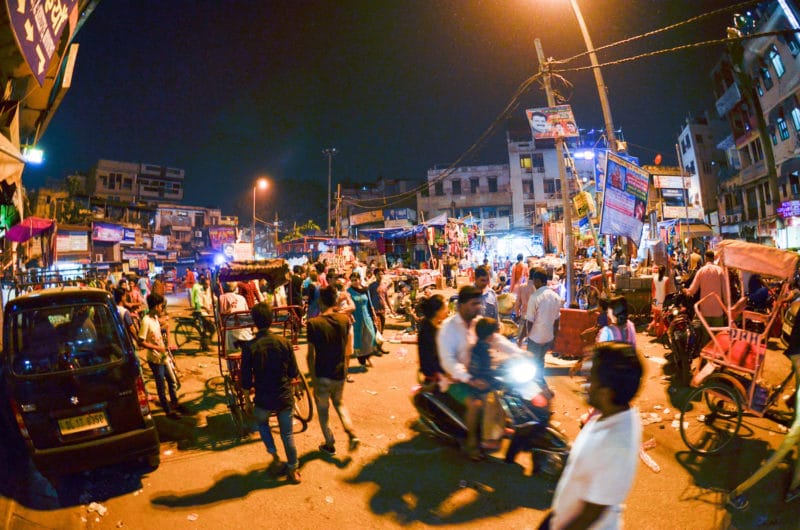
This post is based on a tour I took with my friend and fellow blogger, Wandering Earl, who runs an awesome trip to India via his company Wandering Earl Tours . The itinerary was Delhi -> Varanasi -> Agra -> Jaipur -> Bundi -> Udaipur -> Goa.
As I wander through crowded streets, people shoving each other as rickshaws whiz by and cows do their business in my path, I can’t help but think of all the people who come to India searching for inner peace.
I’m having enough trouble finding outer peace; incessantly honking horns and aggressive touts providing a headache-inducing soundtrack.
The pollution is so thick in Delhi I cough black, while some of the country’s most sacred sites — like the Ganges River (Mother Ganga) — have been thoroughly abused (oddly enough through festivals and the Hindu belief that the Ganga is self cleaning).
Beggars are relentless, and your heart will break seeing small children being trained to beg and do tricks for the local mafias, while getting slapped across the face for not performing up to par.

Table of Contents
Questioning My Travels
India made me thoroughly question why I travel . Not in an “ugh why am I doing this?!” way — though I’ll admit there was that at times — but in a truly retrospective way.
What drives me to journey from home time and time again, leaving behind my family, boyfriend and friends for the unknown?
What was it that pulled me to a place like India, and am I truly staying modest?
It also made me question the way I travel and the perceptions I felt about where I was.
Was I wrong to feel lucky to live in America where toilet paper and clean drinking water are readily available?
Moreover, as a photographer, it can be hard to put down the camera, and I hoped that people realized that my intentions were purely to capture daily life as it was — the good and the bad — without any “poverty porn” aspirations.
I think back to some of my travel highlights over the years: surfing in Australia, agri-touring through Tuscany, skinny dipping off idyllic beaches with my boyfriend in France, sandboarding ancient dunes in Namibia .
These trips, despite having their own challenges, were relatively easy to enjoy. The beauty of each place was immediately apparent and finding fun, local experiences was simple.
You could wear your favorite sandals without worrying about stepping in fresh cow crap. Instead, my biggest worry was what wine to pair with dinner (vs whether two bites would leave me clinging to the toilet for a week).
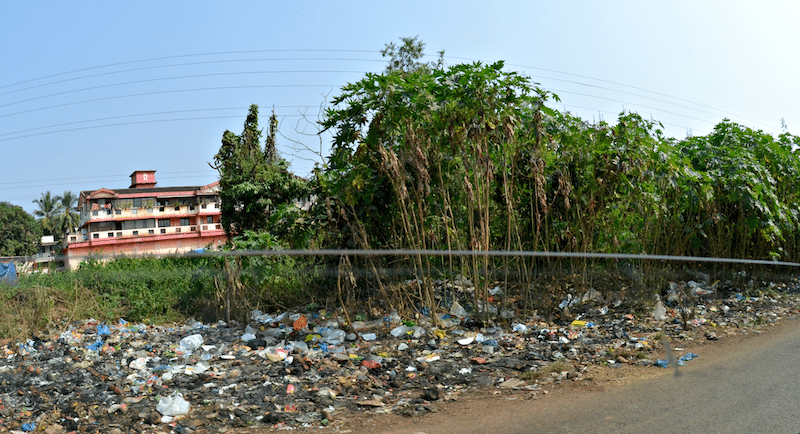
Traveling Through India: The Why
I soon realized the reason I went traveling through India was really no different from the reason I travel to most places: to experience something different, to open my mind, to see reality in the flesh, and to grow as a person.
And India is certainly a place to do this. You will see, hear, feel, taste and smell things you’ve never sensed in your life, both perplexing and pleasing — construction workers using power tools without goggles or shoes on, healthy cardamom-laced chai teas, busy streets with no traffic rules, the silky smoothness of pure silk scarves, the powerful sounds of the sitar and tabla drums harmonizing in ways that your body can’t help but react to.
Hey, isn’t the reason we travel to open our minds and immerse ourselves in new things?
To do this, it’s sometimes necessary to challenge ourselves: to force ourselves to experience the pains and joys of culture shock.
While I enjoyed having a comfortable and clean hotel to retreat to in India, I also found it rewarding to leave comfort behind and soak up the chaos and culture (Advil in my purse, of course).
But, sometimes, it was hard to truly open up to India.

Challenges In India
I’m going to be frank; while I only spent a short time in Delhi, I did not find it very enjoyable.
First of all, it’s often touted as the world’s most polluted city , with streets so covered in trash and cow dung I couldn’t see the ground.
Also, the air is so polluted I actually coughed black. Cue the fever and sinus infection.
With illness running through my body, I found delight in certain experiences — wandering the intricate and enormous Akshardham Temple Complex and savoring stuffed parathas at the historic Pt. Gaya Prasad Shivcharan from 1872 ; but in a place where simply crossing the road to buy a water bottle becomes a live game of Frogger (hint: you’re the frog!), it was hard to muster up the courage to leave my hotel room.
Luckily, there are many great places for a solo trip from Delhi when you’re ready to travel on!
Stuffed parathas at the historic Pt. Gaya Prasad Shivcharan from 1872
Varanasi delivered what many in my group described as “what I pictured India to be like.” It’s one of the world’s oldest continuously inhabited cities and India’s holiest city.
Varanasi is a must-visit to experience local traditions. Hindu pilgrims venture from all over India to wash away their sins in the Ganges River.
It’s also where Hindus go to burn their dead — a practice you can witness in the open — and sprinkle the ashes into the Ganga to send them to heaven and help them avoid being reborn on earth.
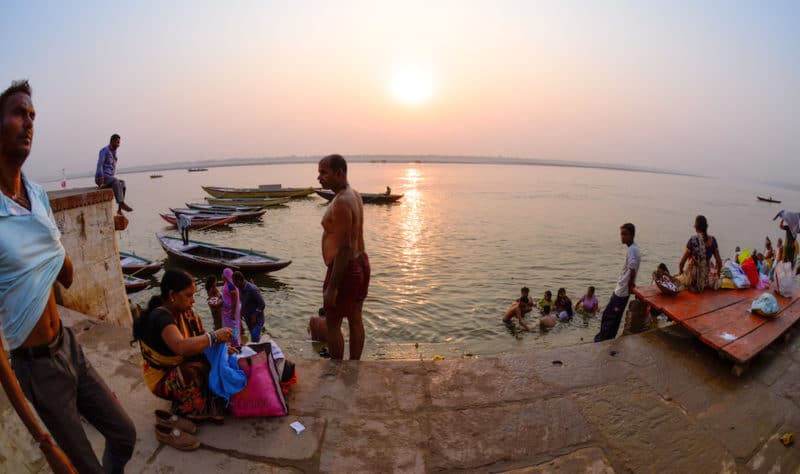
Though not quite as crazy and cough-inducing as Delhi, Varanasi isn’t without its challenges.
One main problem: the Ganges River has been so abused it’s now almost 3,000 times more than the limit the World Health Organization deems safe.
People throw their trash and feces in the Ganges, while factories along the waterfront dump in their effluent. Those who can’t afford to cremate their dead loved ones often dispose of their bodies in the river.
Walking along the waterfront with its many ghats (steps leading down to water) gave me an eerie feeling of true beauty in decay. Like many historic structures in India, the once-grand palaces and temples have been left to rot, their bright colors and ornate details showing faintly through cracks and dust.
Varanasi, like Delhi, is also a place where poverty is rampant.
Clothes just washed in the Ganges hung on drying lines. As saris and dhotis billowed in the breeze, I saw the faces of unbathed children begging for money (note: here’s why it’s unethical to give ).

While walking through the city’s pandemoniac main street I was hassled every three steps.
Drivers urged me into their rickshaws “for a good price” even when I was only walking five minutes, while shop owners followed me for longer than I was comfortable with to try to persuade me into perusing their wares.
Luckily, I found places where I could explore local culture without feeling like a walking dollar sign, such as Jolly Music House, which I visited after maybe sipping a bhang lassi , a legal cannabis-laced yogurt drink.
Cannabis is touted as a sacred plant in ancient Hindu texts, so trying this is actually a very local experience. Honestly, this experience easily turned into one of my craziest India travel stories from the whole trip.
The music emitted from the bells jingling on the Kathak dancer’s ankles as she moved to to the sounds of the harmonium were almost visible in my possibly entranced state.

Agra, aside for the Taj Mahal , one of the world’s most famous landmarks , brought me back to a disheartened state.
With all the money this grand marble structure brings in, it was heartbreaking to see the poverty and pollution surrounding it.
You’d think that some of the site’s earnings would go to the community, or that there wouldn’t be trash flooding the streets; but alas, that’s not the case.
As I snuggled up into the stained sheets of my crusty hotel room, I yearned to escape my discomfort. For a coffee shop that felt warm, for a bed with clean blankets. I wasn’t expecting to find Brooklyn in India, but I wanted something, anything, that made sense.
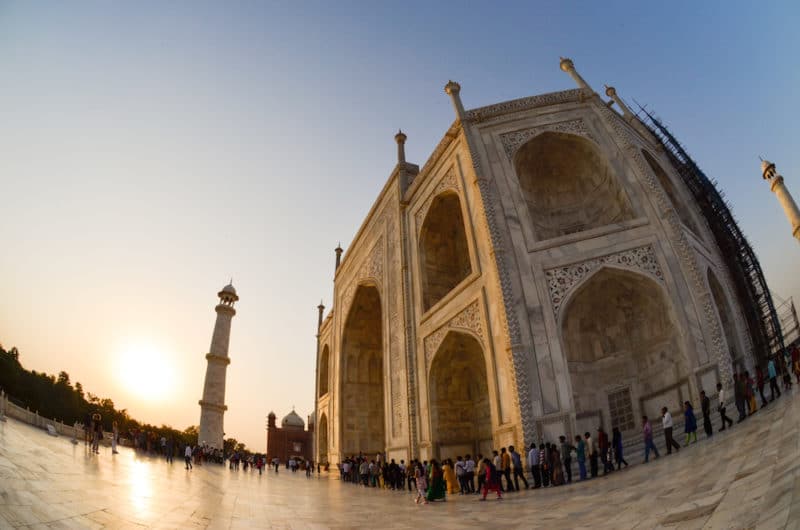
Finally Able To Breathe
And finally, I reached Bundi, located in the state of Rajasthan (where you can have the ultimate Rajasthan itinerary ).
Most visitors to India stick to the Golden Triangle — Delhi, Agra and Jaipur — never making it to this former royal town once thought to be the capital of the great Hadoti Kingdom .
Today, it sits surprisingly undiscovered by tourists.
There are still cows in the street and honking rickshaws in Bundi, but the laid-back vibe and friendly locals made me feel welcome. If you’re traveling alone, this is a great spot for a solo India trip , too.
Yes, I realize “friendly locals” is a generalization; but going from Delhi, Varanasi, and Agra where I felt a lot of aggression to Bundi where people almost always smiled at me and stopped to chat was a drastic change that allowed me to come out of hiding for more than just an hour or two.
For the first time during my 3-week trip, I really wanted to leave my hotel room.
Here when sellers invite you into their shops, they do so cordially instead of insistingly, engaging you in real conversation. I was even invited into a local homestay to get all-natural henna (which I gladly do!).
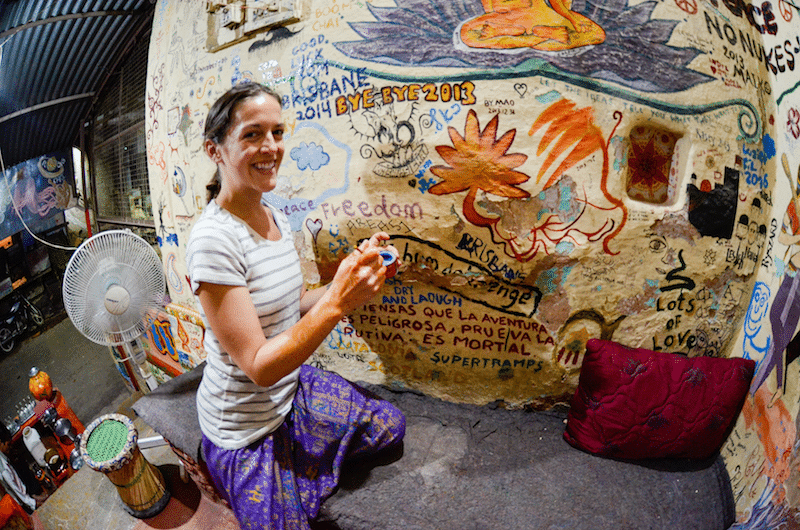
While in other cities my iced coffee order would dispense anything from a chocolate milkshake to a pot of hot water, in Bundi I found the best caffeine creation of my life at Krishna’s Chai .
His chai — which cost only 30 Rupees (~$0.45 USD) — was better than any $5 java or tea creation I’ve had in NYC.
It can be sipped in an inspiring mural adorned space. With each sip, all the soot and pollutants that had built up inside me melted away. I returned to this place so often that Krishna invited me to leave a little bit of myself on his art wall in blue paint.
Bundi also provided outdoor adventure mixed with history.
I hiked up the 14th century Taragarh Fort to take in a mixture of lake, hillside and town views. I sat at the top of Shiva Temple, a pensive monkey beside me, absorbing the breath-taking view. India can be really beautiful sometimes.
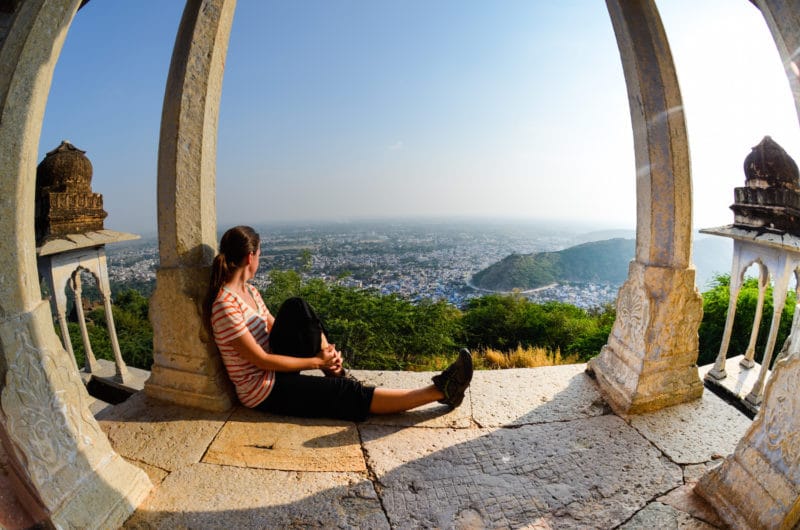
In India’s quintessential romantic city , Udaipur, the beauty continues, though a bit more gowned in chaos than smaller Bundi.
Still in friendly Rajasthan, I couldn’t help but wonder if the local’s less aggressive nature was because it’s less visited by foreigners than the Golden Triangle.
It’s also almost void of trash on the streets, which showcase scenes of turreted palaces, waterfront mansions and manmade lakes with footbridges to explore both sides.
Along with enchanting beauty, it’s here when I’m reminded of the importance of not forgetting populations, especially those with no voice.
My eye-opening experience came 15 minutes outside of Udaipur’s main city at Animal Aid , who take in hurt street animals.
They’re currently nursing about 500 dogs, cows, donkeys, pigs, turtles, and birds back to health, with a goal to eventually drop them off where they were picked up.
This being said, many animals have non-treatable injuries, like blindness or paralyzation, which means they remain onsite in the sanctuary.

It’s amazing to think that many of these animals with curable ailments, like maggot-infested wounds and infections, would otherwise be left for dead. I spent my morning giving a little extra affection to these beautiful creatures, though long-term volunteers can assist by playing with, feeding, and bathing the animals, as well as assisting the medical team.
My whirlwind trip ends in Goa in southwest India, where I was finally able to check in with myself mentally and physically.
Here I spent my mornings at Shiva Yoga Centre, working on my breathing and reflecting on my trip. India managed to rip me open and leave me vulnerable and scrambling, forcing me to find my place in the unknown.
It wasn’t the type of trip where I easily enjoyed mountain vistas and fine wine; it was a trip where I wept, puked, was bedridden, was constantly shoved, felt misunderstood, felt uncomfortable, felt claustrophobic, and, ultimately, was strengthened.
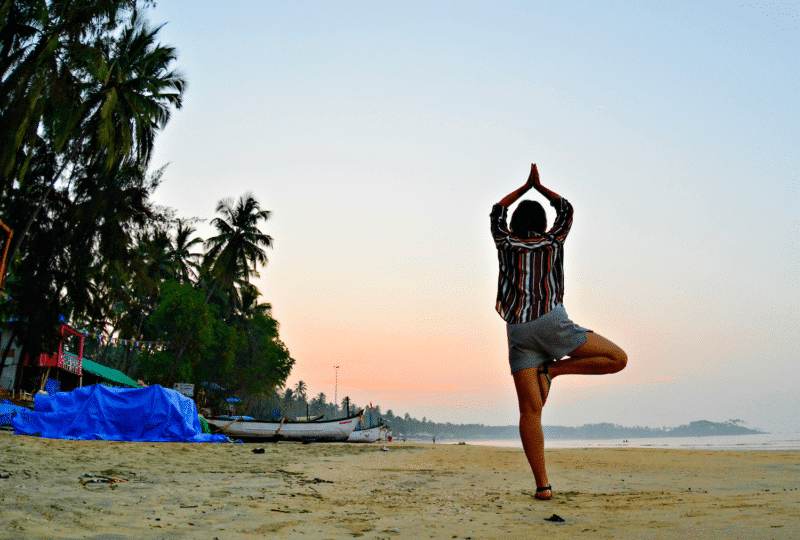
I was glad for the second half of my trip, where I was able to breathe and find some inner peace. But I was also thankful for the more jarring first half.
Marcel Proust said, “The real voyage of discovery consists not in seeking new landscapes, but in having new eyes.”
If my travels only consisted of beach vacations and wine region jaunts, I would be traveling with my eyes shut.
I fully admit that I, a well-seasoned traveler, was broken down by India.
I was pushed to my limits, but difficult encounters forced me to open my eyes to some of the world’s hard truths. While life can be a beach, it certainly isn’t always.
And when you visit a place that forces you to be immersed in it, all its beauty and chaos together, you need to be thankful for the eye-opening experience.
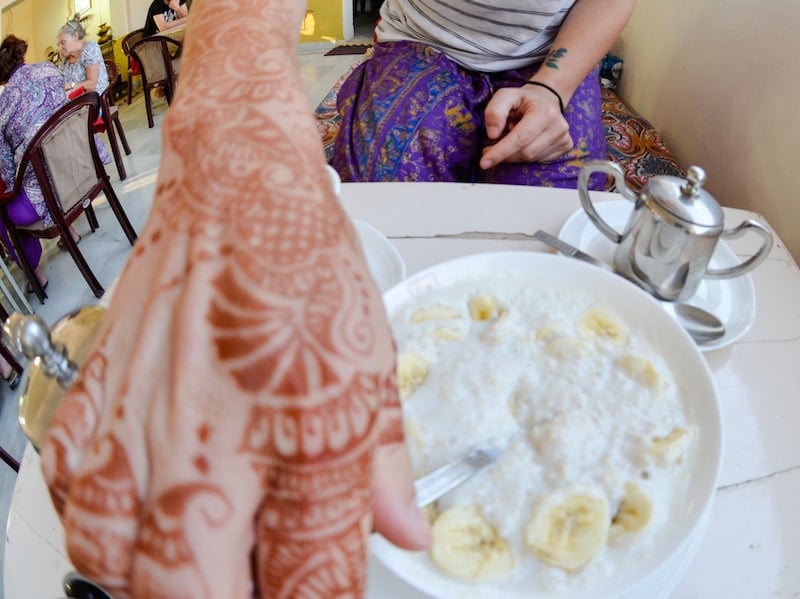
Best Places To Stay In India
Looking for India accommodation?
Click here for a list of India hotels!
Prefer self-contained stays?
Click here to check out unique local Airbnbs!
You can also use this map to search for local stays and experiences:
India Travel Video
Thanks for sharing your wonderful experience.
Hi, I’ve recently returned from 2 years living and working in India (Bangalore), I also visited Rajasthan amongst other places, my mostly completed blog is at. Cawthrablog.wordpress.com although it was mostly intended as a diary to keep family and friends updated on what I was up to… I agree 100% with all your comments, I had additional fun dealing with mobile phone culture, a bank account, a landlord, strikes, Indian TV, auto rickshaw drivers, driving in India, convincing people I wasn’t a tourist but worked, lived there and paid my taxes to the Government of India!
Thanks Jessie for your travel story. I’ve just come back from India and your feelings about your trip describe those I had all the time, The high contrasts, the amazing colors of the sarees, the chaos and the spiritual things , all is real and surrealistic too. I could also participate of an indian wedding in Jaipur and it was an amazing experience. I hope to go on reading your stories of other shocking places!
Your blog looks great, Jessie. It seems you have had quite an up and down experience in North India(except Goa). I would strongly recommend you to visit South India. Give South India a chance to serve its nature and prosperous culture. Always welcomed.
Reading about your own country through a traveler’s eyes is always a fascinating experience. I have to admit, reading through your blog was an emotional roller-coaster. Looking forward to your blogs and wish you all the best for your future trips. Hoping you would come back to India at least once and explore the natural beauty(North-East India-the seven sisters, South India-especially Kerala) and have a different flavored experience. Cheers.
Wonderful loved reading your experience in India. Looking forward for more post about your trips to India.
First and foremost, you have been quite candid about your experience about India. More or less a secular tourist carries almost similar impressions, an exotic cultural shock. But one thing that you brought to the fore is the exquisite charm of Bundi, a sleepy town, less touristy but showcases a lot of bygone era in friendly environment. Bundi, Narlai, Osian, Khimsar and Samode should be part of any Rajasthan tour itinerary.
Leave a Comment Cancel Reply
Learning Materials
- Business Studies
- Combined Science
- Computer Science
- Engineering
- English Literature
- Environmental Science
- Human Geography
- Macroeconomics
- Microeconomics
- A Passage to India
A Passage to India (1924) was the last completed novel by influential English novelist E.M. Forster . It is set during the British Raj in India and explores the complex relations between Indians and English at this time.

Create learning materials about A Passage to India with our free learning app!
- Instand access to millions of learning materials
- Flashcards, notes, mock-exams and more
- Everything you need to ace your exams
Millions of flashcards designed to help you ace your studies
- Cell Biology
When was A Passage to India published?
What are two key themes in A Passage to India ?
What are two important symbols in A Passage to India ?
What genre does A Passage to India fit under?
Why does Forster come to the conclusion that Fielding and Aziz cannot be friends yet?
Which character can be said to represent the prejudiced English attitude towards Indians?
What aspect of the Marabar Caves unsettles people and forces them to address their issues?
Who are the only English characters to believe in Aziz's innocence during the trial?
What does Mrs. Moore do in the mosque that causes Aziz to respect her?
In terms of Aziz and Mrs. Moore's interactions, what does the mosque symbolise?
Why does Mrs. Moore stay back on the expedition to the Marabar Caves?
- American Drama
- American Literary Movements
- American Literature
- American Poetry
- American Regionalism Literature
- American Short Fiction
- Literary Criticism and Theory
- Literary Devices
- Literary Elements
- Literary Movements
- Literary Studies
- Non-Fiction Authors
- A Christmas Carol
- A Farewell to Arms
- A Room with a View
- A Thousand Splendid Suns
- Aldous Huxley
- Alice Munro
- Alice Walker
- Andrea Levy
- Angela Carter
- Animal Farm
- Annie Proulx
- Arthur Conan Doyle
- Arundhati Roy
- Bleak House
- Bram Stoker
- Brave New World
- Brick Lane Book
- Brighton Rock
- Bring Up the Bodies
- Charles Dickens
- Charlotte Brontë
- Chimamanda Ngozi Adichie
- Chinua Achebe
- D.H Lawrence
- Daphne Du Maurier
- E.M. Forster
- East of Eden
- Elizabeth Gaskell
- Emily Brontë
- Ender's Game
- Enduring Love
- Ernest Hemingway
- F Scott Fitzgerald
- Far from the Madding Crowd
- Fingersmith
- For Whom the Bell Tolls
- Frankenstein
- Gabriel Marquez
- George Eliot
- George Orwell
- Graham Greene
- Graham Swift
- HG Wells War of The Worlds
- Half of a Yellow Sun
- Henry James
- Hilary Mantel
- In A Glass Darkly
- Iris Murdoch
- Iris Murdoch The Sea The Sea
- J M Coetzee
- Jamaica Inn
- Jamaica Kincaid
- James Joyce
- Jane Austen
- John Steinbeck
- Jonathan Coe
- Jorge Luis Borges
- Joseph Conrad
- Kate Chopin
- Kathryn Stockett
- Kazuo Ishiguro
- Khaled Hosseini
- Life and Times of Michael K
- Lord of the Flies
- Margaret Atwood
- Mary Shelley
- Middlemarch
- NW Zadie Smith
- Never Let Me Go
- Never Let Me Go background
- Nights at the Circus
- North and South
- One Flew Over the Cuckoos Nest
- Oranges Are Not The Only Fruit
- Oryx and Crake
- Oscar Wilde
- Persuasion Jane Austen
- Possession AS Byatt
- Pride and Prejudice
- Pride and Prejudice Chapter 1
- Purple Hibiscus
- Regeneration Pat Barker
- Revolutionary Road
- Richard Yates
- Robert Louis Stevenson
- Salvage the Bones
- Sarah Waters
- Sebastian Faulks
- Sense and Sensibility
- Sheridan Le Fanu
- Small Island
- Tender is the Night
- Tess of the D Urbervilles
- The Absolute True Story of a Part-Time Indian
- The Awakening
- The Bell Iris Murdoch
- The Bell Jar
- The Blind Assassin
- The Bloody Chamber
- The Brief Wondrous Life of Oscar Wao
- The Color Purple
- The Go-Between
- The God of Small Things
- The Grapes of Wrath
- The Great Gatsby
- The Handmaid's Tale
- The Hate U Give
- The Heart of Darkness
- The Help Kathryn Stockett
- The Little Stranger
- The Mill on the Floss
- The Mirror and the Light
- The Namesake
- The Picture of Dorian Gray
- The Remains of the Day
- The Rotters Club
- The Secret Agent
- The Shipping News
- The Sign of the Four
- The Strange Case of Dr Jekyll and Mr Hyde
- The Turn of the Screw
- The Woman in White
- Things Fall Apart
- Toni Morrison
- Victor Hugo
- Waiting for the Barbarians
- What Maisie Knew
- When the Emperor Was Divine
- White Teeth Zadie Smith
- Wilkie Collins
- William Golding
- Wives and Daughters
- Women in Love
- Wuthering Heights
- Zadie Smith
- Zadie Smith On Beauty
The British Raj refers to the period of British occupation in India. It lasted from 1858 to 1947. During this time, India was under the British Crown and Britain dictated their system of governance.
Many British people travelled to India to work in some form of government position throughout this period. E.M. Forster travelled to India in the early 1920s to work as a private secretary to a government official.
Below is a summary of A Passage to India and an analysis of its genre and key themes. You will also find an explanation of the novel 's symbols and a brief biography of E.M. Forster.
A Passage to India : summary
A Passage to India begins in Chandrapore, a city in India. Two Englishwomen are visiting: Adela Quested and Mrs. Moore. They are there to see Ronny Heaslop, a magistrate in Chandrapore. Ronny is Adela's fiancé and Mrs. Moore's son. The two women dream of experiencing the real India during their journey.
Forster also introduces readers to Aziz, a Muslim Indian doctor. He is having dinner with his friends and complaining about the treatment Indians receive from the English community in India. The men speculate over whether an Englishman and Indian can ever be friends. Later that evening, Aziz encounters Mrs. Moore in a mosque. The two speak, and Mrs. Moore treats Aziz kindly. He is taken aback that an Englishwoman could be so kind to him.
The English community in Chandrapore host a party to help Adela and Mrs. Moore become more acquainted with the area and its people. The event is quite awkward, with the Indians and English rarely mixing. Adela does meet Cyril Fielding at the party. He is the English principal of a local college and is very much in favour of mixing with the Indian population of Chandrapore. Fielding organises a dinner to which he invites Adela, Mrs. Moore, and Aziz. A Hindu professor named Godbole is also in attendance.
Fielding's dinner goes much more smoothly than the previous party. Aziz and Fielding get along very well and quickly form a close bond. The dinner is soured by the arrival of Ronny, who acts arrogantly . This behaviour almost pushes Adela to break off her engagement with him.
Aziz organises an expedition to the Marabar Caves. Adela, Mrs. Moore, Fielding, and Godbole are all invited. Fielding and Godbole miss their train and are late as a result. Aziz, Adela, and Mrs. Moore begin to explore the caves by themselves. The caves unsettle Mrs. Moore, and she becomes unwell. She decides to remain where she is as the others continue to explore. Adela and Aziz have a moment of privacy in which Adela asks Aziz if he has multiple wives. This is because she is reconsidering her relationship with Ronny. Aziz takes great offence to this and sees it as representative of her prejudices about India. He is a widower.
Aziz then leaves in anger. He eventually returns to find Adela gone. At the bottom of the caves, he finds Fielding, who informs him that Adela left abruptly. Not long after, Aziz is arrested on a charge of rape that Adela has made against him. This turns the entire English community in Chandrapore against Aziz. Only Fielding and Mrs. Moore believe in his innocence. Before Aziz's trial, Ronny pushes Mrs. Moore to return to England. She does so but passes away during the journey.
The trial commences. During it, Adela is questioned under oath about what transpired between her and Aziz in the caves. She goes back on her accusation and declares Aziz innocent. The case falls apart and Aziz is free.
Following the trial, Adela stays with Fielding at the local college, as the English community has shunned her. Fielding warms to her because she was brave enough to declare Aziz innocent. Ronny then breaks off his engagement with Adela. Both Adela and Fielding return to England separately. Aziz is upset that Fielding, a man he considered a close friend, has become so close to the woman who almost falsely imprisoned him. He declares that he will no longer interact with the English.
The final section of A Passage to India takes place two years later. Aziz is now a chief doctor in a Hindu region far from Chandrapore. One day, he discovers that Fielding and his brother-in-law, Ralph Moore, are in the area. Aziz is deeply upset by Fielding's presence as he believes Fielding to have married Adela. He later discovers that Fielding really married Stella Moore, Mrs. Moore's daughter from her second marriage.
At the end of Forster's novel, Aziz and Fielding reconcile. They take a ride on a rowboat together before Fielding returns to England. The two men conclude that they can be friends, but not yet. It will only be fully possible once India and England's colonial relationship significantly alters.
A Passage to India : genre
When analysing a novel, it is important to consider what genres it fits under. A Passage to India falls under the genre of modernism .
Modernism as a genre began in the early twentieth century. It is characterised by its effort to break with traditional literary forms. Modernist texts are often experimental and focus on the individual. They also frequently explore the chaotic nature of life. Some famous examples of modernist texts include Virginia Woolf's Mrs. Dalloway (1925) and Ulysses (1920) by James Joyce .
A Passage to India contains complex and intertwining plots with many characters. This is a common feature in modernist texts. Forster's novel also includes many passages with a stream of consciousness narrative.
A stream of consciousness narrative is when a story follows a character's inner thoughts. They attempt to realistically portray the way people's thoughts naturally jump from one topic to another. This is another modernist technique.
When Adela and Aziz are in the caves, Adela hears an echo that confuses and distresses her. The echo is the same one that caused Mrs. Moore to feel unwell and stay behind on the group's exploration of the caves. Forster remains vague about the echo and what caused it. This ambiguity encourages readers to decide their own meaning. We can also see this as a modernist element of A Passage to India .
A Passage to India : themes
Now let's look at some key themes in A Passage to India .
A Passage to India : prejudice
Forster's novel deals extensively with prejudice. The English community in India hold many biases about India and its people, and A Passage to India shows the complicated dynamic between the two groups. The English are in Chandrapore because their country is occupying India. They oversee a country that is not their own. Many of the English characters see Indians as inferior .
Ronny Heaslop represents the English attitude towards the Indians. He is arrogant and snobby. Ronny also judges the Indians, referring to them as the 'natives'. This language carries a derogatory tone .
Even the more liberal English characters in A Passage to India are not lacking in prejudice. Adela wishes to understand the real India and is open to friendships with Indians. However, an uncomfortable situation pushes her to accuse an innocent Aziz of assault. She falls back into old stereotypes when she feels threatened. A man of colour being a threat to an English woman was a prevalent stereotype at Forster's time of writing.
The tone of A Passage to India makes it clear that Forster is criticising English prejudice against Indians and the way in which Britain runs institutions in India. Forster does not portray characters like Ronny in a positive light, whereas the victims of prejudice, like Aziz, are shown very sympathetically .
A Passage to India : friendship
Despite the differences between the two communities, friendships form between English and Indian characters in A Passage to India . One of the most significant friendships in the text is between Aziz and Fielding.
The two men become quick friends once they meet. Fielding is much more liberal and open-minded than many of his countrymen. Aziz and his friends regard many in the English community in Chandrapore as ignorant, foolish, and uneducated about India. Forster shows this to be true for many English characters in his novel, but Aziz's friendship with Fielding convinces him to be less wary of the English. Fielding is one of the few people that believes wholeheartedly in Aziz's innocence during the trial against him.
However, things change after the trial. Both men spend more time around their own communities again. Aziz turns against Fielding when he begins to become closer to Adela. This breaks the two friends apart. Aziz's disgruntlement lasts for two years until Fielding returns to India and clarifies that he did not marry Adela.
Aziz and Fielding do reconcile, but Forster points out to readers that the dynamic between their two races will always prevent them from achieving a full friendship. It appears that a changed India is the only way that similar people from the two respective countries will ever be able to truly maintain a friendship.
A Passage to India : symbolism
We will now look at some symbols that are present in A Passage to India .
A Passage to India : the mosque
The mosque is an important symbol in A Passage to India . This is where Mrs. Moore and Aziz first meet in the early section of the novel. Their meeting is the first positive interaction between an English character and an Indian character in the text. Aziz is surprised that Mrs. Moore knows to take her shoes off before entering the mosque. He is also pleasantly surprised that an English woman is treating him in such a kindly manner. This is not Aziz's typical experience with the English community in Chandrapore.
[Aziz] was partly excited by his wrongs, but much more by the knowledge that someone sympathised with them…[Mrs. Moore] had proved her sympathy by criticising her fellow countrywoman to him. (Chp. 1)
The mosque symbolises friendship and understanding . It is a place in which two people from two very different backgrounds are capable of getting along and respecting each other. The mosque also symbolises peace and serenity . Forster shows it as a place that Aziz goes to find quiet and calm in his busy life.
A Passage to India : Marabar Caves
The Marabar Caves play a key role in A Passage to India . Aziz invites the other central characters in the text to visit them. Through his use of language, Forster emphasises the vast and unsettling nature of the caves. They are difficult to comprehend and neither group of people in the text has control over them, Indian or English. The echo that the Marabar Caves contain impacts many of the novel's characters.
The echo in a Marabar cave is...entirely devoid of distinction. Whatever is said, the same monotonous noise replies, and quivers up and down the walls until it is absorbed into the roof. "Boum" is the sound as far as the human alphabet can express it, or "bou-oum," or "ou-boum" – utterly dull. Hope, politeness, the blowing of a nose, the squeal of a boot, all produce "boum." (Chp. 14)
The caves symbolise a significant moment of change in A Passage to India . They are so overwhelming that, while in the caves, characters are forced to contend with issues they may have been repressing. Mrs. Moore has no choice but to deal with her doubts about her religious faith, which deeply affects her mental state. Adela also comes to terms with the fact that she is no longer attracted to Ronny. Her realisation pushes her to ask Aziz if he has multiple wives, which upsets him deeply. A series of events are then set in motion that push the English and Indian communities in Chandrapore even further apart.
A Passage to India : Forster
E.M. Forster was born on 1st January 1879 in London . His father passed away from tuberculosis when Forster was very young. Forster and his mother were left a great deal of money and so Forster had a privileged childhood. He attended Cambridge University, studying history, literature, and philosophy. This is where Forster found a passion for writing.
Forster travelled around Europe often as a young man. He spent time in Italy, Austria, and Germany. These travels would prove to be a significant inspiration in Forster's work. He published his first novel, Where Angels Fear to Tread , in 1905. This was a successful novel with critics.
As Forster continued to publish, he gained popularity and became a well-known writer. Some of his other works include A Room with a View (1908), Howard's End (1910), and A Passage to India (1924). Forster received some criticism from contemporary critics as he tended to question accepted social norms.
As the twentieth century progressed, E.M. Forster began to take on broadcasting jobs. He came known as a public figure and a liberal intellectual. Forster moved back to Cambridge under an honorary fellowship in his old age, remaining there until his death in 1970 at the age of 91. Today, Forster is regarded as a key early twentieth-century writer who captured the world he lived in and often challenged it too.
A Passage to India - Key takeaways
- A Passage to India is a 1924 novel by English writer E.M. Forster.
- The novel follows the often difficult relations between the English and Indian communities in an Indian town in the later days of the British Raj.
- A Passage to India fits under the genre of modernism.
- Two key themes in the novel are prejudice and friendship.
- Two important symbols in Forster's novel are the mosque and the Marabar Caves.
Flashcards in A Passage to India 15
Prejudice and friendship.
The Marabar Caves and the mosque.
Because India is still under British rule.
Ronny Heaslop.

Learn with 15 A Passage to India flashcards in the free Vaia app
We have 14,000 flashcards about Dynamic Landscapes.
Already have an account? Log in
Frequently Asked Questions about A Passage to India
What is the main theme of A Passage to India ?
Prejudice is a key theme in this novel.
What is the message of A Passage to India ?
The message of A Passage to India is that true friendship between Indians and English is impossible while Britain still occupies India.
What is the meaning of the ending of A Passage to India ?
The ending of this novel insinuates that Aziz and Fielding may be good friends one day but not yet, not until India is free from British rule.
Who is the author of A Passage to India ?
E.M. Forster.
What is A Passage to India about?
It is about the difficulty of relations between the English and Indian communities in India during the British Raj.
Discover learning materials with the free Vaia app

Vaia is a globally recognized educational technology company, offering a holistic learning platform designed for students of all ages and educational levels. Our platform provides learning support for a wide range of subjects, including STEM, Social Sciences, and Languages and also helps students to successfully master various tests and exams worldwide, such as GCSE, A Level, SAT, ACT, Abitur, and more. We offer an extensive library of learning materials, including interactive flashcards, comprehensive textbook solutions, and detailed explanations. The cutting-edge technology and tools we provide help students create their own learning materials. StudySmarter’s content is not only expert-verified but also regularly updated to ensure accuracy and relevance.

Vaia Editorial Team
Team English Literature Teachers
- 13 minutes reading time
- Checked by Vaia Editorial Team
Study anywhere. Anytime.Across all devices.
Create a free account to save this explanation..
Save explanations to your personalised space and access them anytime, anywhere!
By signing up, you agree to the Terms and Conditions and the Privacy Policy of Vaia.
Sign up to highlight and take notes. It’s 100% free.
Join over 22 million students in learning with our Vaia App
The first learning app that truly has everything you need to ace your exams in one place
- Flashcards & Quizzes
- AI Study Assistant
- Study Planner
- Smart Note-Taking

Privacy Overview
Get unlimited access with a free vaia account..
- Instant access to millions of learning materials.
- Flashcards, notes, mock-exams, AI tools and more.
- Everything you need to ace your exams.

The 9 most spectacular road trips in India

Dec 12, 2023 • 12 min read

From self-drive motorbike adventures to tips on hiring a car and driver, here are the best road trips in India © Solovyova / Getty Images
In India, every journey is an experience, whether you rumble across the subcontinent on a classic Enfield motorcycle or rattle through the hills in a chartered 4WD.
The simple act of traveling from A to B will immerse you in the sights , sounds and sensations of the world’s most colorful country. Plenty of people get around by bus and train, but taking a road trip will give you extra control over your itinerary, letting you choose where to stop and which route to follow.
The good news is that you don’t need to drive yourself – it’s easy to hire a car or 4WD with a driver almost everywhere in India , meaning you can concentrate on the scenery while your driver deals with the sometimes challenging road conditions.
If you prefer to take the driving seat, renting a motorcycle is a wonderful way to explore the subcontinent, particularly if you stick to the backroads. Self-drive car rental is harder to arrange, but some adventurous souls travel around India with their own vehicles – a few hardy travelers have even navigated India in a modified autorickshaw!
Grab your sense of adventure and get ready to hit the road with this guide to the best road trips in India.

1. India’s Golden Triangle
Best road trip for Mughal monuments Delhi–Delhi; 1120km (696 miles); allow five days
Short and sweet, the loop from Delhi to Agra and Jaipur packs a lot of wonders into a few days of driving. Your adventure begins in Delhi, where the ruins of eight cities tell the story of India’s great Islamic empires. Hit the city's highlights , including Red Fort, Humayun’s Tomb, the Jama Masjid and the bazaars of Chandni Chowk, which have changed only superficially since Mughal emperor Shah Jahan’s time.
With a chartered vehicle or rented motorcycle, it’s easy to swing by the sacred cities of Mathura and Vrindavan, where Krishna frolicked with milkmaids in the Hindu epics. After these peaceful stops, steel yourself for a mix of the stressful and sublime in Agra, where the glorious Taj Mahal more than lives up to its reputation.
Find more Mughal magnificence at nearby Fatehpur Sikri , the red sandstone city founded and later abandoned by emperor Akbar the Great. Once you follow the NH21 to Jaipur, you’ll share every fort, palace and mystical observatory with a crowd, so consider making the odd detour before you hit the Pink City’s palaces and bazaars.
Detour: Before zooming west from Fatehpur Sikri to Jaipur, consider a detour south to Gwalior , whose beautiful fort is less mobbed than other stops on this circuit. Before you complete the third side of the triangle, tack on one more detour to spot tigers stalking ruined battlements in Ranthambhore National Park before diving back into urban life.
2. Manali to Ladakh across the Himalaya
Best road trip for silence and serenity Manali–Srinagar; 800km (497 miles); allow ten days
Many people follow the mountain circuit from Manali to Ladakh and on to Kashmir in a chartered 4WD, but we strongly recommend traveling by rented Enfield Bullet motorcycle. This allows you the life-affirming thrill of pulling over by the roadside to find yourself alone in the silence of these high-altitude deserts in the rain shadow of the Himalayas.
From the hippie hill resort of Manali, it’s a two-day slog over the 3978m (13,051ft) Rohtang La to Leh , through a landscape plucked straight from the heyday of the Silk Road. There’s little vegetation and even less shade, and the cold and altitude will hit you like a sledgehammer. Recuperate with trips to Buddhist monasteries and yoga classes in Leh, then hit the road again for a different take on the Himalayas in Kashmir.
The highway west to Srinagar weaves between ancient villages, but as the hills turn from dust-yellow to lush green, the culture shifts from Buddhism to Islam before the minarets of Srinagar loom into view. The Kashmir valley is sometimes troubled, but when it’s calm, the experience of watching Dal Lake appearing slowly through the morning mist from the deck of a houseboat is simply sublime.
Planning tip: Whether you drive yourself or let someone else take the wheel, it's imperative to respect the mountain climate. Snow closes the high passes into Ladakh in winter, and road travel is usually only possible from June to late September or early October.

3. Rajasthan’s colored cities
Best road trip for desert colors Jaipur–Jaipur; 1630km (1012 miles); allow ten days
Desert driving in Rajasthan is an incredible experience. Mighty fortresses loom dramatically out of the landscape, and you’ll share the dusty highways with camel carts and old-timers, some with vividly colored turbans and handsome mustaches. Kick-off in Jaipur – the pink city – touring pink-sandstone palaces, bustling bazaars and the awe-inspiring fortress at Amber .
Follow NH48 to the Jain and Muslim pilgrimage center of Ajmer , and duck west to reach the famous Pushkar , with its temple-circled lake and legendary camel fair in October or November. Return to NH48 for the rumbling ride to Udaipur , the white city – draped like a silk scarf on the shores of tranquil Lake Pichola. Dose up on ice-white palaces, then deviate west to the temple-strewn hill station of Mt Abu .
Veering north to Jodhpur , you’ll immediately spot the lapis-colored buildings that earned the Blue City its name. Get another blast of military might at Mehrangarh Fort , then drive west through serious desert country to the sand-yellow city of Jaisalmer , whose fortified walls look almost carved from the desert itself. Close off the loop via Bikaner , where you’ll leave the tourist crowds behind before diving back into the thick of things in Jaipur.
Detour: Having your own transport opens up the opportunity to get off the tourist track in this heavily visited state. Consider tacking on a side-trip north from Jaipur to Shekhawati, famed for its mural-filled haveli mansions.
4. Hampi and the Hoysalas
Best road trip for temples Mysuru–Gokarna; 1060km (659 miles); allow ten days
For many travelers, visiting the time-tumbled ruins of the Vijayanagar kingdom at Hampi is the most memorable experience during a trip to India. Start off in Mysuru (formerly Mysore), with its mesmerizing markets, fiery vegetarian cuisine and famously extravagant palace . Rumble north on the backroads to fascinating Sravanabelagola with its naked 17m (56ft) statue of Gomateshvara , the first tirthankara (spiritual teacher) of the Jain religion.
The temples just keep on coming in Karnataka. Slingshot through Hassan to Belur and Halebid, where the temples of the Hoysala Empire represent perhaps the zenith of the Hindu temple-building art. A three-hour drive east will drop you in Karnataka’s capital, Bengaluru , known for its cosmopolitan dining, shopping and nightlife. Enjoy its comforts; it’s a long drive to reach Hosapete, the leaping-off point for the ruins at Hampi.
Once you roll into Hampi’s centuries-old bazaar, allow at least two days to explore toppled temples and time travel across centuries in a landscape of stacked granite boulders. For more timeless temple architecture, duck onto the backroads to reach Badami, where blood-colored cliffs are pock-marked with cave temples .
Detour: To mix things up, consider taking a side trip to Aihole, dotted with dusty ruins from the ancient Chalukya kingdom, then finish on the beach with some well-earned R&R in Gokarna – part pilgrim-town, part beach retreat.
5. Kolkata to Darjeeling
Best road trip for Himalayan views and side treks Kolkata–Yuksom; 808km (502 miles); allow eight days
The east of India is often overlooked by the crowds who surge north from Delhi, but the journey through West Bengal to the foothills of 8586m (28,169ft) Mt Khangchendzonga has an epic sense of mission. Start in crowded but cultured Kolkata , visiting ashrams, temples and striking civic buildings reclaimed from British rule. Fit in a tour of the tiger-stalked swamps of the Sunderbans before you head for the hills.
The journey north takes you past little-visited country towns to intriguing Shantiniketan , a university town with a long history of dance, theater and poetry. From here, you’ll break north to reach the emerald-green tea plantations and delightfully dated grand hotels of Darjeeling , where you’ll likely catch your first up-close views of the Himalayas.
To get intimate with the snow peaks, walk the Singalila Ridge trekking route or edge even closer to Mt Khangchendzonga by picking up a permit to enter lofty Sikkim . A route through Kalimpong , Gangtok and Pelling will reveal views that would make mountaineers itch for their ice axes. To cap it all off, you can get within touching distance of the snow on the trek to the Goecha La from Yuksom.
Planning tip: You’ll need a Restricted Areas Permit to enter Sikkim, but this is easily obtained in Kolkata, Siliguri or Darjeeling, or when crossing into Sikkim at Melli or Rangpo.

6. Mumbai to Goa
Best road trip for beaches Mumbai–Palolem; 650km (404 miles); allow one week
Short journeys don’t mean scrimping on excitement in India. From brash and brilliant Mumbai , pick up NH66 and head south, detouring down to the coast to explore fascinating forts such as Murud-Janjira , a legacy of centuries of coastal conquest. Pull into the low-key seaside resorts at Ganpatipule and Malvan before you hit the busy beaches of Goa .
As you roll into northern Goa, swing by the famous market in Anjuna and the fun-filled beach hubs at Baga and Calangute . Head onward to Panaji , Goa’s charming Portuguese-colonial capital, and the timeworn basilicas of Old Goa .
The mood changes as you roll south to laid-back Agonda , the center of Goa’s nascent surfing scene. It changes again as you head inland through green hills dotted with spice farms for a peek at thundering Dudhsagar Falls , India’s second-highest cascade. Finish up on the sand-sprinkled shore at lovely Palolem (making time for a bird-spotting hike at the nearby Cotigao Wildlife Sanctuary ).
7. A drive through the northeast
Best road trip for tribal encounters Guwahati–Guwahati; 1700km (1056 miles); allow two weeks
With a hired 4WD and a driver who can speak local languages, a fascinating journey through the varied cultures of the northeast states awaits. Start in Guwahati , the under-explored capital of Assam, and follow the mighty Brahmaputra River northeast to Kaziranga National Park for close encounters with one-horned Indian rhinos.
Next, aim your sights north towards Arunachal Pradesh and the awesome Buddhist monasteries of the Tawang Valley (local travel agencies can arrange a permit).
Add on a wander through the tribal communities of Ziro and Daporijo, and loop back through Upper Assam, continuing east to the fascinating Konyak Naga villages around Mon in northern Nagaland . Slip back to the plains via Kohima (ideally in December to catch the Hornbill Festival ), then climb up onto the high plateau of Meghalaya , where trees are woven into living bridges and markets sell bows and arrows as day-to-day essentials, before barrelling downhill from Shillong to Guwahati.
Planning tip: A Protected Area Permit is required to enter Arunachal Pradesh, and you may need to be in a group of two or more to visit some areas; contact travel agencies in Guwahati in advance to get the paperwork in place.

8. Around the tip of India
Best road trip in the south Kochi–Kochi; 807km (501 miles); allow 7 days
The bottom end of India feels like a different country. Start the journey through India’s steamy south in historic Kochi , whose ancient streets tell a timeless tale of seafaring, trade and Keralan spices. As you roam south to Alappuzha , park up for a day or two to explore the fascinating, waterlogged backwaters by boat.
As you pass through Amrithapuri, you can pause for a hug from a living guru before soaking up some rays on Kerala ’s loveliest beaches at Varkala . Next, whoosh through Thiruvananthapuram (pause just long enough for some incendiary Keralan curries) to the southern tip of India. From here, you’ll head inland, through drier, rockier Tamil Nadu, to reach Madurai , whose temple towers are encrusted with brightly colored deities and demons.
The trip back to Kochi will take you through the Palani Hills, a side spur of the Western Ghats, where the landscape surges upwards to Kodaikanal , perhaps the most charming of India’s southern hill stations. Grab a cuppa amidst swirling tea plantations in Munnar , South India’s top tea-growing center, before you return to the coast.
Planning tip: The monsoon obscures the views from the Western Ghats from June to September, but waterfalls run at full force, so this is still a rewarding time to come.
9. Chennai to Puducherry (Pondicherry)
Best road trip for cultural variety Chennai–Puducherry; 232km (144 miles); allow 3 to 4 days
For a short, sweet and spicy trip along India’s southeast coast, consider the three-day trip from Chennai south to Puducherry (Pondicherry) . Start in Chennai, with its vast beach, famous-name ashrams and delicious vegetarian cuisine , then track south along the coast, wedged between the sea and the salt lake.
Stop one is the surprising surf resort at Kovalam (Covelong), a worthy stop en route to Mamallapuram , where you can view a riot of carvings and temples created by the Pallava dynasty. Duck inland to see the ancient Pallava capital at Kanchipuram , then return to the coast to close out the trip at charming Puducherry, formerly Pondicherry.
A Gallic air pervades this seaside town – best experienced in heritage hotels in the old French Quarter. Just be warned: some spiritually-minded travelers pull into the famous ashram at Auroville just north of "Pondy" and never leave!

Top tips for hiring a car and driver in India
You’ll find drivers-for-hire offering their services at taxi and 4WD stands all over India, or you can make arrangements through hotels and travel agencies. Check that the driver speaks enough English to understand where you want to go and where you want to stop, and confirm that the driver is able to cross state lines – some vehicles are only licensed to operate in certain areas.
You’ll need to agree on a price for the trip before you start, and the cost should include fuel, accommodation and food for the driver for multi-day trips. Prices start at around US$40 per day, rising for 4WD vehicles. Be clear with your driver about what you want from your journey; if you want to avoid stops at tourist shops and commission-paying venues, make this clear from the outset.
Exploring India by motorcycle or bike is for experienced riders
India’s roads are not for fair-weather motorcyclists, but if you have a few miles under your belt and fancy a challenge, it’s a fabulous way to explore this enormous country. Veteran hire companies such as Lalli Singh Tours in Delhi have sent hundreds of travelers off on journeys across India, from the steamy southern jungles to the high passes of the Himalayas.
The best advice we can give is to ride slowly and defensively, always give way to larger vehicles, and carry a full repair kit and spares – and know how to use them! The nostalgic British-designed Enfield Bullet is the vehicle of choice for many travelers, but it’s a heavy brute; newer machines from the likes of Bajaj are lighter and easier to handle.
If you plan to pedal your way around India by bicycle, carry plenty of puncture repair kits and bring lights and high visibility gear. If you don’t want to transport your own bike into the country, consider flying into Delhi and buying a bike at the Jhandewalan Cycle Market.
This article was first published Apr 7, 2022 and updated Dec 12, 2023.
Explore related stories

Wildlife & Nature
Jan 14, 2024 • 8 min read
Any road trip through the beautiful Himalayan valleys of Bhutan ranks as one of travel’s most exciting adventures. Here are five of the best.

Dec 16, 2023 • 12 min read

Feb 9, 2022 • 5 min read

Dec 17, 2019 • 6 min read

Jul 15, 2019 • 5 min read
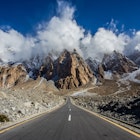
Jul 11, 2018 • 7 min read

Aug 5, 2024 • 6 min read
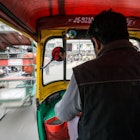
Jul 18, 2024 • 5 min read

Jul 9, 2024 • 3 min read

Jun 26, 2024 • 9 min read
A Passage to India
By e.m. forster.
- A Passage to India Summary
E.M. Forster 's A Passage to India concerns the relations between the English and the native population of India during the colonial period in which Britain ruled India. The novel takes place primarily in Chandrapore, a city along the Ganges River notable only for the nearby Marabar caves. The main character of the novel is Dr. Aziz , a Moslem doctor in Chandrapore and widower. After he is summoned to the Civil Surgeon's home only to be promptly ignored, Aziz visits a local Islamic temple where he meets Mrs. Moore , an elderly British woman visiting her son, Mr. Heaslop, who is the City Magistrate. Although Aziz reprimands her for not taking her shoes off in the temple before realizing she has in fact observed this rule, the two soon find that they have much in common and he escorts her back to the club.
Back at the club, Mrs. Moore meets her companion, Adela Quested , who will likely marry her son. Adela complains that they have seen nothing of India, but rather English customs replicated abroad. Although a few persons make racist statements about Indians, Mr. Turton , the Collector, proposes having a Bridge Party (to bridge the gulf between east and west). When Mrs. Moore tells her son, Ronny, about Aziz, he reprimands her for associating with an Indian. When Mr. Turton issues the invitations to the Bridge Party, the invitees suspect that this is a political move, for the Collector would not behave so cordially without a motive, but accept the invitations despite the suspicion.
For Adela and Mrs. Moore, the Bridge Party is a failure, for only a select few of the English guests behave well toward the Indians. Among these is Mr. Fielding, the schoolmaster at the Government College, who suggests that Adela meet Aziz. Mrs. Moore scolds her son for being impolite to the Indians, but Ronny Heaslop feels that he is not in India to be kind, for there are more important things to do; this offends her sense of Christian charity.
Aziz accepts Fielding's invitation to tea with Adela, Mrs. Moore, and Professor Narayan Godbole . During tea they discuss the Marabar Caves, while Fielding takes Mrs. Moore to see the college. Ronny arrives to find Adela alone with Aziz and Godbole, and later chastises Fielding for leaving an Englishwoman alone with two Indians. However, he reminds Ronny that Adela is capable of making her own decisions. Aziz plans a picnic at the Marabar Caves for Miss Quested and Mrs. Moore. Adela tells Ronny that she will not marry him, but he nevertheless suggests that they take a car trip to see Chandrapore. The Nawab Bahadur , an important local figure, agrees to take them. During the trip, the car swerves into a tree and Miss Derek , an Englishwoman passing by at the time, agrees to take them back to town. However, she snubs the Nawab Bahadur and his chauffeur. Adela speaks to Ronny, and tells him that she was foolish to say that they should not be married.
Both Aziz and Godbole fall sick after the party at Mr. Fielding's home, so Fielding visits Aziz and they discuss the state of politics in India. Aziz shows Fielding a picture of his wife, a significant event considering his Islamic background and an important demonstration of their friendship.
Aziz plans the expedition to the Marabar Caves, considering every minute detail because he does not wish to offend the English ladies. During the day when they are to embark. Mohammed Latif , a friend of Aziz, bribes Adela's servant, Antony , not to go on the expedition, for he serves as a spy for Ronny Heaslop. Although Aziz, Adela and Mrs. Moore arrive to the train station on time, Fielding and Godbole miss the train because of Godbole's morning prayers. Adela and Aziz discuss her marriage, and she fears she will become a narrow-minded Anglo-Indian such as the other wives of British officials. When they reach the caves, a distinct echo in one of them frightens Mrs. Moore, who decides she must leave immediately. The echo terrifies her, for it gives her the sense that the universe is chaotic and has no order.
Aziz and Adela continue to explore the caves, and Adela realizes that she does not love Ronny. However, she does not think that this is reason enough to break off her engagement. Adela leaves Aziz, who goes into a cave to smoke, but when he exits he finds their guide alone and asleep. Aziz searches for Adela, but only finds her broken field glasses. Finally he finds Fielding, who arrived at the cave in Miss Derek's care, but he does not know where Adela is. When the group returns to Chandrapore, Aziz is arrested for assaulting Adela.
Fielding speaks to the Collector about the charge, and claims that Adela is mad and Aziz must be innocent. The Collector feels that this is inevitable, for disaster always occurs when the English and Indians interact socially. Fielding requests that he see Adela, but McBryde, the police superintendent, denies this request. Fielding acts as Aziz's advocate, explaining such things as why Aziz would have the field glasses. Aziz hires as his lawyer Armitrao , a Hindu who is notoriously anti-British. Godbole leaves Chandrapore to start a high school in Central India.
The Anglo-Indians rally to Miss Quested's defense and call a meeting to discuss the trial. Fielding attends, and makes the mistake of actually referring to her by name. The Collector advises all to behave cautiously. When Ronny enters, Fielding does not stand as a sign of respect. Mr. Turton demands an apology, but Fielding merely resigns from the club and claims he will resign from his post if Aziz is found guilty.
Adela remains in the McBryde's bungalow, where the men are too respectful and the women too sympathetic. She wishes to see Mrs. Moore, who kept away. Ronny tells her that Fielding wrote her a letter to her pleading Aziz's case. Adela admits to Ronny that she has made a mistake and that Aziz is innocent. When Adela sees Mrs. Moore, she is morose and detached. She knows that Aziz is innocent and tells Adela that directly. Mrs. Moore wishes to leave India, and Ronny agrees, for she is doing no one any good by remaining. Lady Mellanby , the wife of the Lieutenant-Governor, secures Mrs. Moore quick passage out of India.
During the trial, the Indians in the crowd jeer Adela for her appearance, and Mahmoud Ali , one of Aziz's lawyers, claims that Mrs. Moore was sent away because she would clear Aziz's name. When McBryde asks Adela whether Aziz followed her, she admits that she made a mistake. Major Callendar attempts to stop the proceedings on medical grounds, but Mr. Das , the judge, releases Aziz. After the trial, Adela leaves the courtroom alone as a riot foments. Fielding finds her and escorts her to the college where she will be safe. Disaster is averted only when Dr. Panna Lal , who was to testify for the prosecution, publicly apologizes to Aziz and secures the release of Nureddin , a prisoner rumored to have been tortured by the English.
At the college, Fielding asks Adela why she would make her charge, but she cannot give a definite answer. He suggests that she was either assaulted by the guide or had a hallucination. Adela seems to believe that she had a hallucination, for she thinks she had a hallucination of a marriage proposal when there was none. Fielding warns her that Aziz is very bitter. Ronny arrives and tells them that his mother died at sea.
After a victory banquet for Aziz, he and Fielding discuss his future plans. Fielding implores Aziz not to sue Adela, for it will show him to be a gentleman, but Aziz claims that he is fully anti-British now. Fielding reminds Aziz what a momentous sacrifice Adela made, for now she does not have the support nor friendship of the other English officials. Fielding tells Aziz that Mrs. Moore is dead, but he does not believe him. The death of Mrs. Moore leads to suspicion that Ronny had her killed for trying to defend Aziz. Although there was no wrongdoing in the situation, Ronny nevertheless feels guilty for treating his mother so poorly. Adela decides to leave India and not marry Ronny.
Fielding gains new respect for Adela for her humility and loyalty as he attempts to persuade Aziz not to take action against Adela. Adela leaves India and vows to visit Mrs. Moore's other children (and Ronny's step-siblings) Stella and Ralph. Aziz hears rumors and begins to suspect that Fielding had an affair with Adela. He believes these rumors out of his cynicism concerning human nature. Because of this suspicion, the friendship between Aziz and Fielding begins to cool, even after Fielding denies the affair to Aziz. Fielding himself leaves Chandrapore to travel, while Aziz remains convinced that Fielding will marry Adela Quested.
Forster resumes the novel some time later in the town of Mau, where Godbole now works. Godbole currently takes part in a Hindu birthing ceremony with Aziz, who now works in this region. Fielding visits Mau; he has married, and Aziz assumes that his bride is Miss Quested. Aziz stopped corresponding with Fielding when he received a letter which stated that Fielding married someone Aziz knows. However, he did not marry Adela, as Aziz assumes, but rather Mrs. Moore's daughter, Stella. When Fielding meets with Aziz and clears up this misunderstanding, Aziz remains angry, for he has assumed for such a long time that Fielding married his enemy.
Nevertheless, Aziz goes to the guest house where Fielding stays and finds Ralph Moore there. His anger at Fielding cools when Ralph invokes the memory of Mrs. Moore, and Aziz even takes Ralph boating on the river so that they can observe the local Hindu ceremonies. Their boat, however, crashes into one carrying Fielding and Stella. After this comical event, the ill will between Aziz and Fielding fully dissipates. However, they realize that because of their different cultures they cannot remain friends and part from one another cordially.

A Passage to India Questions and Answers
The Question and Answer section for A Passage to India is a great resource to ask questions, find answers, and discuss the novel.
Compare and contrast between the two characters Dr. Aziz and Professor Godbole in A Passage to India.
Dr. Aziz is a Moslem doctor living in Chandrapore at the beginning of the novel, he is a widower with three children who meets Mrs. Moore, an elderly English widow who has three children herself and becomes friends with her. Although he is...
Discuss how A Passage to India reveals the complexities of a colonial discourse.
Colonial discourse was inevitably a mess in British India. Cultural misunderstanding or clash is the main theme of this novel. Fundamental differences in race, language, sexual equality and religion separate the Indians from the British sent to...
mr mcbryde proved that aziz was immoral by
4. presenting aziz s letter about going to see prostitutes.
Study Guide for A Passage to India
A Passage to India study guide contains a biography of E.M. Forster, literature essays, quiz questions, major themes, characters, and a full summary and analysis.
- About A Passage to India
- Character List
- Part One, Chapters 1-5 Summary and Analysis
- Related Links
Essays for A Passage to India
A Passage to India literature essays are academic essays for citation. These papers were written primarily by students and provide critical analysis of A Passage to India.
- Public School Mentality in Howards End and Passage to India
- As the Player Decides: Sex, Disjunction and the Narrative Voice in Forster
- Echo the Silence: Mrs. Moore's Spiritual Muddle in Forster's A Passage to India
- The Three Phases of a Journey
- The Marabar Tragedy: A Disaster Foreseen
Lesson Plan for A Passage to India
- About the Author
- Study Objectives
- Common Core Standards
- Introduction to A Passage to India
- Relationship to Other Books
- Bringing in Technology
- Notes to the Teacher
- A Passage to India Bibliography
Wikipedia Entries for A Passage to India
- Introduction

Enjoy fast, free delivery, exclusive deals, and award-winning movies & TV shows with Prime Try Prime and start saving today with fast, free delivery
Amazon Prime includes:
Fast, FREE Delivery is available to Prime members. To join, select "Try Amazon Prime and start saving today with Fast, FREE Delivery" below the Add to Cart button.
- Cardmembers earn 5% Back at Amazon.com with a Prime Credit Card.
- Unlimited Free Two-Day Delivery
- Streaming of thousands of movies and TV shows with limited ads on Prime Video.
- A Kindle book to borrow for free each month - with no due dates
- Listen to over 2 million songs and hundreds of playlists
- Unlimited photo storage with anywhere access
Important: Your credit card will NOT be charged when you start your free trial or if you cancel during the trial period. If you're happy with Amazon Prime, do nothing. At the end of the free trial, your membership will automatically upgrade to a monthly membership.
Buy new: .savingPriceOverride { color:#CC0C39!important; font-weight: 300!important; } .reinventMobileHeaderPrice { font-weight: 400; } #apex_offerDisplay_mobile_feature_div .reinventPriceSavingsPercentageMargin, #apex_offerDisplay_mobile_feature_div .reinventPricePriceToPayMargin { margin-right: 4px; } $17.75 $ 17 . 75 FREE delivery Saturday, August 17 on orders shipped by Amazon over $35 Ships from: Amazon.com Sold by: Amazon.com
Return this item for free.
We offer easy, convenient returns with at least one free return option: no shipping charges. All returns must comply with our returns policy.
- Go to your orders and start the return
- Select your preferred free shipping option
- Drop off and leave!
Save with Used - Very Good .savingPriceOverride { color:#CC0C39!important; font-weight: 300!important; } .reinventMobileHeaderPrice { font-weight: 400; } #apex_offerDisplay_mobile_feature_div .reinventPriceSavingsPercentageMargin, #apex_offerDisplay_mobile_feature_div .reinventPricePriceToPayMargin { margin-right: 4px; } $14.39 $ 14 . 39 FREE delivery Wednesday, August 21 Ships from: -Bookworm- Sold by: -Bookworm-

Download the free Kindle app and start reading Kindle books instantly on your smartphone, tablet, or computer - no Kindle device required .
Read instantly on your browser with Kindle for Web.
Using your mobile phone camera - scan the code below and download the Kindle app.

Image Unavailable

- To view this video download Flash Player

Follow the author

Journey through India: Two pensioners backpack their way across the subcontinent... what could go wrong? Paperback – November 15, 2021

Purchase options and add-ons
Ever wondered what it's like to backpack across India? Two sixty-somethings go for one more adventure and just about survive a five-week journey involving world famous sights, crazy incidents and lots of cows.
- Part of series Journey through
- Print length 304 pages
- Language English
- Publication date November 15, 2021
- Dimensions 5 x 0.69 x 8 inches
- ISBN-10 1916305644
- ISBN-13 978-1916305649
- See all details

Customers who bought this item also bought

Product details
- Publisher : MGP Publishing (November 15, 2021)
- Language : English
- Paperback : 304 pages
- ISBN-10 : 1916305644
- ISBN-13 : 978-1916305649
- Item Weight : 2.31 pounds
- Dimensions : 5 x 0.69 x 8 inches
- #102 in General India Travel Guides
- #1,215 in Travelogues & Travel Essays
- #1,351 in Tourist Destinations & Museums Guides
About the author
Mark gregory probert.
Born in Hampshire in 1954, Mark Probert has spent most of his life as a mapmaker. After twenty-eight years working for Ordnance Survey, he set up his own company in 2003 and spent the following seventeen years travelling extensively overseas. Now retired and living in rural Dorset, he spends his time writing, walking, cycling and motorcycling. Another Journey through Britain is his first book and describes a two-week road trip from one end of the country to the other. His second book, published in November 2021, is another travel memoir that describes a coast to coast backpacking adventure across India. Mark traversed the sub-continent in January 2020 with his friend of 40 years, Nick Lindsay. Entrusted out on their own for five weeks, the boys narrowly avoided arrest on day one in an incident that set the tone for the rest of their adventure. Expect railways, curries, near-death road incidents, religious shrines, camels… and lots of cows.
Customer reviews
- 5 star 4 star 3 star 2 star 1 star 5 star 61% 31% 5% 1% 2% 61%
- 5 star 4 star 3 star 2 star 1 star 4 star 61% 31% 5% 1% 2% 31%
- 5 star 4 star 3 star 2 star 1 star 3 star 61% 31% 5% 1% 2% 5%
- 5 star 4 star 3 star 2 star 1 star 2 star 61% 31% 5% 1% 2% 1%
- 5 star 4 star 3 star 2 star 1 star 1 star 61% 31% 5% 1% 2% 2%
Customer Reviews, including Product Star Ratings help customers to learn more about the product and decide whether it is the right product for them.
To calculate the overall star rating and percentage breakdown by star, we don’t use a simple average. Instead, our system considers things like how recent a review is and if the reviewer bought the item on Amazon. It also analyzed reviews to verify trustworthiness.
Customers say
Customers find the book exceptionally enjoyable and easy to read. They also say it's charming and doesn't want to end.
AI-generated from the text of customer reviews
Customers find the book exceptionally enjoyable and say it makes them want to leave for India tomorrow.
"...That makes it a joy to read . There is some history sprinkled throughout, enough for context & to spark my interest in pursuing some topics further...." Read more
"...An exceptionally enjoyable book that will make you want to leave for India tomorrow. I can't believe I am the first review from the U.S." Read more
" enjoyable good read ..." Read more
Customers find the book easy to read and charming.
"This was an easy read ; so charming that i didn't want it to end...." Read more
"...I don't know cricket at all, but I found that chapter very readable and as enjoyable as the rest of the book...." Read more
"...It was an easy light informative read . I enjoyed it - and has encouraged us to read the heavier tomes on the darker eras of colonial history." Read more
- Sort reviews by Top reviews Most recent Top reviews
Top reviews from the United States
There was a problem filtering reviews right now. please try again later..
Top reviews from other countries
- Amazon Newsletter
- About Amazon
- Accessibility
- Sustainability
- Press Center
- Investor Relations
- Amazon Devices
- Amazon Science
- Sell on Amazon
- Sell apps on Amazon
- Supply to Amazon
- Protect & Build Your Brand
- Become an Affiliate
- Become a Delivery Driver
- Start a Package Delivery Business
- Advertise Your Products
- Self-Publish with Us
- Become an Amazon Hub Partner
- › See More Ways to Make Money
- Amazon Visa
- Amazon Store Card
- Amazon Secured Card
- Amazon Business Card
- Shop with Points
- Credit Card Marketplace
- Reload Your Balance
- Amazon Currency Converter
- Your Account
- Your Orders
- Shipping Rates & Policies
- Amazon Prime
- Returns & Replacements
- Manage Your Content and Devices
- Recalls and Product Safety Alerts
- Conditions of Use
- Privacy Notice
- Consumer Health Data Privacy Disclosure
- Your Ads Privacy Choices

IMAGES
COMMENTS
It had always been on our 'bucket list' so India it was. We've written a few posts but if you missed them here is a summary of our route with links to the relevant diary entries and photographs. Here is a map of our route. Our journey through India was Delhi - Mathura - Gwalior - Orchha - Lucknow - Allahabad - Varanasi ...
1 4.9k. Welcome to a journey through the rich and diverse culture of India. From its ancient traditions to modern influences, this article will take you on an exploration of the customs, beliefs, and practices that have shaped Indian society over thousands of years. Situated in the heart of Asia, India is a land of vibrant colors, exotic ...
Dar al-Islam in the 14th Century. The first map below shows the Muslim World (or Dar al-Islam) about 1300. The second map shows the route of Ibn Battuta's journeys. Ibn Battuta mainly traveled to places with Muslim governments in the areas inside the black border marking the Dar al-Islam. Beyond that, Muslim traders had already ventured out ...
India, situated on the banks of the holy River Ganges, and offering a true taste of India at its most authentic. You'll return home with a lifetime of memories, and a real understanding of the mysterious, magical soul of India. A Journey Through India 17 days from only £3,245 per person 24 Visit distantjourneys.co.uk
But India is much more than this. Traveling in India can be a life-changing experience. The mountains, forests, plains, deserts, rivers and oceans are a testimony to the diversity of the landscape of India. The ancient temples, mosques, churches and monasteries speak volumes about the rich heritage of the country.
India Through a Traveller's Eyes Question and Answers. B.2.1. Read the following sentences and write 'T' for true and 'F' for false statements: The writer blames the English rule for all the ills of India. Colonization had made the Indian enervated and exhausted.
Journey to the End of the Earth Summary, explanation, and question answers for Chapter 3, "Journey to the End of the Earth" from the CBSE Class 12 English Vistas book. Explore the content of Lesson 3, "Journey to the End of the Earth," from the CBSE Class 12 English Vistas book. The comprehensive package includes a summary, detailed explanations of the lesson, elucidation of ...
Journey across India by train The world's second biggest railways system is also among its most atmospheric and busiest; its thousands of trains carrying an estimated 23 million passengers a day.
India is confronting, dirty and chaotic but it is also steeped in history, exceedingly beautiful and one of the most fascinating countries on the planet. By Rosalind Cuthbertson of Frequent Traveller. Australians Ros and Alan Cuthbertson quit their conventional 9 to 5 lifestyle to travel the world full time.
Traveling Through India: The Why. I soon realized the reason I went traveling through India was really no different from the reason I travel to most places: to experience something different, to open my mind, to see reality in the flesh, and to grow as a person. And India is certainly a place to do this. You will see, hear, feel, taste and ...
A Passage to India: summary. A Passage to India begins in Chandrapore, a city in India. Two Englishwomen are visiting: Adela Quested and Mrs. Moore. They are there to see Ronny Heaslop, a magistrate in Chandrapore. Ronny is Adela's fiancé and Mrs. Moore's son. The two women dream of experiencing the real India during their journey.
Michael H. Fisher. indian men and women have been traveling to England since about 1600, roughly as long as Englishmen have been sailing to India.1 Most histories of England, India, and colonialism, however, tend to neglect accounts of and by these Indian trav-elers. The mainstream of colonialism in South Asia undoubtedly consisted of the ...
A Passage to India. Talking about the book… Forster's portrayal of India is not of its monuments or its grand history, but of its soul, its chaos, and its spiritual essence.
A Passage to India Summary and Analysis of Part One, Chapters 6-11. Chapter Six: Aziz did not go to the Bridge Party, but instead he dealt with several surgical cases. It was the anniversary of his wife's death; they married before they had met and he did not love her at first, but that changed after the birth of their first child.
1. India's Golden Triangle. Best road trip for Mughal monuments. Delhi-Delhi; 1120km (696 miles); allow five days. Short and sweet, the loop from Delhi to Agra and Jaipur packs a lot of wonders into a few days of driving. Your adventure begins in Delhi, where the ruins of eight cities tell the story of India's great Islamic empires.
A journey through India embodies the raw, authentic, and beautifully contradictory elements of travel that got me hooked all those years back. Since my first trip in 2018, I've visited India multiple times & constantly find myself coming back. ... Hindus believe that people from different parts of India, and with different customs, ...
E.M. Forster's A Passage to India concerns the relations between the English and the native population of India during the colonial period in which Britain ruled India. The novel takes place primarily in Chandrapore, a city along the Ganges River notable only for the nearby Marabar caves. The main character of the novel is Dr. Aziz, a Moslem doctor in Chandrapore and widower.
A Passage to India (1924) by E.M. Forster is a captivating novel that explores the complexities of British-Indian relationships during the colonial era. Here's why this book is worth reading: The book offers a nuanced examination of cultural misunderstandings, providing a thought-provoking insight into the collision of two different worlds.
Enjoyed the journey My plans to travel through India were put on hold due to the pandemic, reading "Journey through India" has increased my desire to visit this amazing country. The book provided honest , factual and humorous travel anecdotes from a whirlwind tour of tourist attractions in India. Like.
Another Journey through Britain is his first book and describes a two-week road trip from one end of the country to the other. His second book, published in November 2021, is another travel memoir that describes a coast to coast backpacking adventure across India.